




By John Yoswick, Autobody News
Collision repairers for decades have understood the concept of “judgement times,” having to determine while looking at the vehicle how much labor will be required to repair a particular dent in a panel, for example.

Given changes in the estimating systems in the past year, determining blend time has become another of the items requiring an “on-the-spot evaluation.”
Though the 50% of full refinish time remains the default setting for calculating blend times in the CCC Intelligent Solutions and Solera (Audatex) estimating systems, users can change that percentage, and the two companies changed their guidance to say blend times vary and require a vehicle-by-vehicle evaluation. Mitchell continues to use the 50% formula but has given users the ability to change that percentage in the system.
A committee presentation at the Collision Industry Conference (CIC) in Denver this past summer highlighted how many other collision repair labor operations there are that, like blending, require the judgement or “on-thespot evaluation” by the estimator.
Danny Gredinberg of the Database Enhancement Gateway (DEG) noted there are many notincluded labor procedures that body technicians in shops may be performing. He said the “labor general information” section of the Mitchell P-pages lists 17 bodylabor-related items that would be additions to its published times, including broken glass clean-up and tar and grease removal.
“It should not be inferred that a component with no established labor time has been included in another component’s replacement allowance,” the Mitchell P-pages state.
The Motor Information Guide to Estimating — the basis for the CCC estimating system — lists 43 not-included items in the body section alone, including “road test vehicle” and “anti-corrosion material restoration/application.”
The Solera (Audatex) database reference manual lists 61 bodyrelated “labor exclusions,” including “assembly of new parts that come unassembled,” and “disassembly of recycled parts and assemblies.”
“So there’s many different things you may need to consider in the repair process as an ‘on-the-spot’
By Ben Shimkus Autobody News
Collision repair shop owners and automotive insurance company lawyers clashed at a recent public meeting, a year after Vermont lawmakers asked regulators to examine pricing policies.
State officials hope to hear from consumers about the price of automotive insurance. But the regulatory scrutiny highlighted an everexpanding chasm between local shops and automotive insurance brands.
In June 2023, Vermont lawmakers asked the state’s Department of Financial Regulations (DFR) to analyze the auto insurance prices for Vermont drivers. The law sought to ensure that insurance brands’ pricing
policies were “fair and reasonable.”
“The department is required to assess a number of specific issues, and to solicit and receive feedback from stakeholders,” Emily Brown, Vermont’s deputy commissioner for insurance, told Autobody News.
“Auto body shops are a key group of stakeholders, and we want to hear their perspectives.”
The department met publicly Sept. 10 to hear from consumers. The meeting was held in the Montpelier City Center and livestreamed for digital participants on Teams.
Instead, the only participants who spoke were two collision repair shop owners and representatives from the automotive insurance brands.
l CONTINUED ON
By Brian Bradley Autobody News
The Maine Automotive Right to Repair Working Group during its September meeting considered issues including independent repairers’ current access to OEMs’ diagnostic data, cost effectiveness of diagnostic systems used by repair shops, and creation of an online portal for repairers and OEMs to share data.
“It’s turning into a tug-of-war match with manufacturers and independent repair shops,” Wes Luther, technician for VIP Tires and Service in Kittery, ME, said during the Sept. 26 meeting. “If you do not have the right stuff and have access to it, the manufacturers are going to monopolize everything, because the only thing we’re going to be stuck doing is tires and basic, basic stuff.”
A new law created Maine’s right to repair working group in August. The law tasks the working group with drafting legislative recommendations

See it at our booth #31017 upstairs, South Hall

The liner reimagined.
When used with SATA spray guns, there is no need for an adapter.
Particle free premium strainers that click into the lid before painting.
Lids offer a quadruple bayonet safety system
Hard cup, liner and lid are made with high quality materials.
Complete and detailed scale system with an upside-down scale
LCS: .40 liter, .65 liter, .85 liter


Mike Anderson Shops’ Needs from OEM Parts Wholesalers Go Beyond Prices, Discounts 24
Abby Andrews Connecting Vehicles Could Be Useful in Collision Repair 26
Negotiate with Insurance Companies to Get Compensated for Proper Repairs 34
Using DRPs to Fuel Your Collision Repair Shop’s Growth 8
Brian Bradley Analysts: Fed Rate Cut Could Drive Brownfield Acquisitions in Collision Repair 30
Maine Right-to-Repair Meeting Features Lively Debate, Considers Access to OEM Data 1
New Hampshire Law Impacts Collision Repair Shops Doing Cross-State Car Sales, Upgrades 38
Elizabeth Crumbly
3D Printing Offers Collision Repair Innovative Option for Parts, Shipping, Design 48
Mitchell Donates $1.5M in Tech to Boost Collision Engineering Program 20
Why MSOs are Stepping Up to Purchase Dealership Collision Centers 4
Paul Hughes
Arkansas MSO Owners Find Out How Much Work Goes into Selling to Consolidator 18 Should Independent Body Shops Care
About Growing State-Level Push for Consumer Privacy? 10
Stacey Phillips Ronak
3M Skills Development Center Celebrates First Anniversary of Educating, Upskilling Technicians 6
Auto Additive on Track to Provide HighQuality, OEM-Grade 3D-Printed Parts, Tools & Jigs 40
Lucid Hosts First Certified Body Repair Network Conference 22
Leona Scott
Exclusive Look: 2024 MSO Symposium
Agenda Offers Critical Insights for Collision Industry Leaders 28
How Body Shops Can Navigate the Challenges of EV Collision Repairs 46
Jorge Sandoval Goes from Selling Cheese to 2024 Auto Glass Technician Olympics Champ 52
Ben Shimkus
Vermont Collision Shop Owners, Insurance Companies Fight Over Pricing Regulations 1
John Yoswick
Blend Times Now Require ‘On-the-Spot’ Determination 1
Collision Shops, Vendors Can Help Counter Grim Entry-Level Tech Numbers 16
Low-Voltage Batteries in EVs, Hybrids Need Particular Attention in Collision Repair Shops 36
Leader of Ring That Stole 500 Catalytic Converters Sentenced 50 New Jersey Maaco’s Custom-Painted Cars Shine in Upcoming Streaming Series 54
By Elizabeth Crumbly Autobody News
Sales of dealership collision centers pose multifaceted benefits, both for dealerships selling and the MSOs that often purchase. These changes aren’t without challenges, but a consolidating industry means these moves will likely become more common in coming years.
“It’s a slow and steady trend that we’ve seen for many years,” said Madeleine Roberts Rich, senior associate with Focus Advisors, a firm that represents MSO owners as they grow or exit. “The reason is

that the collision repair industry is consolidating. As we’ve seen, there’s a handful of consolidators that are establishing more and more market share primarily through acquisitions.”
When Dealerships Sell
So, why are dealerships selling? It’s primarily to streamline operations and enhance focus on automotive sales, reducing the added management needs for collision repair operations. Keeping up with technology and the hiring competition for highly trained technicians can be prohibitive in keeping a shop going.
“The game is much more expensive than it has been in the past, and the tech workforce really drives volumes,” explained David Roberts, Focus Advisors founder and managing director. “So, if you don’t have a steady volume of vehicles going through your collision repair shop, people are going to look around where they can make more money, and they’ll almost invariably find an MSO in the area that is doing more work.”
And dealerships that find a buyer free up significant funds.
“They have cash that they can then use as capital to invest in their core competency if it’s expanding their existing dealership operations in place or then trying to expand to a new location,” Rich explained. “They
have freed up cash in this liquidity event, and in a high interest rate environment like we’re in, access to cash can be quite important.”
There’s also built-in opportunity for sale of more parts for dealerships as they continue to funnel repairs from vehicle buyers toward shops they’ve sold. This scenario is beneficial when a dealership sells the shop but keeps the real estate in a long-term lease situation.
One drawback Roberts noted in that scenario is that buyers will likely extract regular repair discounts from a dealer, but the volume of business can make up for that factor. Indeed, Rich said, lifetime customers often mean lifetime servicing of a vehicle or multiple vehicles: It’s one more reason to make sure a collision center is in capable hands.
MSOs looking to purchase dealership collision centers get the benefits of having a staffed location with ready equipment, and ostensibly, they start out with dealership customers. That doesn’t mean there aren’t potential hurdles, though.
These purchasers, explained Roberts, need to be sure they’ll really have access to a steady pipeline of customers as dealerships’ modes of operation often differ from those of shops that have been historically focused strictly on repair.
“If you’re an MSO buying a dealer
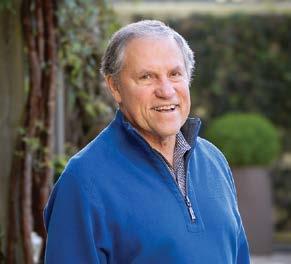
shop, you really do have to have your act together,” Roberts said. “The dealer is trying to manage a bunch of different things, and if they’ve got a bunch of different nameplates and they’re really into selling new and used cars and servicing those cars, then getting access to repairable vehicles today comes much more through insurance companies. And most dealers don’t have arrangements with insurance companies in which they participate in direct repair programs.”
Making sure a shop is the right fit is also important for an MSO looking
to purchase.
Joe Hudson’s Collision Center, an-Alabama-based MSO, which recently entered the dealership shop acquisition trend by buying Bedford Nissan Collision Center in Bedford, OH, is an example of this factor. Bedford Nissan’s existing certifications made it a fit for acquisition, Joe Hudson’s Chief Operating Officer Cameron Dickson explained in a press release.
“Identifying growth opportunities that align with our standards for quality and outstanding customer service is crucial,” Dickson said. “Bedford Nissan Collision Center’s numerous OEM certifications and I-CAR Gold Class recognition make it an ideal partner. This acquisition allows us to quickly integrate our operations and continue delivering the top-notch service our customers have come to expect.”
Dealership sales are on the rise right now, according to a report released in June by Kerrigan Advisors, an auto buy/sell advisory firm. The first quarter of this year, the firm reported, saw a 38% rise in dealership sales compared to first quarter of 2023.
It’s important for dealers to consider how their collision operations factor into these sales, and transition of body shop ownership can happen in a number of ways. Some dealers just want to be out of the game altogether, and that can mean moving the shop off their premises.
“They just want to sell the business,” Roberts explained. “They don’t get as much for the business, but they repurpose the body shop into more service space.”
In this case, he said, a buying MSO might move the business, its equipment and its employees to an existing shop that has capacity.
Dealers will also participate in the aforementioned long-term lease situation. This, Rich pointed out, makes for a built-in credit tenant and a lowered capitalization rate. Lower cap rates (annual net operating income divided by market value) indicate less risk and higher value for commercial real estate.
But how does a dealership reach this point? Long-term lease rates, Rich explained, are based as a percentage of trailing 12-month sales for the body shop. The valuation of the body shop itself is then based on adjusted EBITDA (earnings before interest, taxes, depreciation and amortization) figures.
Getting accurate numbers through this process is especially important as
the selling of a business is a bespoke thing, and it’s a process worth pursuing fully, Rich said.
“What we, as investment bankers, hate to see is for owner operators to sell themselves short by not fully understanding what their true adjusted EBITDA is,” she explained. “Because with selling a business, it’s not like selling a house where there’s tons of records on Redfin or Zillow.”
Some dealers want to sell the whole business, dealership and all, and in those cases, it can be beneficial to look at chunking up the transaction, as selling the body shop separately can result in more money, Roberts contended.
Separating the body shop from the rest of the sale allows consolidators and MSOs to step into the equation. Sometimes in these situations, the real estate changes hands, and there’s a lease opportunity for the new owner. Body shop acquisition may not be a priority for another dealer looking to acquire the business, so the profit opportunity can be less there.

“If they just want to sell their body shop, the process is different because dealers are always being approached by other dealers that want to buy to bulk up in their market, but they’re not often being approached by people that want to buy their body shop,” Roberts explained.
However a sale takes place, offloading a body shop can be relief for a dealership owner looking to free up cash. And it’s a way for dealers to simplify operations and for MSOs to step up and do what they do best.
“The body shop business and the business of selling cars are very different, and they’re both getting a lot more complex,” Rich said. “So, splitting one’s focus, especially if the body shop, as involved as it is, is only a very small fraction of your annual sales — it’s just going to pull focus. Doubling down on what you do best and then getting a best-in-class operator to run the body shop side is an advantage.”



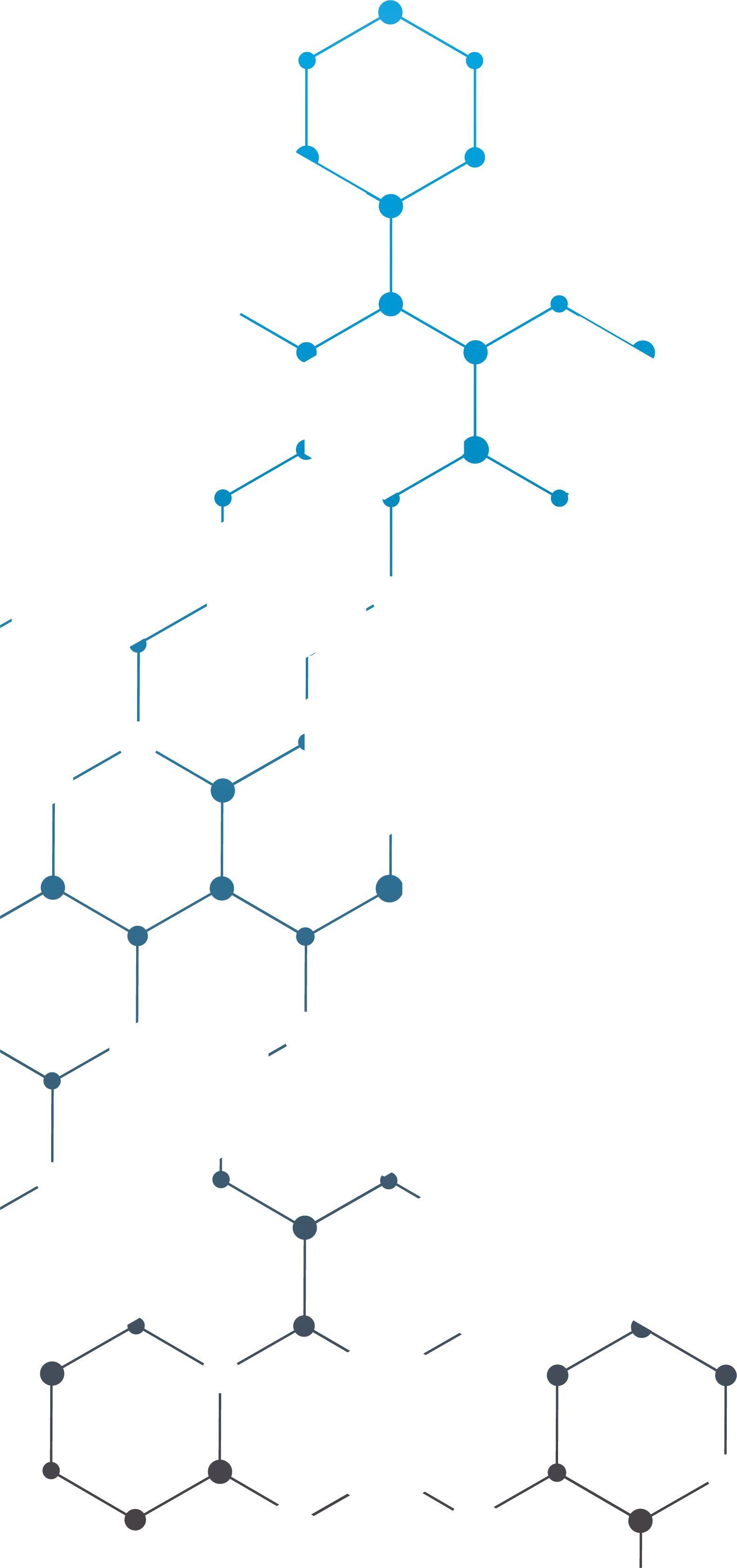





By Stacey Phillips Ronak Autobody News
Just over a year ago, the 3M Skills Development Center opened its doors in St. Paul, MN, to help educate and upskill the collision repair industry. Since the first class was held in June 2023, more than 55 events
3M is finding the classes are also attracting people from outside collision repair facilities. For example, students from different military bases have been interested in attending the courses.
“We’re fixing cars and they’re fixing planes, automobiles and tanks,” said Spah. “You might be next to

have taken place with more than 1,100 attendees from all experience levels. They include technicians, CEOs and managers, OEM partners, distributors, performance groups and the military.
Adam Spah , application engineering manager at 3M, said the 15,000-square-foot 3M Skills Development Center has been a source of training for students from across the country in 42 U.S. states, as well as Canada, with 80% of attendees from outside Minnesota and the surrounding states.
“It has been an exciting journey over the last 12 months,” said Spah. “The industry is very busy, but proactive business owners and shop managers are realizing the importance of investing in training technicians to increase the quality of work they put in each day, even though it’s a challenge to send a technician away for three or four days.”
The backbone of the Skills Development Center is multi-day hands-on training that focuses on the most updated body repair and paint preparation and refinishing methods. The body repair and paint classes are each held one week a month and offered to anyone who has an interest in taking them, whether that’s a college student, someone working out of their garage or technicians who have been part of the industry for just a few months or more than 30 years.
“We’re really focused on getting people through the classes to help upskill the industry,” said Spah.
around knowledge, skills and abilities so students learn what they need to repair vehicles properly. Within the open enrollment courses, 3M focuses on being product agnostic, hands-on, OEM-aligned and process-oriented.
“You would think that coming into a 3M facility, you’re just going to learn about 3M products, but we keep it very product agnostic, so you could potentially use various brands during the classes,” Spah explained.
With much of the industry training being conducted virtually during the pandemic, 3M has put a high emphasis on 90% of the learning at the facility being hands-on. Rather than looking at a screen and flipping through slides, Spah said students are doing the activities they are taught.
depending on that OEM,” said Spah. “There is also a focus on the science of ‘why’ something is done so students will retain the skills taught.”

Technicians learn the proper OEMapproved techniques for squeeze type welding on various components of a repair.
a bodyman or painter in the class, but we’ll also have somebody from a military base in that same class learning together.”
When training classes aren’t being held, the center typically plans meetings and events with industry organizations, OEMs, vocational technical instructors, collision performance groups, MSOs, distributors and several others.
The Collision Repair Education Foundation (CREF) has brought in students to get a glimpse of the industry and encourage interest in working on vehicles.
“We explain to them that they can make really good money — even six figures — in this industry and have a good career,” said Spah. “Their eyes light up and they get excited.”
The 3M Skills Development Center works closely with OEMs to share information about what is taking place at the facility. Several auto manufacturers have visited over the past year.
“They want to learn what we’re teaching and how they can leverage our high level of education for their technician certification programs,” noted Spah. “We tell them how we dive deep into OEM repair manuals and find that it excites OEMs to know technicians are following the procedures.”
Since opening the center, Spah said there has been a solid increase in demand for open enrollment classes and site visits, which he predicts will continue to accelerate in 2024.
Training classes are centered
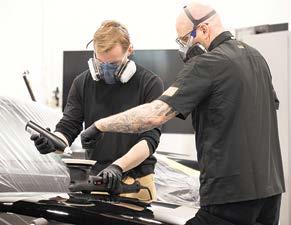
“Getting somebody out of their element and focusing on what they’re learning goes a long way,” he explained. “They are more likely to learn and retain the skills as well as the proper technique by doing the repair activities on a physical piece.”
To support the goal of handson training, the facility was built with a flexible layout that can be adjusted to fit the needs of those in attendance. In addition to a traditional classroom space, there is a hands-on work environment that features stations with electrical and air service. A 36-foot GFS XL paint booth is set up with three-stage filtration, which can accommodate 16 painters. There is also a dedicated welding area with stations equipped with fume extraction hoods.
Spah noted only about 40% of technicians look at repair manuals or procedures when they fix vehicles. As a result, 3M educators spend time teaching where to find the OEM procedures and how to fix a vehicle to its pre-collision condition.
“Trainers explain the standard operating procedures (SOPs) to follow to ensure the procedure is done the same way every time,
3M’s trainers are technical engineers with a strong collision repair background. Their backgrounds range from 20-40 years of collision experience, and include I-CAR certified instructors, paint company technical experts, and those with insurance experience. Some have authored several technical articles.
“We know vehicles are becoming more complex so we work closely with trainers to ensure the training is relevant to the cars being repaired,” said Spah.
The training programs complement those available through the online 3M Collision Repair Academy, the 3M Collision YouTube channel and virtual I-CAR Alliance training. In addition, live webinars are held at the facility where students can participate in a real-time Q&A.
Spah said they have noticed an uptick in skills as technicians leave and they’re becoming more efficient.
“They are reporting getting more repair orders through after going through our sessions,” he added.
After a course is completed, 3M asks for feedback from students to continually improve the program.
“The feedback we’ve had with the classes so far has been incredibly positive,” said Spah.
3M also welcomes feedback from the industry to ensure timely and relevant courses are offered. Looking ahead, potential classes include welding certification, front office training and repair planning. Spah said 3M is currently working toward a new curriculum with a new course set to debut soon. Look for new classes in early 2025.
For more information about courses offered through the 3M Skills Development Center, visit www.3M.com.

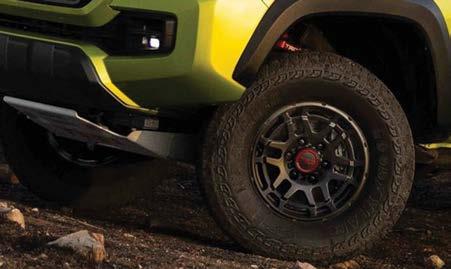

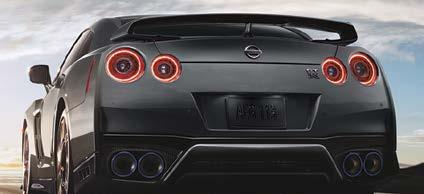
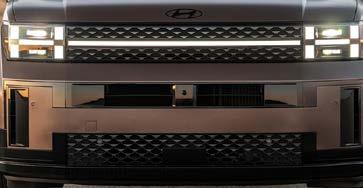
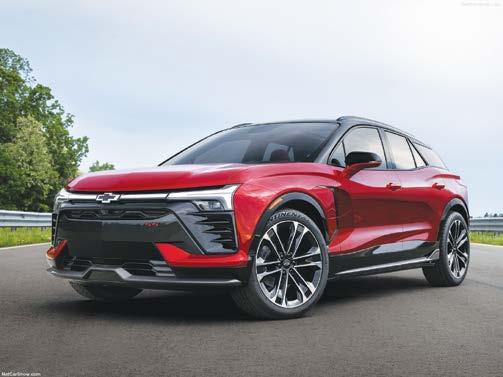





By Abby Andrews Autobody News
G&C Auto Body was founded in Santa Rosa, CA, in 1972 by Gene Crozat and Leo Gassell. Two satellite locations were opened in the 1990s. When the business was handed down to Crozat’s children, they decided to ramp up the growth. It now has 42 locations in 14 counties in Northern California.
Patrick Crozat, Gene’s son and the current COO of G&C Auto Body, appeared on The Collision Vision podcast, hosted by Cole Strandberg and driven by Autobody News, as part of its “Insurance Talk: Navigating Insurance and Repairs” series, to talk about how Direct Repair Program (DRP) agreements with insurance companies have fueled his family business’ explosive growth.
Crozat said DRPs have been a part of the collision repair industry since he got into it 22 years ago.
He described them as “contractual agreements where in turn for referrals from that insurance partner, you’re going to make concessions where you’re going to look out for the cost of the bill for them, and provide customer service.”
He said DRPs are valuable to insurance companies because they help foster a relationship with a body shop, which is the “face” of the repair process for the customer, while giving the insurance company some control over the customer’s experience.
“To ease the process between the claim and the body shop and the insurance company, I see a lot of benefits to the programs,” Crozat said.
DRPs have been “crucial” to G&C Auto Body’s growth, Crozat said. “I think it would be very, very hard for any body shop owner to grow to multiple locations without DRP relationships. I think it’s always been that way,” he added.
It’s difficult to run multiple stores in the same niche, Crozat said, whether it’s going after luxury brands or referrals from a local dealership.
Crozat said his dad was always an advocate for DRPs. “He wanted it to be a symbiotic relationship between the body shop and the insurance company, and that we’re both working towards taking care of our customer,” he said.
Pros and Cons of DRPs DRPs require a lot more administrative paperwork, and usually include a
discount on the shop’s stated labor rate.
“You are focusing on pleasing a second customer in a way,” Crozat said, referring to the insurance company.
There are often multiple body shops in an area with the same DRP, leading to competition for the insurance company’s referrals.
“I love competition. I think competition is always needed and it drives businesses to excellence,” Crozat said. “If someone owns the market and they don’t have to work hard for it, they don’t have to try and earn it every day. Human nature. I think people will get very complacent and they wouldn’t give the best job that they could do.”
Most of G&C’s DRP partners like to have sit-down meetings with management at least twice a year to review the business, Crozat said. A large MSO like G&C Auto Body then disseminates any information to all of its locations.
G&C has a DRP account manager, who has nine employees under them, each with a specialization. The company has a training website with every DRP’s individual processes, to serve as a reference for employees, and holds monthly training sessions on each DRP for any new hires or anyone who needs a refresher.

Strandberg asked what advice Crozat could give owners of smaller companies looking to build infrastructure like that.
“It all starts with one step,” Crozat said. “It can be overwhelming to look at the big picture.”
certified facilities, it is restricting other repairers from being able to get parts for those manufacturers. Crozat said that led G&C Auto Body to get Tesla certifications at 11 locations, since there are so many Teslas in the MSO’s California markets.
He said when going after an OEM’s certification, form strong relationships with the local dealerships who the vehicles for repair. But it is also key to advertise OEM certifications directly to consumers, in the event of personnel changes at the dealership.
G&C Auto Body updates a “scorecard” weekly showing each shop’s performance in the metrics important to each DRP agreement at that shop.
Technology has made it easier to track shops’ KPIs and other metrics, meaning insurance companies now make referrals based on performance. “That’s what’s going to drive profitability for the insurance company, and that’s going to drive better CSI and lower rental days,” he said.
That has helped G&C Auto Body excel, Crozat said, as it performs well in terms of cycle time and CSI, so insurance companies want to establish a DRP at any shop the company opens.
Strandberg asked if G&C’s DRPs are leading to it being pulled into some of the markets it is growing into
Crozat said there have been instances of an insurance company asking about G&C’s growth plans, and then encouraging entry into a particular market.
“In those conversations they’ll be like, ‘Hey, you know what? We could really use a shop in that area. So let’s start looking at it,’” he said.
Crozat said his company prefers to open locations within a certain distance of each other, to support each other and build out markets. Insurance companies can provide data on how many competitor shops already exist in a set radius.
“It would have been really scary back in the day to do something like that, if you didn’t know if you could get the insurance companies and have that business,” Crozat said.
Crozat’s wife, Tara Crozat, joined G&C Auto Body as a customer support representative. She was then promoted to a clerical lead and then a writer. Now she manages the service writer program, which includes building SOPs and maintaining the training website. She also implemented a training program for new hires interested in becoming estimators.
“She was the most thorough, detailed writer,” Crozat said. “I would look internally at who is a writer in your organization that is on top of everything — very detail-oriented, process-driven and organized.”
Crozat said he thinks DRP agreements will largely remain the same, but maybe with some tweaks.
“I don’t think I’ve seen too much evolution with insurance partner relationships over the years,” he said.
G&C Auto Body has at least six DRPs per facility; some longerserving locations have up to 13.
“We’ve always been an advocate of having every DRP that we can get in our locations, so that we’re not hoping that all of our business comes from one insurance company all the time,” Crozat said. “I would recommend going towards having more DRP partners and growing your business to be able to meet all their needs.”
As more OEMs demand their vehicles are repaired only at
If a store isn’t hitting certain metrics, its estimates are reviewed centrally until they meet the standard, Crozat said.
“It’s continuous coaching until people understand the program and how to win with that insurance contract,” he said.
Overcoming Challenges with DRPs There have been instances where an insurance company hasn’t wanted to pay for a part of the repair process.
“You’re not always going to get what you want with an insurance partner. And that’s what is -- it’s a partnership, and a partnership is everyone gives and takes,” Crozat said.
He recommended maintaining good communication with DRP partners, as it increases the likelihood they’ll work with a shop if a part of the agreement is harming their business.
“Be open and honest and share the numbers with them,” Crozat said. “Maybe they’ll make a concession with you and work with you on it.”
Crozat also recommended talking to them regularly about how the shop can “be a better partner” for the insurance company.
“How am I doing currently? Where could I improve? How can I earn more of your business? And how can I grow with you? See if you can chart that path with the insurance partner,” Crozat said.
“If that path isn’t there, go looking to add maybe more insurance partners, where then you have enough business to be able to open a second location, or to take the building over next door down the street,” he added.
Axalta Irus Mix is the future for bodyshops. It is the fastest fully automated, completely hands-free mixing machine for the automotive refinish industry. It delivers highly accurate color, maximizing profitability and minimizing environmental impact to help bodyshops meet or exceed key business goals. Axalta Irus Mix, which works with Axalta’s innovative bottles made from 50%
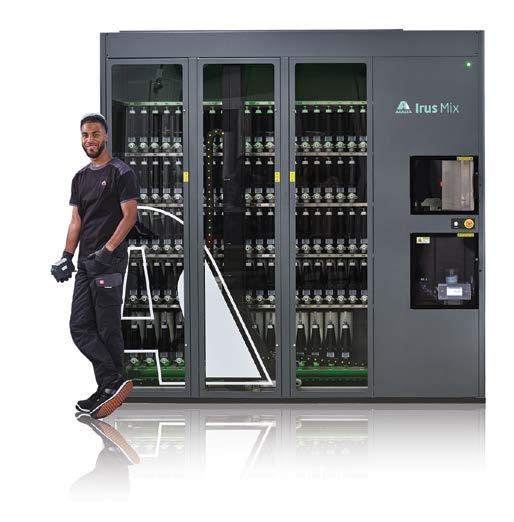
Axalta Irus Mix, with its patented technology, is the fastest fully automated mixing machine on the market - between 15% and 100% faster than anything else available. Refinish customers can save more than 60% on labor time with Axalta Irus Mix compared to manual mixing.
As cutting-edge as Axalta Irus Mix is, it is extremely easy to use. In fact, one of the benefits of Axalta Irus Mix is that a skilled refinisher doesn’t have to operate it; anyone can, freeing up skilled technicians to do other jobs while the paint is being mixed. It is straight-forward and intuitive so after only one training session someone will be very comfortable and confident using Axalta Irus Mix.
Axalta Irus Mix was designed to work with Axalta’s proven bottle system, so there is no need to refill or decant product into special bottles. Additionally, the bottles are fitted with precise dosing lids, delivering accurate color without waste. The computer-controlled dosing enables bodyshops to mix colors in small amounts resulting in less consumption and less waste. And for those tints that are not used frequently, there are four optimized bottle sizes that perfectly match tint popularity. For the bodyshop, this means less money tied up in stock.
Axalta’s bottle system is made from 50% recycled plastic, underscoring Axalta’s commitment to sustainability. Spies Hecker Permahyd Hi-TEC is available in bottles exclusively with Axalta Irus Mix.
Axalta Irus Mix is the final step of Axalta’s simple, three-step Axalta Irus digital color management process: Scan – Match – Mix.
First, refinishers scan the color with Axalta Irus Scan – the newly launched spectrophotometer. This new technology scientifically measures paint color on a vehicle to provide accurate color matches in both waterborne and solventborne basecoat technologies.
Second, match the color using Axalta Nimbus Color, a revolutionary platform that leverages proprietary algorithms to find, sort, and return accurate color formulas.
Then it’s time to mix with Axalta Irus Mix. Axalta Irus Mix enables its users to work more efficiently, profitably and sustainably. Everything about Axalta Irus Mix is technologically advanced. Simply launch the mixing process from a PC or tablet and put the empty mixing cup in Axalta Irus Mix. The mixing formula is wirelessly sent from Axalta Nimbus Color to Axalta Irus Mix and, with a simple push of a button, Axalta Irus Mix does the rest, allowing skilled refinishers to do other, more productive tasks. The mixing cup is removed when finished and ready to be attached to the spray gun. For added convenience, after dispensing, the machine carries out quick automatic nozzle cleaning procedures to avoid blockages.
Axalta Irus Mix is linked to a cloud-based monitoring system that continuously checks its status. Users also have access to Axalta sales, technical and color teams.
Troy Weaver, Senior Vice President, Global Refinish, says, “At Axalta, we strive to be at the forefront of innovation. We constantly look for ways to help our customers to do business better, to enable our customers to work as efficiently as possible and to maximize their profitability. Axalta Irus Mix has done just that – as we have seen with more than 100 machines in use globally. Axalta Irus Mix is ideal for bodyshops and multi-shop owners who are looking to increase efficiency, profitability and to do more jobs per day. It not only reduces bodyshops bottlenecks and frees up refinishers to carry out more profitable, highly-skilled tasks, but also it boosts bodyshops’ capacities, saving them money and helping them become more sustainable. We are delivering technology that truly automates color like never before.”
By Paul Hughes Autobody News
A push by individual states to regulate consumer information collected by businesses isn’t yet touching smaller body shops and collision centers, but efforts are gaining steam and there are great reasons for indie operators to know and prepare for local laws.
Act in 2018, and two years later, voters approved a proposition that expanded on CCPA. All regulations were effective by January 2023.
Other states are joining in.
Six states’ laws will have gone into effect this year and last, when Montana’s begins Oct. 1, according to nonprofit International Association of Privacy Professionals (IAPP). Nine

California was first with legislation often presented as “privacy protection” bills dealing with individuals’ data. The state passed the California Consumer Privacy
more are slated to hit in 2025 — six of these by January — with three more in January 2026. Four more states have active bills.
Only about one-fourth of states
haven’t tried to enact privacy legislation.
There is currently no national law, but that’s in the works as well.
“What’s really changing is the statelevel stuff,” said Brad Miller, head of legal at Utah-based ComplyAuto, which develops software to aid companies’ compliance with state and federal regulations.
The changes are more than just new legislation itself. Because it’s happening — or not — one-by-one, there are differences within and among various laws. Multiplied by dozens of states, it gets complicated.
Miller said “privacy” generally refers to “non-public personal information” — but not just the usual suspects. It involves obvious datapoints — insurance, driver licenses, Social Security numbers — but “anything personally identifiable” as well.
Some states let businesses correct a problem before they’re punished; some don’t.
“There are lots of layers to this, and all the laws are different,” Miller said.
A common approach seems to
be good for most shops: smallbusiness exemptions, which also differ state-to-state.
California’s law applies to businesses with more than $25 million in gross annual revenue or information on at least 100,000 residents or households.
Most independent body shops aren’t touched. MSOs and dealerships with shops likely are, and online privacy adds a whole ‘nother slew of considerations.
Roberto Baires owns Micro Tech Resources IT in Northern California. Among his clients are 100 or so body shops. More are concerned with the long-time CARFAX issue — past repairs not being in a vehicle history — than with the state’s stringent customer data privacy rules.
He stressed the limited information shops hold, noting, “customer data they see is in the estimating software, insurance companies, parts procurement, credit cards — they’re the ones managing it.”
“We have to keep some information for lifetime warranty repairs,” said Tiffany Silva, who
The Collision Industry Foundation (CIF) is a non-profit organization dedicated to providing support and assistance to collision repair professionals during times of crisis and hardship.
MISSION
Secure and distribute donations to individuals who have experienced significant losses due to natural disasters or other catastrophic events.

Tax-deductible donations needed to provide assistance: www.CollisionIndustryFoundation.org


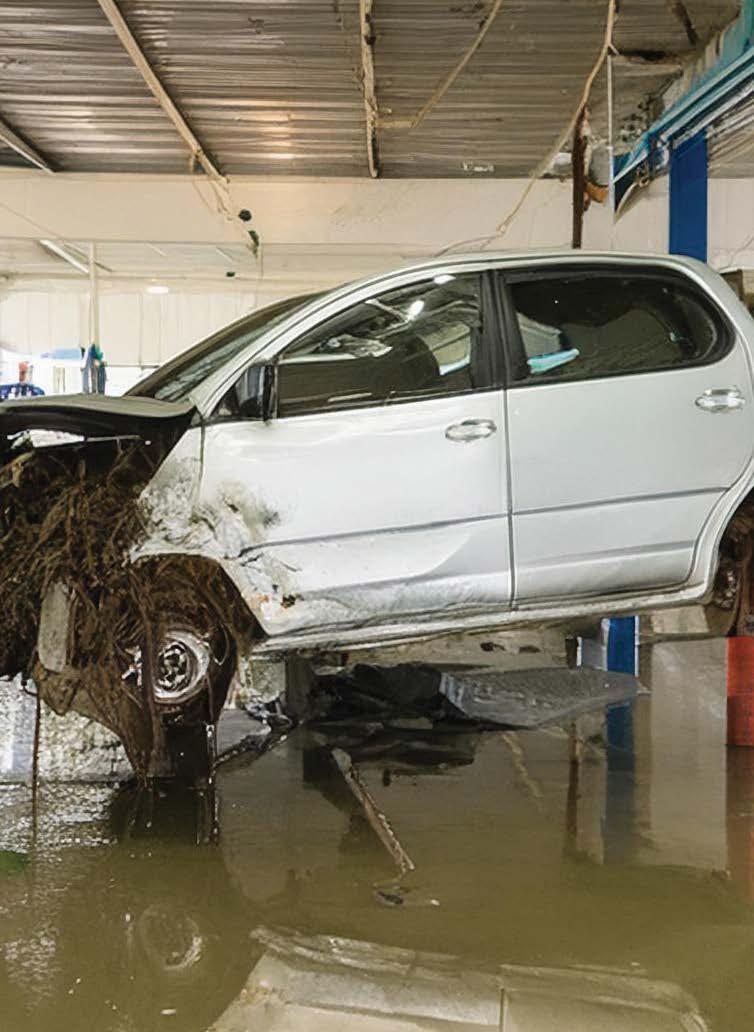

co-owns Accurate Auto Body in Richmond, CA. But for the most part, “there’s nothing for me to hold.”
“Shops hold some data, but more of it is physical,” Baires added.
“I’m ‘old-school,’” said Ken Pike , owner of Ken’s Custom Auto Body in Marysville, CA. He collects a name and phone number for estimating but doesn’t keep any customer data. “I charge their credit card and that’s it.”
He’s never had a customer ask about their information.
Silva said her shop has policies in place — where it can exist, what happens if an employee takes a photo of a vehicle — developed with an attorney and IT. “We have data and we protect the data, but it doesn’t come up.”
Miller said if the law applies to a shop, it overlaps with much standard practice, apart from the exemptions.
And Silva’s policy approach is a good step even for shops that don’t strictly “need” it.
With the industry’s increasing complexity, technological advances and customer privacy and data concerns, there are good reasons to be ready to act.
Acquisitions: If a shop might ever
be sold, it’s best to have operations as pristine as possible. Big buyers will have their own method, of course, but keeping data collection clean and in compliance is never bad.
Breaches: Shop relationships with insurance companies, suppliers and dealers, among others, are at risk for hacking, ransomware and other cybersecurity issues. And these attacks are only expected to increase.
Customers: A formal policy developed with the right people and communicated to anyone who walks in the door ups the body shop’s game. It speaks to professionalism, customer care and a strong work ethic.
A policy defines relationships with consumers, third parties and the state. It prevents problems and prepares a shop for service today, and tomorrow.
Miller said federal legislation frequently stalls over particulars; but if not inevitable, it’s also not impossible. And without one, the news is more complex than good, since states passing a different law every time doesn’t make compliance any easier.
“The auto body industry is having to deal with this,” he said. “And new regulations are coming.”
Stellantis, the parent company of Chrysler, filed eight lawsuits Oct. 7 against the United Auto Workers (UAW) and 23 local units, accusing the union of breaching their contract by threatening to strike due to the automaker’s postponed investments.
The lawsuits were filed in Michigan, Ohio, Indiana, Texas, Arizona, Massachusetts and Oregon.
The lawsuits joined a similar one Stellantis filed Oct. 3 against the UAW and its Local 230 in Los Angeles after the union members at the Los Angeles parts distribution center voted for strike authorization. This vote was in response to grievances over Stellantis’s faltering on promised investments.
The union has argued Stellantis is violating the terms agreed upon last fall, which included significant financial commitments to
various facilities, including a $1.5 billion pledge to revamp the shuttered Belvidere, IL, assembly plant for new midsize truck production by 2027.
The UAW’s proposed reinstatement of the Jobs Bank — a concept that prohibits layoffs but was a factor in the automaker’s 2009 bankruptcy — was rejected by Stellantis during a meeting Oct. 5. Stellantis argued that such measures could jeopardize the company’s future.
In July, the Energy Department announced plans to award Stellantis $334.8 million to convert the Belvidere Assembly plant to build electric vehicles (EVs), though this award is yet to be finalized. This comes amid Stellantis’s contention that their investment plans, including those for EVs, are always subject to market conditions, which have recently shown a slowdown in demand for EVs.

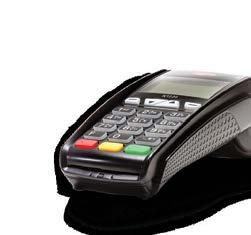


evaluation,” Gredinburg said.
‘Repair or Replace’ Considerations
Andrew Batenhorst of the CIC Estimating and Repair Planning Committee pointed to a series of factors that can play into case-bycase decisions during estimating related to repair versus replace of a damaged panel.

The first, he said, involves reviewing the automaker documentation to look for any guidelines, the types and mil thickness of material involved, limits on the use of heat, whether there are restrictions on access to replacement parts, and what types of tools or consumables would be needed for repair.
“That brings us to accessibility, basically factoring what panels are around where we’re working, how much room we have from the backside, are we going to have any issues with getting the tools onto the panel to do what we need to do to properly straighten it,” Batenhorst said. “If we’re inhibited from doing that, that could lead to a ‘replace’ decision instead.”
Another factor is whether there is damage in a crumple zone that would affect repairability.
“In many cases, that’s a dealbreaker automatically,” he said. “If a crumple zone is affected, going back to the OEM instructions, that may right away warrant the replacement.”
Similarly, an estimator needs to determine if body lines or contours on a damaged part can be recreated accurately.
“The invasiveness of the repair is also very important,” Batenhorst said. “Our approach is always to minimize the intrusiveness to the vehicle, and try to preserve as much of factory e-coating, and limit how drastically we need to go into the car.”
There are refinish considerations, such as how much factory corrosion protection needs to be protected or restored, maximizing the amount of factory paint as possible, and considering whether refinishing or blending of adjacent panels would be involved.
One final consideration is part availability.
“Obviously, there’s a financial or economic decision that gets factored into this,” Batenhorst said. “We are still dealing in many cases with part delays from all the turmoil that’s in the world currently. Sometimes that may cause you to have a different approach to that repair or replace decision that you’re trying to make.”

Despite the prevalence of onthe-spot evaluations required during estimating, many in the industry see resistance among some insurers to move away from strict use of the 50% formula for blending rather than looking at it based on the factors that vary from vehicle to vehicle.
Darrell Amberson of the LaMettry’s Collision chain in Minnesota said changes to such things as the blend formula often take too long to get implemented.
“As an industry, when we have some significant changes come along, we’re notoriously slow,” Amberson said. “It tends to take us years to really evolve to the point where the dust settles and common compensation methodologies are established as the norm.”
He said he’s discouraged by how few insurers have been open to moving away from the old blend formula.
“I get a lot of excuses that are not necessarily based on good logic,” Amberson said. “Right now we have one insurer that’s adjusted its normal pricing. We have some others that are on a case-by-case
basis. But a whole lot of them are just not doing anything.”
He said he agreed repairers need to focus on the variables impacting the blend procedure the paint companies point to, rather than just the outcome of the 2022 blend study by the Society of Collision Repair Specialists, despite the efforts to make the study “accurate, fair and reasonable.”
“I’ve seen many industry changes over the years where we start a conversation and often there’s not much flexibility on the two sides,” Amberson said. “And then after a lot of education and discussions, we tend to evolve and find some kind of common ground. But we don’t do that enough or quick enough.
“We need more discussions like this [at CIC]. We need more activity from the paint companies. We need more insurance companies to come in and really understand the situation and help us all evolve,” he continued. “Too many times there’s a kind of a bullheadedness, ‘We’re just not going to accept a change,’ and that’s not necessarily reasonable.”
Saying he was speaking for a shop owner who couldn’t attend CIC, Andy Tylka of TAG Auto Group said that shop owner sees part of the problem is that 50% of full refinish time is still the default for blending in the CCC estimating system.
“He feels that doesn’t open up the mentality that it is an on-thespot evaluation,” Tylka said. “He is continuing to get responses from insurance companies that assume that the default is the standard. They’re referencing it as the standard, the established formula of CCC. He asked me to [say] that he feels like that 50% needs to go away. It needs to be a forced adjustment on every profile. Because right now it [seems to be] implying that there’s a recommended formula.”
Dan Risley of CCC Intelligent Solutions is the current chair of CIC, and he addressed that comment later in the meeting.
“I think it’s really a continual education process because we have the slider in there for the [user] to choose whatever they feel is necessary as an on-thespot evaluation,” Risley said. “The language is in there referencing the fact that it’s an on-the-spot evaluation. But that said, I heard the point loud and clear, and I’ll make sure I’ll bring that back to our team.”
The ASE Education Foundation is actively calling on automotive industry professionals to volunteer as mentors in an effort to combat the ongoing shortage of qualified automotive service technicians. Mentorships are a critical tool in bridging the skills gap by giving students hands-on experience and industry connections.
Mentors from local businesses provide essential real-world training, enabling students to apply classroom knowledge in professional settings. These mentors work alongside schools and instructors, offering both guidance and feedback to students while helping place them in entrylevel positions within the automotive and transportation industries.
Industry members interested in becoming mentors are encouraged to contact their local ASE field manager, who serves as a liaison between students, schools, and ASE industry partners. A full list of ASE field managers and the areas they serve is available at www. aseeducationfoundation.org.
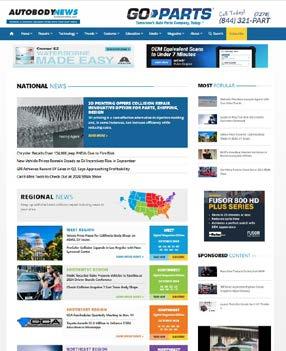





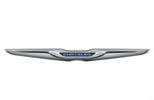
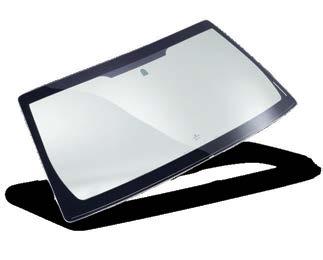

by Feb. 28, to chart the creation of a state-run entity that will ultimately draft and enforce right to repair regulations in Maine. The Maine Attorney General’s Office is hosting monthly public meetings of the group to help frame the forthcoming recommendations.
Though federal right to repair legislation recently died in the U.S. House Energy and Commerce Committee, right to repair policies have advanced in states in recent years, and remain a hot topic in the automotive world.
Industry advocates and private citizens as of early September had sent more than 114,000 total letters to Congress requesting the passage of right to repair legislation, according to a press release by the Auto Care Association (ACA).
And in August 2023, the National Highway Transportation Safety Administration finally agreed that automakers are able to comply with a 2020 Massachusetts law giving consumers the right to use a mobile app to directly access all of a vehicle’s mechanical data.
Every year, right to repair legislation is introduced in several
state legislatures, but usually languishes before having the chance to be enacted.
Brett Cartwright, owner/operator of Windham Automotive in Windham, ME, noted it is more difficult to get data on newer cars than older ones.
He said his shop pays for a thirdparty scan tool subscription that updates with new vehicle info on a bimonthly basis, but it’s not a cure-all.
Compared to many cars made since 2020, for instance, “I can get more information on, say, a 2011 Chevy Malibu,” he said.
Everything in new cars has an electronic module, even traditionally basic components like power steering racks, Luther said. This means that shops that don’t have adequate passthrough devices will be left behind, he added.
Third-party passthrough companies often charge per-scan fees ranging from roughly $75 to $150 to use their devices for each repair instance, according to Society of Collision Repair Specialists (SCRS) board member Kris Burton, who is also owner/operator of Rosslyn Auto Body in Alexandria, VA. His shop performs pre- and post-repair scans, and sometimes performs calibration
scans with that third-party software, to ensure cars’ issues are accurately identified and the correct repairs made.
While scan tools can generally stream live data and partially calibrate vehicle control modules, passthrough devices are able to more deeply reprogram vehicle control modules. Both OEMs and third-party companies sell passthrough devices.
Tesla Director of Service Engineering Brian Boggs mentioned a 2014 memorandum of understanding (MOU), a 2023 repair data sharing commitment, and the recently passed Maine right to repair working group legislation, all of which require car manufacturers sell their scan tool to independent repairers at “fair and reasonable terms,” he said.
The MOU signed by leaders of the Auto Alliance, Automotive Aftermarket Industry Association (now ACA), Global Automakers, and Coalition for Auto Repair Equity generally calls for due consideration of costs to car dealerships and independent repairers for providing and obtaining the information, respectively.
The 2023 Automotive Repair Data/Sharing Commitment between the Automotive Service Association, SCRS and Alliance for Automotive Innovation called for “fair and
reasonable terms” for data sharing to be established in alignment with U.S. Environmental Protection Agency, California Air Resources Board and Massachusetts statutory requirements.
The “fair and reasonable” provisions of the above guidelines are meant to ensure car manufacturers’ OEM scan tools remain widely available to independent shops, meaning the OEMs “don’t have a monopoly” on the scan tool market, Boggs said.
Cartwright’s shop uses a universal, third-party scan tool, made by Snap-on, which aggregates data across several different car makes and models, acting as a value-add for repairers who don’t want to pay separately for OEMs’ much more detailed and exclusive diagnostic tools, he said.
To get a comprehensive list of diagnostics for every make and model, “we would need to buy a Ford scan tool, a Dodge scan tool, a Chevy scan tool, a BMW scan tool, a Honda scan tool, a Toyota scan tool,” Cartwright said. “At $10,000 to $15,000 apiece, it’s just not feasible.”
Patrick Horan, owner of Kittery, ME-based Autoworks Diagnostics and Repair, made the case for

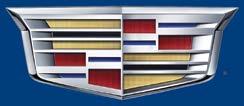



OEMs’ vehicle data to be provided to independent shops on an ongoing basis, so that repairers could address drivers’ periodic car problems as they arise. But Horan said he didn’t expect Maine’s right to repair regulations to spur this type of data flow.
“These vehicles, as they’re driving, are taking data every day,” he said. “If you have an intermittent problem on your vehicle, if I had the access to it, I could go into your vehicle and see what’s going on when the problem is actually happening to save you a trip to the dealership or to our shop. And that’s the piece that I don’t think we’re going to have access to, which I think is unfair, because that information should be up to the customer who gets to share that information.”
Burton, whose shop is OEMcertified and uses mainly OEM parts for collision repair, said his shop gets access to all OEM information, as it regularly deals with car manufacturers for training and pulls repair instructions directly from the OEM.
Burton said the biggest challenge he sees in collision repair is reimbursement from insurance companies, not OEM data access.
“When we have a vehicle that comes in that’s damaged, we go through and pull all the OEM repair information, get all the instructions;
it tells you where to weld, what types of weld, what types of rivets, where the rivets go,” Burton said. “All the relevant information is there.”
Voit Ritch, owner of Freeport, MEbased European specialty repair shop Autowerkes Maine, cautioned against right to repair legislation, saying that industry agreements, including the 2014 MOU and 2023 repair data sharing commitment, already fill the would-be role of right to repair legislation.
“Aftermarket-developed and secondary repair information is historically inaccurate and unreliable,” he said. “To think that some entity could develop a reliably functional universal information system is certain to fail. I have been, and currently am, a beta tester for numerous companies’ tools, and none of them have ever proven universally reliable.”
Ritch reiterated Boggs’ point that since the MOU, most manufacturers have offered proprietary factory repair data on a subscription basis. Ritch also mentioned the then-active U.S. House right to repair bill, and the potential for a patchwork of individual state regulations of a large industry issue such as right to repair, which he

said could lead to “legal paralysis.”
“Shouldn’t we just let this federal legislation take the lead?” he said. “When the government gets involved with legislation, lawyers become involved, and litigation will commence.”
As OEMs will prospectively offer more remote diagnostics services in future years, Maine Right to Repair Coalition Director Tommy Hickey asked Ritch whether it would be fair to repair shops for OEMs to be able to preemptively call customers when their remote diagnostics identify issues, even if independent shops won’t have access to the same data.
If “I do a good enough job, they’ll want to come to my shop instead of the dealership,” Ritch replied.
Hickey said: “They won’t know to go to you when there’s remote diagnostics you don’t have access to.”
Ritch rebutted: “They can call me on the phone and tell me what’s going on.”
Hickey replied: “Not if the manufacturer and the dealer are reaching out” to the driver.
Soon after this spirited exchange, Maine Chief Deputy Attorney General Christopher Taub turned the attention to the meeting’s remaining presenters, noting that substantive policy debate would occur in future meetings.
Registration Portal and ‘Connected Tools’ Independent repairers hope that as OEMs open access to their vehicle data to independent repairers and consumers, they will both receive inexpensive and comprehensive information to fix their cars.
But there needs to be a reliable mechanism to ensure open access.
A cyber-secure registration portal accessible to multiple parties -- rather than being administered unilaterally by OEMs — could allow independent repair shops to create accounts and have connected tools that talk directly to the registration portals and vehicles, said Brian Romansky, general manager of connected vehicle solutions for Monroe, CTbased Internet of Things company INTEGRITY Security Services, LLC.
Romansky raised the possibility of repair industry adoption of a Service Oriented Vehicle Diagnostics (SOVD) framework, which the International Standards Organization is in the process of standardizing.
In lieu of using scan tools to physically plug into a car to glean diagnostic data, SOVD contains a technology gateway in the car that acts like a connector for a physical scan tool.
“The logic, the smarts, of the scan l CONTINUED ON PAGE 39
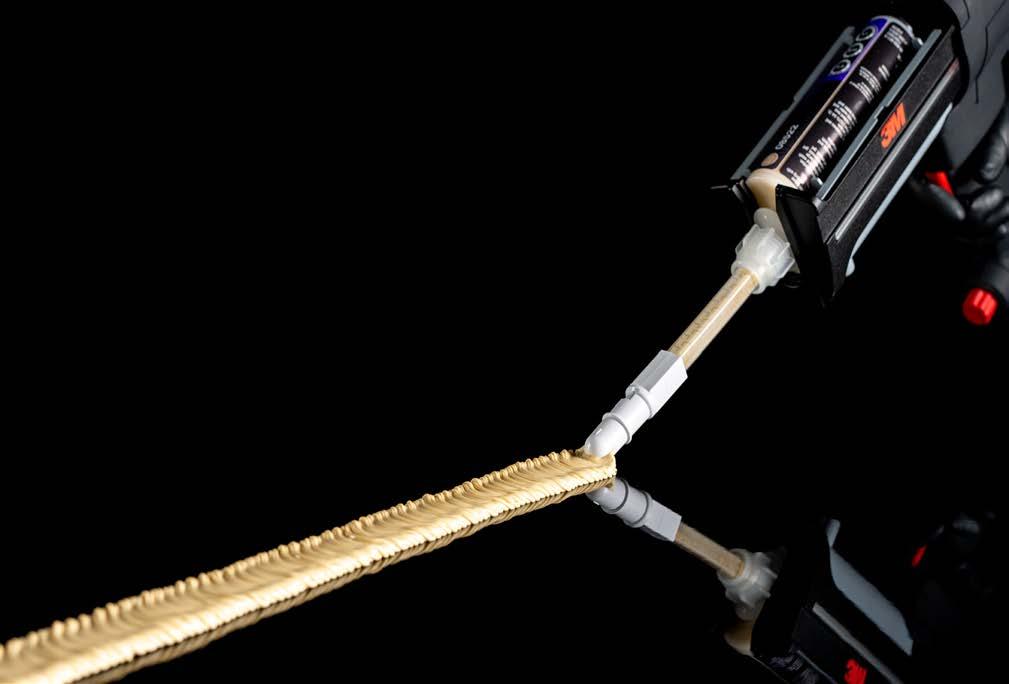


By John Yoswick Autobody News
George Arrants, vice president of the ASE Education Foundation, doesn’t think the collision industry’s technician shortage is based on a lack of interest in the trades by young people nor too few students entering collision repair training.
“The number of students in a program this year is higher than ever before,” said Arrants, whose organization evaluates and accredits entry-level automotive technology education programs against industry standards. “We see that most of our programs are at capacity or higher. But then for some reason, once we get them in the programs, we think our job is done.”
The problem, he said, is the followthrough during those students’ time in the program and into their first job in the industry. Arrants estimates 1 in 5 graduates of automotive training programs never enter the industry, and about an equal number leave the industry within two years.
I-CAR research has produced even more stark findings: Only 15% of students who enter the industry stay for more than 18 months.
“We’re eating our young,” Arrants said. “These people are interested in our industry. But we bring them into our shops and expect them to be productive. There’s not one of us who was productive our first day on the job. There’s no on-boarding, there’s no mentoring.”
Waiting to employ students only once they finish a program is also an issue, he said.
“If you don’t hire them until after they graduate, the only thing they know is the program they were in,” Arrants said. “That means when they come to you, it’s a whole new experience. And that’s why we lose a lot of them. But we have found that for those students who work in your shops while they’re in school, it’s a more seamless transition. And they stay for decades.”
He said there’s another sad truth about those entry-level technicians leaving the collision industry: “They’re not leaving skilled trades,” he said. “They’re staying in the skilled trades. They’re just not staying with us.”
What else can shops and vendors in the industry do to help collision repair training programs and the students they are training to help stem the flow of potential technicians out of the industry?
Supporting the Collision Repair Education Foundation (CREF) is one good step. CREF provided $136,000 in scholarships to collision repair students last year, and another $678,000 in grants to 110 schools to benefit their collision repair training program. CREF also donated more than $18 million in product donations to the programs, including 78 current model Audi and Volkswagen vehicles to schools.
for more participants in their program advisory committees.
“One of instructors’ biggest pet peeves is an employer, who they’ve never heard from or seen, coming in at the end of the spring semester and saying, ‘I want your best students,’” Eckenrode said. “The instructors look at them thinking, ‘Where have you been for the past school year? I’m going to help those employers and local businesses that

Brandon Eckenrode, executive director of CREF, said any organization within the industry can sponsor uniforms for students at their local school.
“We’ve heard from instructors that when the students have brand new uniforms rather than just wearing street clothes, that has made the biggest impact of all that we’ve given out,” Eckenrode said. “It’s a way for you to connect with the students as it’s you, the sponsoring company, that’s helping distribute the uniforms, and talking to these students, helping make sure that these students look professional while they’re learning. The sponsoring company’s logo is on the front of all the uniforms, so it’s almost a walking billboard for your company.”
CREF can also assist with parts donations.
“Instructors have told us their No. 1 need is donated scrap and spare parts,” Eckenrode said. “We literally have instructors rummaging through the Dumpsters of body shops and dealerships looking for spare parts that they can bring back for their students to work on. I think we can agree that with the number of damaged and slightly used parts that are taken off of customers’ cars, there’s absolutely no reason why instructors should be rummaging through the trash to get these parts.”
He said most schools are looking
different companies that are waiting for them to graduate, and it’s that that motivates them to stay in the collision industry and that program,’” Eckenrode said. “They walk out of those events with a stack of business cards. Some of them walk out with multiple job offers.”
For more information about working with CREF to help a school’s collision repair program, check the foundation’s website.
Shops can also help relieve the industry’s technician shortage by training new entry-level workers inhouse. I-CAR is now making its new I-CAR Academy Program available to collision repair facilities, after launching it for schools earlier this year. The I-CAR Academy program is an early career program to educate and recognize new technicians starting a career in the industry.
I-CAR’s Jeff Peevy said the program is in part a response to what he heard from shops about entry-level technicians they were seeing from school collision repair training programs.
are committed throughout the entire year, not just coming in and trying to cherry pick those best students when they are graduating.’”
Eckenrode noted that in-kind donations made up the bulk of the assistance the foundation provided to schools last year.
“Tools, equipment, supplies, parts, everything that your companies may have, we can find homes for those in local schools,” Eckenrode said. “There are some schools that have 150 students and their total program budget is $3,000, and that is the state of what they have. So it’s an opportunity for us to make sure that they have the items they need to provide a quality technical education.”
He said CREF also continues to hold career fairs around the country.
“These help showcase to these students all the different companies that are interested in them, Eckenrode said. “And what’s great about these events is it’s not just repair facilities. It’s tool and equipment companies, paint vendors, insurance, rental car. Everybody is there to showcase, ‘Hey, we need you.’
“We’ve heard from instructors who say, ‘I’ve had students who are kind of trying out collision repair and they’re not quite sure if they like it, but they come to these career fair events, they see all the
“There was a lot of feedback saying a young person coming out of a school had experienced an inch-deep and a mile-wide training experience,” Peevy said. “And when they were put into the shop environment, they really did not have a high level of proficiency in anything. They had experienced a lot of things, but they could not be put on something to do without having a lot of oversight.”
The new program focuses instead on “what would you have an entrylevel technician do that would make them valuable to your operation from day one, what would make them feel valued from day one,” he said.
I-CAR Academy’s curriculum covers collision repair fundamentals such as safety and tool skills, plastic repair, small dent repair, disassembly and reassembly, and supports a shop using it by including resources on selecting and training a mentor. A badging system recognizes a new technician’s progress.
“Our industry is in dire need of technicians,” I-CAR CEO John Van Alstyne said. “For some, the right starting point is a school, while others excel beginning their career in a shop. Regardless of where a technician enters the industry, they can count on I-CAR Academy to give them a solid and relevant foundation from which to build their future.”

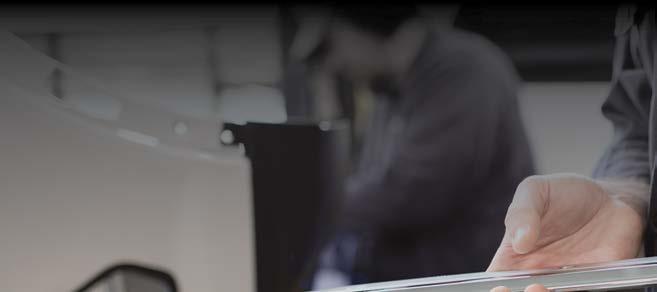
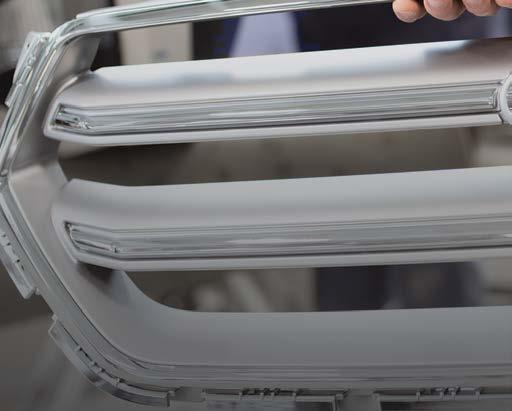
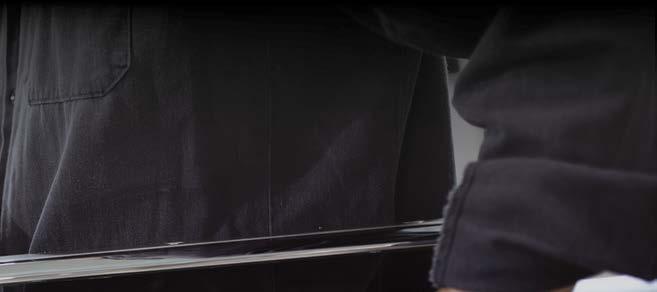





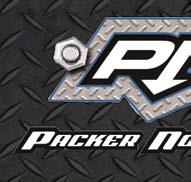
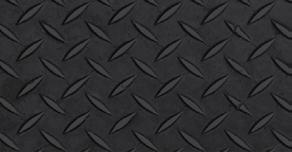

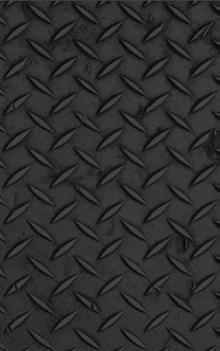








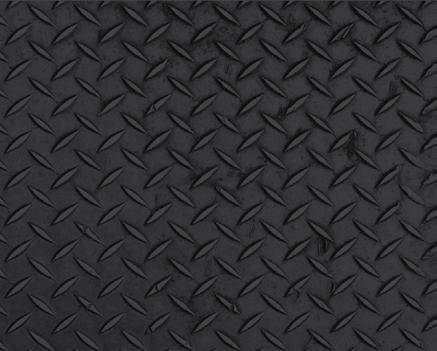
By Paul Hughes Autobody News
Sometimes a “nice problem to have” is not quite true.
Two Steve Halls — father and son — and son and brother Shaun Hall sold their four-unit MSO, Steve’s Auto Body, in northeastern Arkansas to consolidator Joe Hudson’s Collision Centers in September 2023.
The four shops were in Marion, Jonesboro, Paragould and Searcy. In a way, they ended up like eight shops, and, in an unhelpful way, like just one.
Steve Hall Sr. had the first one in Marion by 1999. The others came in five years, between 2010 and 2015. At its sale, the four sites —
“that was our first mess up,” Hall Jr said; a near-monopoly in the market — “the only MSO … we had a great reputation;” inexperienced workforce — “the talent we had, had never done anything that large;” and exponential expense growth — “keeping up with ADAS … changing metals … I-CAR [training.]”
Grouping expenses is a big no-no, but the Halls are by no means unique in the industry here. And while a near-monopoly sounds like a nice problem to have, market dominance bred some carelessness. The busy business has to keep serving the customer; paperwork didn’t get done.
Expense growth is a given, and employment issues — changes wrought by COVID like finding willing techs, then having them miss time for training on new systems -also hit ops.

The shops had no fulltime bookkeeper.
Boiled down: scant attention for financials. “We were just focused on getting things done.”
“It was chaotic,” Hall Jr. said. “We’d created a beast.”
center, taxes — make you want to say, “Are you sure?”
She’s sure.
Hall added to the list: “assets, sales information, land, leases, list of employees and their certifications.”
“This is something all shop owners should do,” Gay said.
Employment issues crop up, again, too.
“Estimator, parts person, whoever closes the ticket, the actual person doing the books, coding it all properly,” Gay said. “You need people who embrace it.”
She said ideally collision centers do this as they go; often they don’t. “There’s always lug nuts that don’t get tightened.”
Steve’s Auto Body created a whole new set of books for each shop, and filed amended tax returns as numbers clarified.
“There was a lot of unwinding to rewind,” Gay said.
“I didn’t want to sell to an MSO that wasn’t like us,” Steve Hall Jr. said. “Joe Hudson — the quality, good reputation, they take care of their employees; they‘re not coming in to just completely change everything.”
Joe Hudson’s has more than 230 locations. This month it entered Ohio, its 17th state, and most recently bought shops in Georgia and Mississippi.
It had 194 shops in 15 states when it bought the Halls’ MSO, which was its entrance into Arkansas. JHCC CEO Brant Wilson said in a press release on the deal the consolidator would be “developing a successful Arkansas market with these new locations.”
Gay called buying a dominant mini-MSO “a platform opportunity for a consolidator.”
Joe Hudson’s website this month lists 12 Arkansas collision shops in its system.
The Halls have seen more health issues, and Hall Jr. said they can spend more time together.
And work slower, doing real estate development. The family kept the land the shops sit on, and lease it to the new owner. Hall Jr. called the lease “awesome.”
Five acres near one of the shops remain in the family; the Halls plan to develop a self-storage facility. They work with the accountant who rebuilt the shops’ financials.
“She’s very black and white,” Hall Jr. said.
regularly outgrowing original spaces; renovated; and adding land, buildings and shop space — totaled some 120,000 square feet, 55 employees and north of $13 million in annual sales.
The brothers joined as growth began.
Opening and expanding multiple shops fast, usually doubling space, means four were like eight. Combining numbers across the four means you could see them as one operation.
Which became a problem.
“We just didn’t know,” Steve Hall Jr. said.
The business was growing, new hires coming onboard, technology spawned new equipment, there were loans for land and building buys —and money was coming in.
The MSO saw 15% gross sales growth annually for the five years from 2018 leading to the exit, Hall Jr. said.
“We were growing so rapidly and didn’t realize it had gotten out of control until we got ready to sell.”
There were four problems: grouping expenses for the shops —
construction project, Shaun running a store.
“Things got away from us a bit.”
The MSO’s metrics were good, the family said, and made shops an acquisition target, with the usual nosing about by big buyers, including Joe Hudson’s, who’d been calling for about a year, and Caliber Holdings LLC.
Before they saw the problem, the family had decided to sell.
“My dad’s health started turning [and] COVID left a bad taste” on labor, Hall Jr. said. “Big MSOs were buying up shops; we felt it was a good time.”
Consultant based Consolidation Coach stepped in.
“It’s hard to keep the books clean, if you’re running a fast-paced, highproduction collision shop,” she said.
“To take it to market,” material has to be structured for the gimleteyed, green eyeshade guys. Gay called the process “forensic financial analysis.”
The list of financial must-haves — multiple income and cost-of-goods accounts, separate labor costing for each area, profitability by profit



























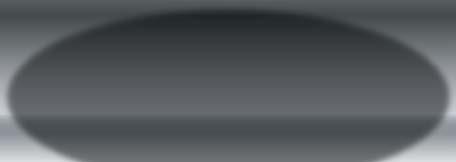
































































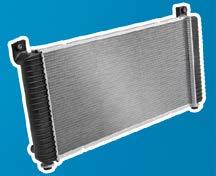





















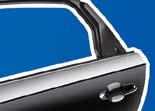
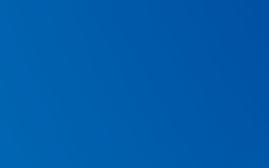






Our knowledgeable and helpful parts professionals want to earn your business and will provide you with the highest level of customer friendly service.



• We stock over $2,000,000 in collision & mechanical parts
• We stock over $2,000,000 in collliision & mechanical parts 0
• We deliver throughout Massachusetts, Rhode Island and New Hampshire ever y day
• We deliver throughout Massachussetts, Rhode Island and New Hampshire ever y day
• Our reputation is built on providing you the best SERVICE
• Our reputation is built on providing you the best SERVICE














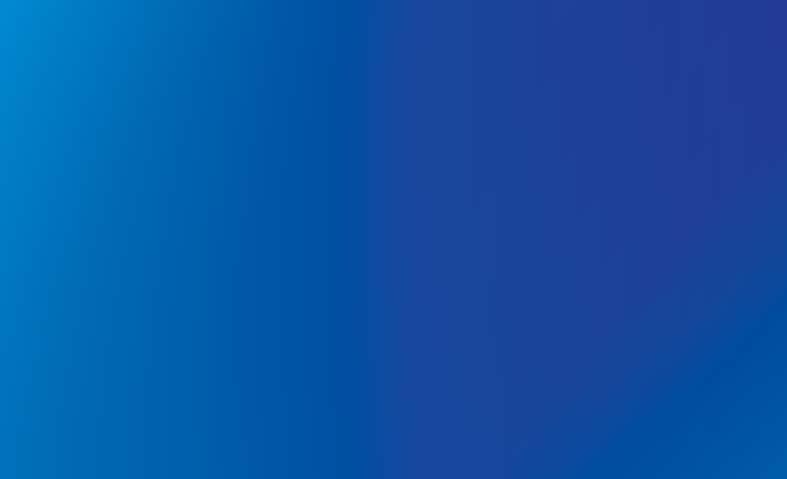
• Save time, improve profits and keep your customers loyal
• Sav a e time, improve profits and keep p your customers loyal









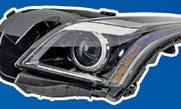


• Place any order on line with our parts order form at buycolonial.com
• Place any order on line with our parts order form at buycolonial.com
• Join our growing list of satisfied customers
• Join our growing list of satisfied customers


Colonial Ford
147 Samoset St., Plymouth, MA 02360
Ph: 800-233-8109 / Fx: 508-830-1658
Hours: M-F 7:30-5; Sat 7:30-4
Colonial Ford of Marlboro
428 Maple St., Marlborough, MA 01752 wtrottier@buycolonialfordmarlboro.com
Ph: 888-617-3599 / Fx: 508-460-3464


Colonial Volkswagen
89 Turnpike Rd. (Rte. 9), Westborough, MA 01581
Ph: 888-322-6570 / Fx: 508-616-0445
Hours: M-F 7:30-5:30; Sat 7:30-4
Colonial VW of Medford
Ph: 781-475-5208 / Fx: 781-391-3506
Hours: M-Th 7-7; F 7-5; Sat 8-4
340 Mystic Ave., Medford, MA 02155 nmedeiros@vwmedford.com
Wellesley Volkswagen
231 Linden St., Wellesley, MA 02482
Ph: 800-228-8344 / Fx: 781-237-6024
Hours: M-F 7:30-5; Sat 7:30-4
wellesleyvwparts@aol.com

Contact: Dan Bettencourt / Wholesale Parts Manager



• Daily shipping available throughout New England and the Northeast
• Daily shipping available throughout New England and the Northeast



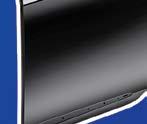


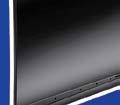






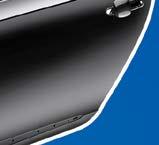
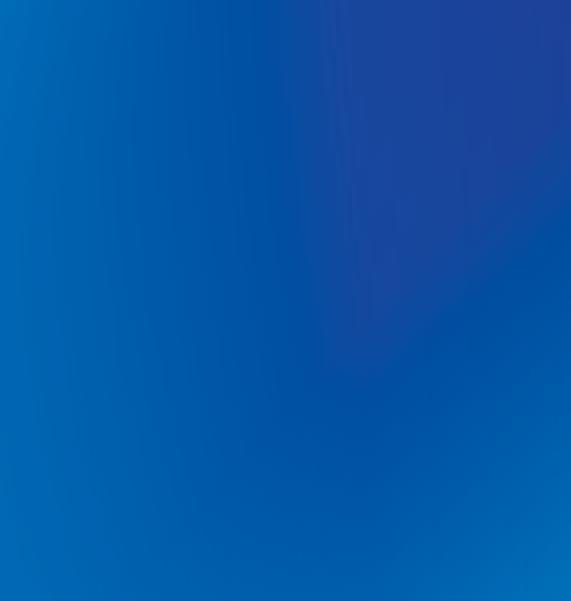
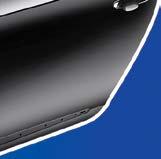

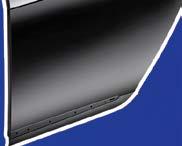
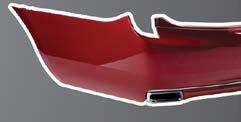

Nissan
Ph: 781-395-3025 Fx: 781-475-5063 104 Mystic Ave. Medford, MA 02155 Hours: M-F 7:30-5 Sat 8-4

North End Mazda
747 Chase Rd. (Rte.13) Lunenburg, MA 01462
Ph: 800-322-1241 Fx: 978-582-9841
Hours: M-F 7:30-5:30 Sat 8-4



225 State Rd., Dartmouth, MA 02747
Toll Free: 888-240-2773
Parts Dir: 508-997-2919 Fx: 508-730-6578
jdelcolle@buycolonialhonda.com






www.hondapartswholesaledirect.com
Cityside Subaru
790 Pleasant St., Belmont, MA 02478
Ph: 617-826-5013 / Fx: 617-489-0733
Hours: M-F 7:30-5:30; Sat 8-4


Hours: M-Th 7-7; F 7-5:30; Sat 8-4:30 Colonial Honda of Dartmouth parts@citysidesubaru.com
757 Chase Rd. (Rte.13), Lunenburg, MA 01462
Ph: 888-686-4387 / Fx: 978-582-9843
Hours: M-F 7:30-5:30; Sat 8-4 North End Subaru
parts@northendsubaru.com www.northendsubaru.com
















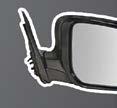
































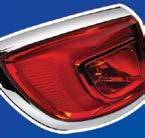












Hours: M-F 8-5; Sat 8-4































Colonial Chrysler-Jeep-Dodge-Ram
24 Coolidge St. (Rte. 62), Hudson, MA 01749
Ph: 978-568-8000 / Fx: 978-562-1213
www.buymoparpartsnow.com
Colonial South Chrysler-Jeep-Dodge-Ram
42 State Rd., Dartmouth, MA 02747
Ph: 508-984-1900 / Fx: 774-328-9915
Hours: M-F 8-5; Sat 8-3
parts@buycolonialsouthcjd.com www.buymoparparts.com















201 Cambridge Rd., Woburn, MA 01801
Ph: 781-935-7009 / Fx: 781-933-7728
Hours: M, T, Th, F 7-5; W 7-8; Sat 8-4
Colonial Cadillac of Woburn www.buycolonialcadillac.com
171 Great Rd., Acton, MA 01720
Ph: 978-263-3994 / Fx: 978-263-8587
Hours: M-F 7-5; Sat 8-4
Colonial Chevrolet parts@colonialchevrolet.com
Colonial South Chevrolet
361 State St., Dartmouth, MA 02747
Ph: 508-997-6711 / Fx: 508-979-1219
Hours: M-F 8-5; Sat 8-4
parts@colonialsouthchevrolet.com
Colonial West Chevrolet
314 John Fitch Hwy., Fitchburg, MA 01420
Ph: 978-503-7480 / Fx: 978-345-1152
Hours: M-F 8-5; Sat 8-4

By Elizabeth Crumbly Autobody News
An unexpected contribution has bolstered an education program nurturing bright-eyed new talent through the industry pipeline. San Diego-based Mitchell, a company that specializes in claims technology solutions, recently announced a $1.5 million in-kind donation to the Collision Engineering program, which serves students at seven colleges across the nation.
“What a surprise it was to receive that donation from them,” said
in the program will enhance the employability of graduates.
Advanced software like this, Mahoney said, can be difficult to integrate into a curriculum because of the training needed. To curb that challenge, Mitchell is providing ondemand training for instructors, along with product guidance and live webinar training sessions for students hosted by Mitchell trainers.
The technology should go into use in the next few months: Instructors, Mahoney said, are “ecstatic.”
“They were so excited, and they

Mary Mahoney, vice president for Enterprise Mobility, which launched the Collision Engineering program in partnership with Ranken Technical College in St. Louis, MO. The program includes eight weeks in the classroom and another eight in a body shop apprenticeship.
“They are a valuable partner of ours,” she told Autobody News of Mitchell. “They believe in the mission. They believe in trying to build, recruit, coach and develop that next generation of collision repair technicians.”
The donation, Mahoney explained, will provide more students with access to its advanced technology solutions, including Mitchell Cloud Estimating with Integrated Repair Procedures and Mitchell TechAdvisor.
New vehicle innovations mean body shop technicians need software knowledge alongside collision repair skills. Through Mitchell’s technology donation, students receive realworld experience using the same advanced solutions as collision facilities do today to restore vehicles to pre-accident condition, she said. Students’ access to the system
“When I was picking a career, I knew I wanted to be passionate about it, but I also wanted to make an impact and the trades had that to offer,” said Karina Badillo, a College of Lake County CEP graduate. “When I first started college, I bounced around through welding and through automotive technology, but they didn’t have a program that was similar to this … you can really connect the bookwork to the actual hands-on experience that the real world has to offer … It is really nice being able to have a team behind you.”
Expansion means the need for more industry collaboration and partnership.
Enterprise Mobility Foundation has provided most Collision Engineering funding thus far, Mahoney said, with expenditures per student coming in at just over $10,500. That number covers tools, PPE equipment books and other supplies.
The foundation also funds school needs like instructors and training equipment, and it subsidizes student pay during their shop participation by adding to the amount employers can provide. Additionally, funds support the professional and personal
development of students and their mentors.
“We want these students to understand how to operate successfully in a work environment, and develop strong relationships,” Mahoney explained. “The idea is to help build a culture where people feel more comfortable. That has been a wonderful add, and people want more of that.”
A significant contributor has been the Ford Fund, which provided nearly half a million dollars allowing the collision program at Parkland College in Champaign, IL, to continue and relaunch as Collision Engineering.
Westmont, IL-based MSO Crash Champions has hosted program apprentices in shops, and CEO Matt Ebert has made the program the company’s charity of choice for an annual fundraiser, Mahoney said. AAA Northern California has also committed to contributions to the program, including vehicle donations.
“Our goal now is building off what we have learned and continuing to expand. What we recognize is we can’t do this alone, and we are looking for everyone in the industry to join the movement,” Mahoney said.
just saw so much more value for the student, and so much more opportunity to inspire them and give them more confidence,” she said.
The Collision Engineering program began as a pilot endeavor in 2020 at Ranken and has since spread to seven colleges, including, most recently, Sandhills Community College in Southern Pines, NC. Since launching, the CEP has graduated 165 students, Mahoney said, and it maintains roughly an 87.5% retention rate.
A focus moving forward is on which schools to bring into the program and how to continue financial support for students and the colleges currently participating. Bringing more women into the program, and thus the industry, is also close to the forefront.
“They feel this environment is more comfortable for them,” she said. “We have 15 women that are either in the program now or have graduated, and those are the kind of the comments we’ve gotten from them.”
Indeed, feedback from women graduates has reflected positively on the support and structure the program offers.



M-F 8am-5pm Sat 9am-1pm Toll Free: 800-367-0269
Direct: 732-821-9300 / 24 Hour Fax: 732-821-8295
E-mail: parts@acmenissan.com www.acmenissan.com
Now more than ever, your customers need to know their vehicle will be repaired right the first time. Depend on the factory fit, finish, and performance of Genuine Nissan Parts. Our friendly and knowledgeable staff is here and ready to serve you by phone or online.

We’re following state and local guidlines to bring you the parts you need. The health and safety of our customers is our #1 priority. These are tough times and we’ll get through them together. You can depend on us.

By Stacey Phillips Ronak Autobody News
In early June, Lucid Motors held its first Certified Body Repair Network conference in Scottsdale, AZ. Certified facility owners from across the country had an opportunity to meet Lucid team members, network with shops and tour the Advanced Manufacturing Plant-1 (Amp-1) in Case Grande, AZ, located between Phoenix and Tucson.
“As the industry’s leading electric vehicle (EV) in regard to range and charging, we have to be a leader in the collision space and have a presence,” said Jake Rodenroth, Lucid’s senior manager of the North American Body Repair Program.
“The future of Lucid is very bright. The scale of the operation and the wonderful people committed to its cause is truly impressive.”
many of their names but hadn’t met the people and were able to interact with them.”
Mike Anderson, owner of Collision Advice, also shared tips on providing excellent customer service.
“Collision repairers have to be doing more than just good work,” stressed Rodenroth. “That’s the expectation. We’re trying to coach to customer service.”
Rodenroth and Andy MacDonald, director of technical operations at Lucid, shared their appreciation for Anderson presenting and inspiring the people in the room.
Following the presentations, attendees toured the 3.85-millionsquare-foot AMP-1, one of two manufacturing facilities in Casa Grande.
“The tour was really a treat because they’ve only recently opened the factory to the general public,” said Rodenroth.

During the event, attendees met the people involved at Lucid on a day-to-day basis and heard from the various departments, including body, technical training, parts and paint.
For two years, monthly calls have been held with the network to exchange information. Following an in-person meeting during the 2023 SEMA Show in Las Vegas, NV, Lucid decided to plan a formal meeting in June 2024 with certified shops.
Rodenroth said it was a great opportunity to talk to shop owners one-on-one.
“It’s good to feel their handshake and see their smile, especially some of the new shops that I haven’t had a lot of interaction with and have only talked to on the phone,” he said. “You have a deeper connection when you get to know people personally.”
During the event, attendees met the people involved at Lucid on a day-to-day basis and heard from the various departments, including body, technical training, parts and paint.
“There are so many people who make our program successful and we wanted to highlight them,” said Rodenroth. “The shops recognize
17 minutes.
The Air has received numerous awards and accolades, including the following this year: the Top Gear Electric Award for 2024 Best Luxury EV, U.S. News and World Report’s 2024 Best Luxury Electric Car, and Car and Driver’s 2024 10 Best List.
The company has also announced it will be selling the Gravity SUV with a projected range of up to 440 miles, depending on trim level.
program’s specific requirements in the regional market that they operate in,” said MacDonald. “Collision repair experience in structural aluminum and EV repair is preferential and a proven track record in delivering best-in-class customer service is mandatory.”
“We aspire to be the best certified network a shop can be on,” said Rodenroth. “It’s not easy to get on the program or stay on it.”

After evaluating more than 60 sites in 13 states for the Lucid Motors Factory, a 500-acre site in Casa Grande was chosen.
“Casa Grande offered close proximity to critical utilities, an established transportation systems and strong support from state and local government,” said MacDonald. “The facility is the first purpose-built EV factory in North America.”
Based in Newark, CA, MacDonald said Lucid’s mission is to inspire the adoption of sustainable energy by creating advanced technologies and the most captivating luxury EVs centered around the human experience.
“Our commitment to efficiency has created one of the fastestcharging, longest range and most efficient EVs,” noted MacDonald. “By using fewer batteries and less grid electricity, we’ve reduced the demand for critical materials and their environmental impact.”
Introduced in 2021, the Lucid Air sedan is among the fastest-charging EVs on the market. The model has four trim levels: The Pure with 430 hp and 410-mile range, the Touring with 620 hp and 411-mile range, the Grand Touring with 819 hp and 516-mile range, and the Sapphire with 1,234 hp and 427-mile range. Depending on trim level, the vehicle charges up to 200 miles in about 12-

Lucid vehicles can be purchased over the Internet and at Lucid Studios in states where the auto manufacturer is licensed to conduct sales. The company provides services to customers through Lucid Service Centers and mobile service operations.
Entry into the Lucid Body Repair Program is by invitation from Lucid and subject to being committed to certain requirements. These include a rigorous business evaluation, sending technicians to extensive hands-on body repair and mechanical training program courses, meeting all body and mechanical repair tooling and equipment requirements and performing to Lucid Body Repair Program operating standards requirements.
“Lucid carefully vets any candidate body repair centers to ensure that they are the best fit for meeting our customers’ needs and can meet our
He said shops must have the required equipment, restricted parts and hands-on training to repair vehicles properly.
Rodenroth encourages collision repairer facilities to access Lucid’s online landing page, fill out the form and learn more about the program.
“We’ve had some good shops that have reached out to us, but they’re located in a populated market where we already have certified shops and that wouldn’t be fair to them,” he noted.
The goal is to keep certified shops busy.
“We want to have that same respect for every shop we onboard,” said Rodenroth.
He said certification is like a badge of honor.
“It’s not a membership. It’s a certification,” Rodenroth emphasized. “Companies like ours aspire to change how people drive and own cars. Our network aspires to change how the industry repairs cars and interact with owners.”
To learn more, visit techinfo. lucidmotors.com/landing

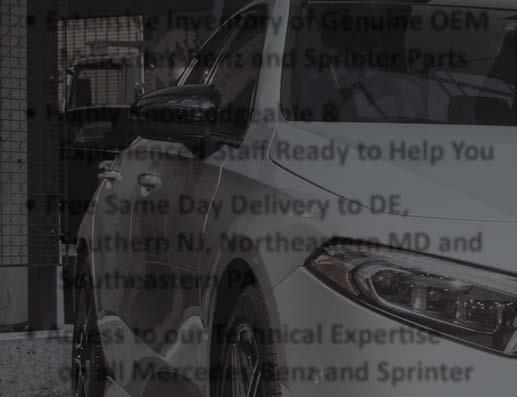

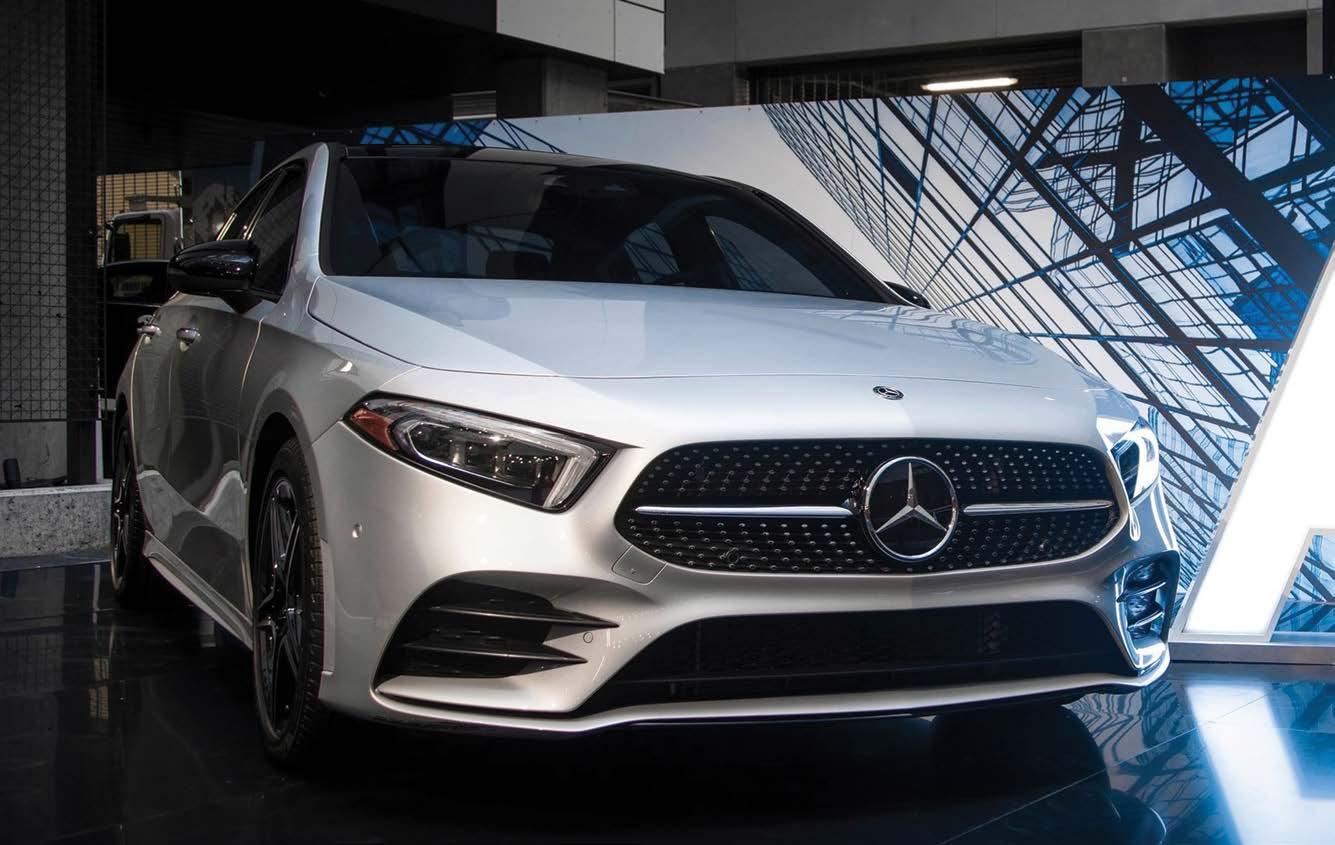
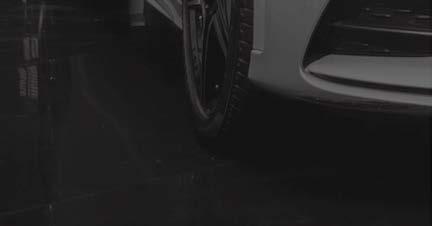









As I mentioned in a previous column, I’ve conducted more than a dozen meetings bringing together collision repairers with regional wholesale parts managers and other OEM representatives for an automaker. The key goal of this effort, for me, is to help both sides of the parts purchase transaction a better understand each other’s perspective, and to share information with one another that would give all of the participants a clearer understanding of how the parts processes work between the various stakeholders.
Over a number of columns, I’m trying to share the things I saw and heard at those meetings that clearly surprised some of the participants or opened their eyes to seeing something in a way they hadn’t previously. In particular, I realized the voice of the wholesale parts distributor is often missing in industry discussions, so that’s something I’m working to add to the mix.
Since my first column on this was published, I’ve received a lot of calls and emails from wholesale parts vendors providing me some additional insights.
But this column focuses on collision repairers, and what they said loud and clear about what they are looking for in a best-in-class OEM wholesale parts vendor. Some readers might be surprised — as some of the participants at these meetings were — that while things like “price” and “discount” might be on shops’ list of what they’re looking for, it’s not necessarily at the top of the list.
For example, I posed this scenario to shop representatives attending the meetings, making sure they knew I wanted them to answer truthfully, not just what they thought I wanted hear. Imagine you had a car you are repairing as part of a direct repair claim for Insurer A. Your parts wholesale dealer doesn’t have the part but could get it from another dealership – but they can’t do so and give you the same discount they do on parts generally.
“Nine times out of 10, I’d still buy it,” a shop manager at a meeting in Arizona said, echoing what I heard over and over again from shops at these meetings. “I need it fast, regardless of money.”
I see a lot of parts wholesalers not wanting to get the part from another dealership because they
can’t do so and honor the discount they offer that shop. But I’m telling you, parts departments need to have a conversation with their shop
He called the shop and said, “You told me this part was on backorder, but this other dealership says they have it.”

customers, because at the end of the day, cycle time often trumps discount. They may be very willing to make less on a part if they can get it fast.
For instance, under some DRP agreements, if a shop doesn’t meet cycle time and customer satisfaction metrics, it has to give the insurer a designated percentage rebate over a specific period of time. So a single long delay, even for a single part, could skew the shop’s average — even if they hit the cycle time requirement for every other vehicle — and cost a significant amount of money.
That’s why getting a part quickly might matter more to shops than discount. This is true for non-DRP shops just as much as DRP shops.
This highlights another item at the top of most shops’ list for what they want from a parts wholesaler: honest and accurate communication about parts availability. Based on what a shop is told about parts availability, they are making decisions about which vehicles to bring in for repairs and when, which vehicles to disassemble and completion dates they can promise to customers.
If a parts vendor gives them bad information and they make a decision on that, it could possibly cost them tens of thousands of dollars.
An experience I heard about involving a dealership body shop also highlights the need for good communication between shops and wholesale parts vendors.
I was in a dealership body shop in Florida that had recently told a customer a part for their vehicle was on backorder. But that vehicle owner found the part at another dealership.
The dealership body shop called that other dealership, but that dealership wouldn’t sell them the part. That’s a hard conversation to have with a customer. They don’t understand why the shop can’t get that part from another dealership.
That hurts the OEM brand, and it makes the body shop look bad. Dealerships need to learn to play nice in the sandbox together. They need to help each other.
Here’s another point about that: If there’s added costs to a wholesale dealer getting that part from another dealer — the time and money involved in physically going to pick that part up, for example — talk to the shop customer about that. They may be willing to pay a delivery fee added to the invoice for that. Again, it comes down to good communication.
Shops also want accurate information about parts pricing. Again, under some DRP agreements, shops get dinged by insurers for supplements based on parts price increases. Again, good communication is often every bit as important to shops as discounts. Look for more key takeaways about the relationship between shops and wholesale parts vendors in my next column.







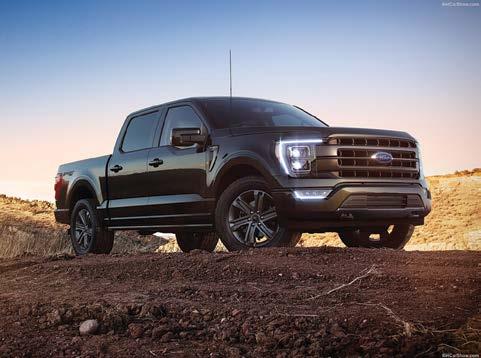

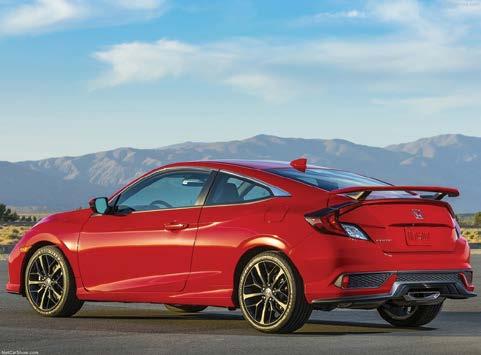
860.651.3747
860.658.6210 Fax







fmanauto.com

Connecticut Blvd. East Hartford, CT 06108
860.282.0191
860.290.6355 Fax
EHAudiParts@hoffmanauto.com M-F 7-5:30 Sat 7:30-3:30

Schraffts Drive Waterbury, CT 06795
860. 274.547 1
860. 274.0671 Fax
M-F 7am-5:30pm Sat 7:30am-3:30pm


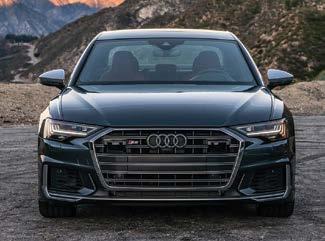



860.447.5099
Nlaudiparts@hoffmanauto.com

by Abby Andrews Autobody News
CIECA recently hosted a webinar, “Why the Collision Industry Should Be Interested in V2X,” to dip into the emerging world of Vehicle to Everything (V2X) technology and how it could affect road safety, traffic management and even collision repair.
The presentation was led by Arif Rafiq , a transportation industry expert who advises governments on systems developed to manage roads, highways and public transportation infrastructure.
Rafiq spoke about why V2X technology will be critical to the future of mobility, including how it could be applied to collision repair.
Rafiq said V2X is communication between a vehicle — which could be a car, truck or even a burrito delivery robot — and everything around it — other vehicles and the local transportation infrastructure. C-V2X is when the vehicle receives and sends data through the cellular network.
He opened with an imagined scenario: two autonomous cars driving side by side on a road,
approaching an intersection.
Currently, if those cars are built by different manufacturers, “they may have different perspectives on what actually is at that intersection” based on data collected by other cars made by their respective manufacturers. One might think it’s a regular intersection, but the
different perspectives of that same intersection,” Rafiq said. “What’s going to happen when they both reach that intersection? That depends on the intelligence built into the cars. The risk to the occupants has now gone up.”
Rafiq said that scenario is one he is working to avoid in the

other could be more up-to-date and know it’s now a roundabout with an active work zone.
“Now these two vehicles have
future, as autonomous vehicles become more common.
He shared a screenshot of what an autonomous car “sees” for data
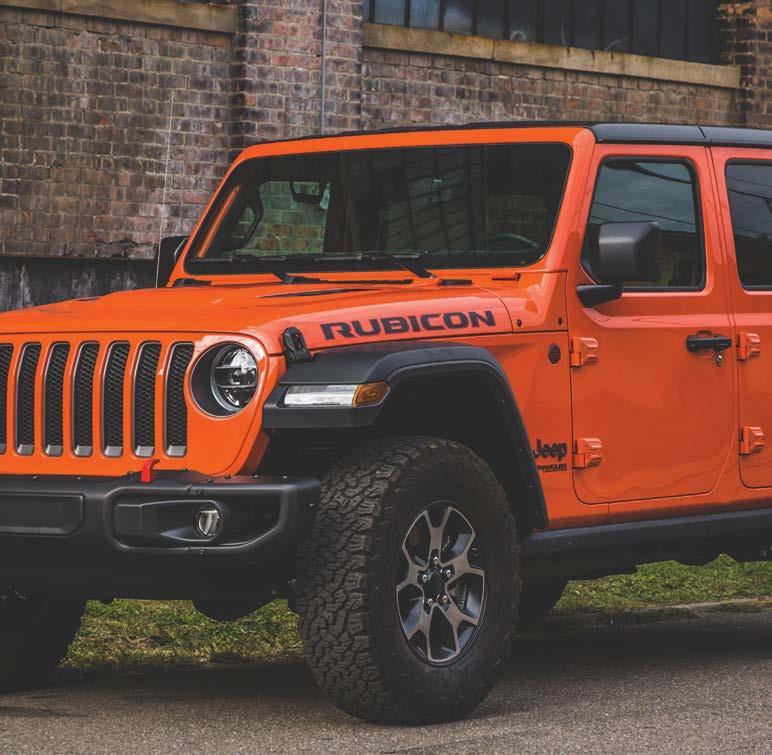
collection, not navigation, which it sends “home” to be used to build an HD map that all the same manufacturers’ cars then use for navigation.
“A tremendous amount of data needs to be stored to track every road and intersection in the world,” Rafiq said.
There are three options.
First, all of that data could be stored directly in the vehicle, but it quickly becomes outdated.
Second, the car can sense and interpret all data in real time, similar to an image Rafiq shared from a traffic camera identifying cars, large trucks and people in different colored boxes. But that technology is not perfect and doesn’t always recognize everything correctly.
Third, the data could be delivered to the vehicle as needed.
Rafiq said he thinks the third option “has a lot of merit.” He referred to the earlier example of the two autonomous cars approaching an intersection that recently became a roundabout. If the local government supplied that information on a platform open to the public, it could theoretically be accessible



to connected vehicles as well.
“If [vehicles] are able to read a precise and up-to-date ‘digital twin’ of the transportation infrastructure, then that puts all of us in a better state,” Rafiq said. “No matter which manufacturer is reading this data, it’s authoritative, reliable and up to date.”
Rafiq said he started helping governments in Southeast Asia and later Canada create these “digital twins” for road safety and public transportation management and planning purposes.
A webinar viewer asked if Rafiq has confidence governments would provide that information in a timely manner.
“No, I do not,” Rafiq said. “The technology to do it is there, but we have to take advantage of it. Some do, but not all.”
In late 2023, the U.S. Department of Transportation announced $40 million in grants available for connected vehicle technology with the long-term goal of a nationwide interoperable V2X deployed and working by 2034.
Many vehicles newer than 10 years old already have some V2X capability, and the infrastructure is being developed around the U.S. — by 2034, it is estimated it will be present in 100% of highways and
75% of intersections.
In the U.S., the number of roadway deaths has fallen from a peak of 44,000 in 1975 to 38,000 in 2020.
A better indication in the reduction of roadway deaths is the number of fatalities per 100 million vehicle miles traveled, which fell from 3.35 in 1975 to 1.34 in 2020.
“We’re getting better, but we’ve got lots of work to do,” Rafiq said.
One viewer asked if V2X could be used to validate ADAS calibrations are done correctly.
Rafiq said he thinks it could get there, but right now there is not a place for that kind of data in the current message subset within V2X data, which include those related to basic safety, local geography, signal phase and timing, road safety, emergency vehicle alerts and more.
“It’s constantly being updated,” Rafiq said of the subset, “but right now the emphasis on V2X is minimizing traffic congestion by increasing efficiency, and road safety.”
More importantly for collision repairers, Rafiq said, is that it will lead to fewer collisions.
“Collisions will still happen; I’m not saying it will eliminate them,” Rafiq said.
He said there will be an aftermarket to serve V2X data, and the data could be used to treat collisions that do happen with more intelligence.
For example: if an ADAS feature quit working because it was too foggy, leading to a collision, that data could be sent to both the OEM and the local government that’s maintaining the “digital twin,” which could useful for improving autonomous driving.
The data could also potentially provide a detailed audit of a collision, like a “black box” on an airplane.
That information could help quickly identify the precise repairs needed, which could streamline the insurance claims process. It could even be used to optimize health care for people involved the collision.
One hurdle that needs to be cleared before V2X becomes more common is ensuring the security of vehicles owners’ Personally Identifiable Information (PII), which Rafiq said is being worked on now.
“If there was communication of information standardized between vehicles, and between the vehicle and the intersection, we would be saving lives and would have safer roads. That for me is the ultimate reason I’m in this industry,” Rafiq said.



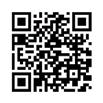
By Leona Scott Autobody News
As the automotive repair landscape rapidly evolves, staying ahead of industry trends and technology advancements is crucial for multishop operators (MSOs) executives. The 2024 MSO Symposium, now in its 13th year, promises to deliver a robust agenda packed with invaluable content tailored to industry leaders’ needs. Scheduled for Nov. 4 in Las Vegas in advance of the SEMA/AAPEX show, this exclusive annual event is set to provide attendees with a unique opportunity to network, learn and strategize for future growth.
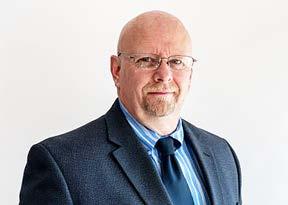
Navigating the Collision Industry’s Future: An Insider’s Perspective For Autobody News readers, we’re offering an exclusive preview of the MSO Symposium’s comprehensive agenda, highlighting sessions designed to empower collision repair professionals to navigate the industry’s ever-changing landscape.
Autobody News spoke with David Black, corporate collision director at Body by Cochran and MSO Symposium advisory board member, to delve into the event’s planning process and the thought-provoking topics on the docket.
Black, who has been attending the MSO Symposium since 2015 and joined the advisory board in 2018, shared his insights into the event’s strategic focus.
“The board is diverse, representing various perspectives across the collision repair industry. We tackle the good, the bad and the indifferent, discussing what’s affecting MSOs and identifying areas of opportunity,” Black said. “Our goal is to make sure attendees leave the symposium better informed and ready to seize opportunities for business growth.”
Topics: Calibrations, AI, and a New Customer Paradigm
This year’s agenda includes several high-priority topics that will shape the future of the collision repair industry.
Sessions will cover a range of critical issues, from the complexities of calibrations to the transformative potential of artificial intelligence.
“Calibration is a hot topic right now,” Black said. “With the increasing sophistication of vehicle technology, ensuring accurate calibrations has become a business-critical function for MSOs. We’ll explore the latest advancements and best practices to help shops optimize this process.”
Artificial intelligence (AI) will also take center stage, with sessions dedicated to its current and future applications in the industry.
“AI is not just a buzzword — it’s a tool already making a significant impact,” Black said. “From AI-driven estimating to enhancing customer service through AI-powered solutions, we’ll cover the full spectrum of what s possible now and on the horizon.”
The Customer Experience: A Shift in Expectations
The pandemic has reshaped how customers interact with businesses, and the collision repair industry is no exception. “We’ve seen a shift in the customer base,” Black said. “Customers now use their phones for everything, including scheduling repair appointments. We need to meet them where they are and make the process as seamless as possible — like Amazon.”
The symposium will address this shift with sessions focused on integrating technology to enhance customer experience.
An Agenda Packed with Insights and Networking Opportunities
Here’s a sneak peek at the 2024 MSO Symposium agenda:
9-10 a.m.: Welcome Breakfast & Networking Hour — Sponsored by LKQ Corporation
10-10:15 a.m.: Welcome and Introductions
10:15-11 a.m.: Where is the Economy Headed: 2025 and Beyond
— Phil Mackintosh, Nasdaq’s Chief Economist, will provide a macroeconomic outlook.
11-11:30 a.m.: Trends and Metrics Impacting the Repair Facility Market
— Kyle Krumlauf, CCC Intelligent Solutions, will provide a deep dive into the latest data trends.
11:30 a.m.-noon: Scale and its Rewards: Industry Landscape and Market Dynamics — Dave Roberts will explore market consolidation trends and capital considerations.
Noon-12:30 p.m.: Solving Problems: Re-imagining Your Business
12:30-1:45 p.m.: Plated Luncheon — Sponsored by PPG Industries
1:45-2:30 p.m.: Panel Discussion: Calibration — Addressing challenges and opportunities in vehicle calibrations.
2:30-3:15 p.m.: The Power of AI Today, Tomorrow and Next Year — Featuring Ryan Taylor from BodyShop Booster, discussing AI’s diverse applications.
3:15-4 p.m.: Networking Break — Sponsored by Axalta Coating Systems
4-4:45 p.m.: Technology Panel: Business & Data System Interruptions
4:45-5:15 p.m.: Futurist: Automotive & Beyond
5:15-7 p.m.: Industry Networking Reception — Sponsored by SherwinWilliams
The MSO Symposium is a chance to network with leaders from large, small, public and private operations. Black highlighted the event’s inclusiveness: “I see myself like these other guys. I may operate on a larger scale, but we share more similarities than differences. The symposium is about tapping into those similarities and learning from each other.”
Attendees will benefit from realtime updates on what’s currently happening and gain insights into what will shape the future of the collision repair industry.
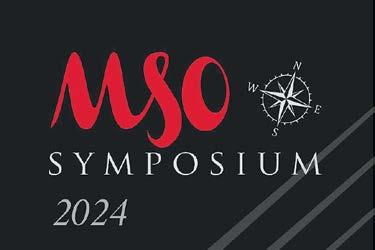
“We want every attendee to leave with a better understanding of the industry’s future and how to grow their business,” Black said.
If you want to attend this exclusive event, visit MSOSymposium.com to learn more and see if you qualify. The MSO Symposium is a must-attend for those seeking to stay ahead in an everevolving industry.

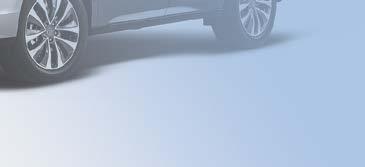
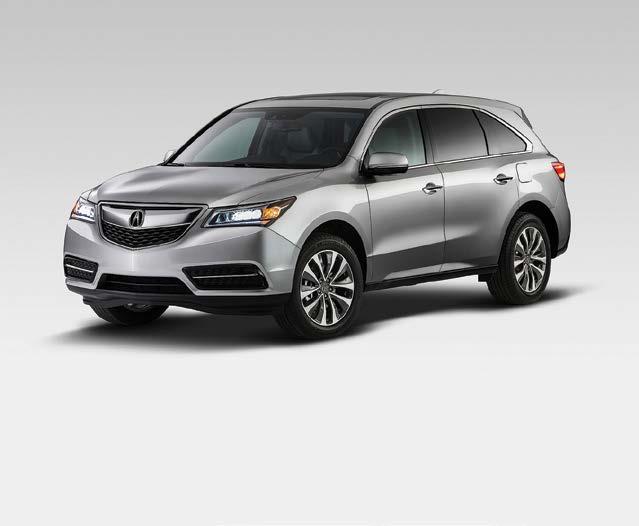





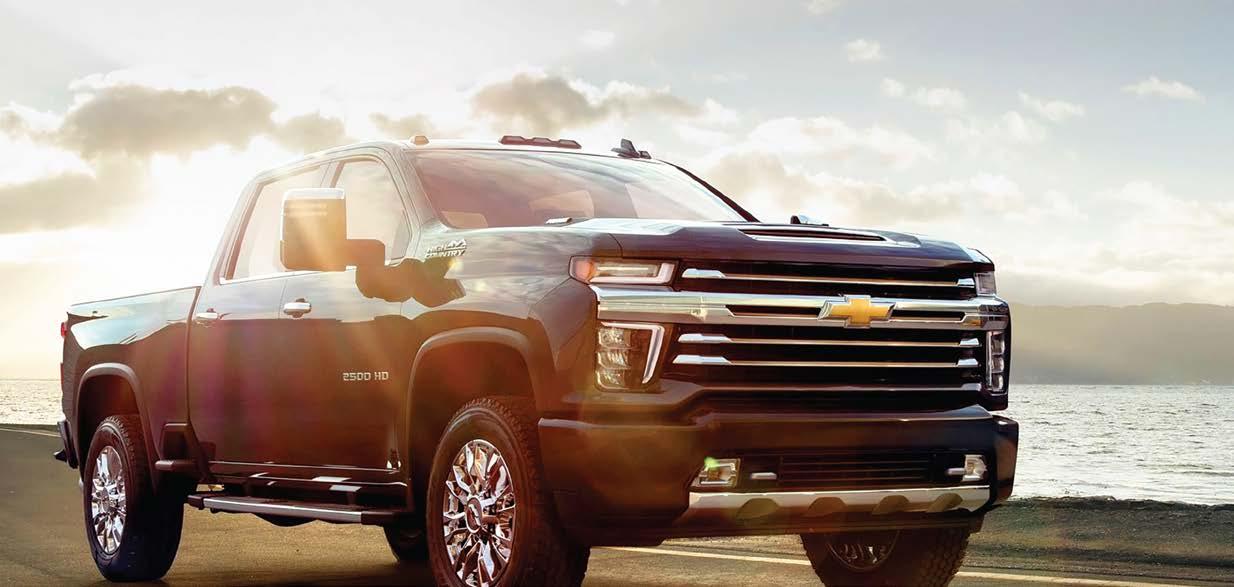



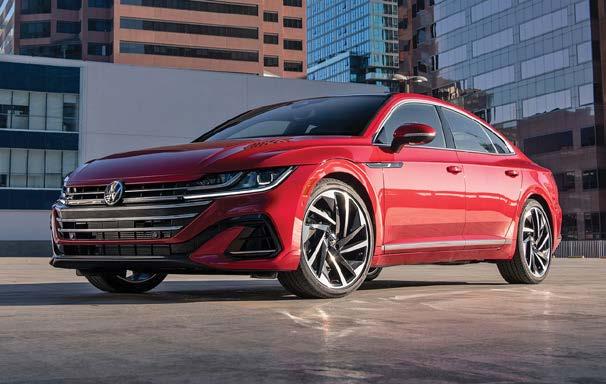





By Brian Bradley Autobody News
The recent interest rate cut by the Federal Reserve could spur more real estate acquisition in the collision repair industry, but it may take months for this and other impacts of the decrease to materialize, according to analysts.
“Interest rate cuts tend to cause capitalization rates to decrease because lower rates can make financing more affordable for investors in commercial properties,” Focus Advisors Senior Associate Madeleine Roberts Rich told Autobody News. “More affordable financing drives up valuations.”
The Fed cut interest rates by 0.5 percentage points to between 4.75% and 5% on Sept. 18, the first cut since March 2020. The action may signal more repair shop expansion and investments on the horizon.
But Rich cautioned it can take a long time for business owners to plan and find financing for major investments such as real estate purchases or business acquisitions. “It certainly does not happen overnight,” she said. It can take a while for other industries to respond to interest rate shifts as well. For instance, experts
expect the Fed rate cut won’t create significant effects in the manufacturing industry until January, spurred in part by an anticipated spike in consumer sentiment as credit card interest rates come down, according to a Sept. 19 article in Manufacturing Dive.
Analysts noted many of the Fed rate cut’s impacts on collision repair industry investments are uncertain writ large. Still, analysts envision a few potential outcomes.
decreases, as borrowing costs for real estate become more affordable, she noted.
“If they own a property where Caliber is the tenant or Gerber’s the tenant or Crash Champions is the tenant, the cap rate on their property’s going to go down a good amount,” Rich said. “Or, if they’re considering … an entry into a lease with that consolidator, they’re going to benefit from the lower cap rates as well.”

Rich said she believes the most significant impacts of the Fed rate cut will be on landlords who own shops occupied by consolidators.
Fed rate cuts generally coincide with real estate capitalization rate
Scott Gould, senior vice president of investments at real estate investment brokerage firm Marcus & Millichap, said the Fed rate cut will likely propel “a little bit more” real estate investment in the collision repair industry.
“There’s still a lot of money on the sidelines just waiting to feel what’s going to happen next,” he said. “There’s that pent-up demand.”
With the rate cut, it could make more sense for high-leverage real estate investors in the collision sphere to snap up more real estate,

Gould said.
“I’m optimistic that that will kick up more activity from passive investors looking to buy body shop properties as income streams,” he said.
However, current construction costs may not yet be conducive to a sustainable greenfield strategy.
National construction costs were about 27% higher in the second quarter of 2024 than in 2019, the last full year prior to the COVID-19 pandemic, according to the most recent Overall Construction Cost Index by construction and real estate development firm Mortenson.
Gould cited some remaining stagnation in the market. Loans aren’t as cheap as they were three or four years ago, which has made financing these investments a lot less attractive.
“The buyers that want to see an adjustment in pricing that haven’t really gotten that from the sellers, so there’s that delta between expectations, which has slowed transactions,” Gould said.
Though the rate cut could catalyze some additional borrowing in the collision repair space, specifically for real estate, analysts believe it’s unlikely the move will directly spark




new company acquisitions.
Multi-shop operators (MSOs) have sought out some debt to drive their acquisitions during the 2020-2024 period of higher interest rates, but the industry can view debt-infused transactions as a gamble, according to Focus Advisors President Chris Lane
“First of all, it’s expensive,” he said. “Second of all, it’s risky.”
The disincentives of seeking debt, continuing high industrywide business valuations, and ongoing robust competition mean a rate shift in and of itself isn’t likely to sway consolidations one way or the other, Lane said.
“I don’t think that the cost of capital is going to influence the rate of consolidation,” he said. “It’s going to continue at the rate that it is. There’s just too much competition for shops that I don’t think the macro picture interest rates are going to matter that much.”
However, outside investors, such as private equity firms that acquire smaller mom-and-pop shops and MSOs, commonly use some bank debt alongside their existing equity to buy those shops and MSOs, Lane said.
four years have translated to banks scrutinizing private equity firms’ financials a bit more, and spending more time in vetting deals they lend
for, he added. So, if more capital opens, collision repair companies’ valuations could potentially see a modest uptick above their already strong levels.
Focus Advisors is a mergers and acquisitions (M&A) advisory firm for collision repair businesses looking to sell or acquire capital to grow. The firm represents the owners, not buyers, and has closed more than 30 MSO acquisitions.
Gould said he has already seen lenders start to quote lower interest rates in response to the Fed’s rate cut.
As of late September, some lenders were considering putting a floor on their five-year adjustments because they don’t know how low interest rates will go, he said.
“They don’t want to do a loan today at 6.5 [percent], and then [the Fed rate] goes back down to 4 [percent], and then they get readjusted much further south,” Gould said.
That said, not all interest rates have responded to the rate cut yet,
than they are on banks’ prime rates, Paul Knowlton, equipment finance sales executive for The Huntington National Bank, told Autobody News.
Banks’ prime rates are more closely tied to the federal funds rate.
“Prime doesn’t lower the 10year cost of money by half a point,” Knowlton said. “But in general, it’s trending the right way, and expectations are for rates to continue to drop and the yield curve to be normalized.”
Knowlton emphasized his opinions were only his, and not Huntington Bank’s.
A Sept. 23 Huntington Bank report noted longer-run rates have decreased for several months in anticipation of the Fed’s September rate cut, including for auto loans and home mortgages.
Further, the nationwide shift to electric vehicles and batteries is prompting a “boom” in factory construction, which is experiencing its highest spending level in decades, increasing from about $900 billion in 2013 to well over $2 trillion in 2023, according to the Huntington report.
How quickly any macro effects of the rate cut spill into the collision repair industry depend on a range of factors, including the ones described above.
Additionally, despite the rate cut, some financial uncertainty has percolated in the collision repair borrowing space regarding the pending November presidential election, analysts noted.
Companies are waiting to see the fiscal and tax implications of the next administration, according to Lane.
“To people, it feels like, ‘I’m more afraid of who the next administration is going to be, and what’s going to happen to my tax rate,’” Lane said. “They feel more strongly about, ‘What are my cap gains rates; what is that going to look like?’ than they do about interest rates. I think a lot of that is probably driving economic decisions.”
Though the political cycle can damper repair equipment acquisition and expansion decisions, it appears the decreased Fed rate is eliminating some of those headwinds, Knowlton






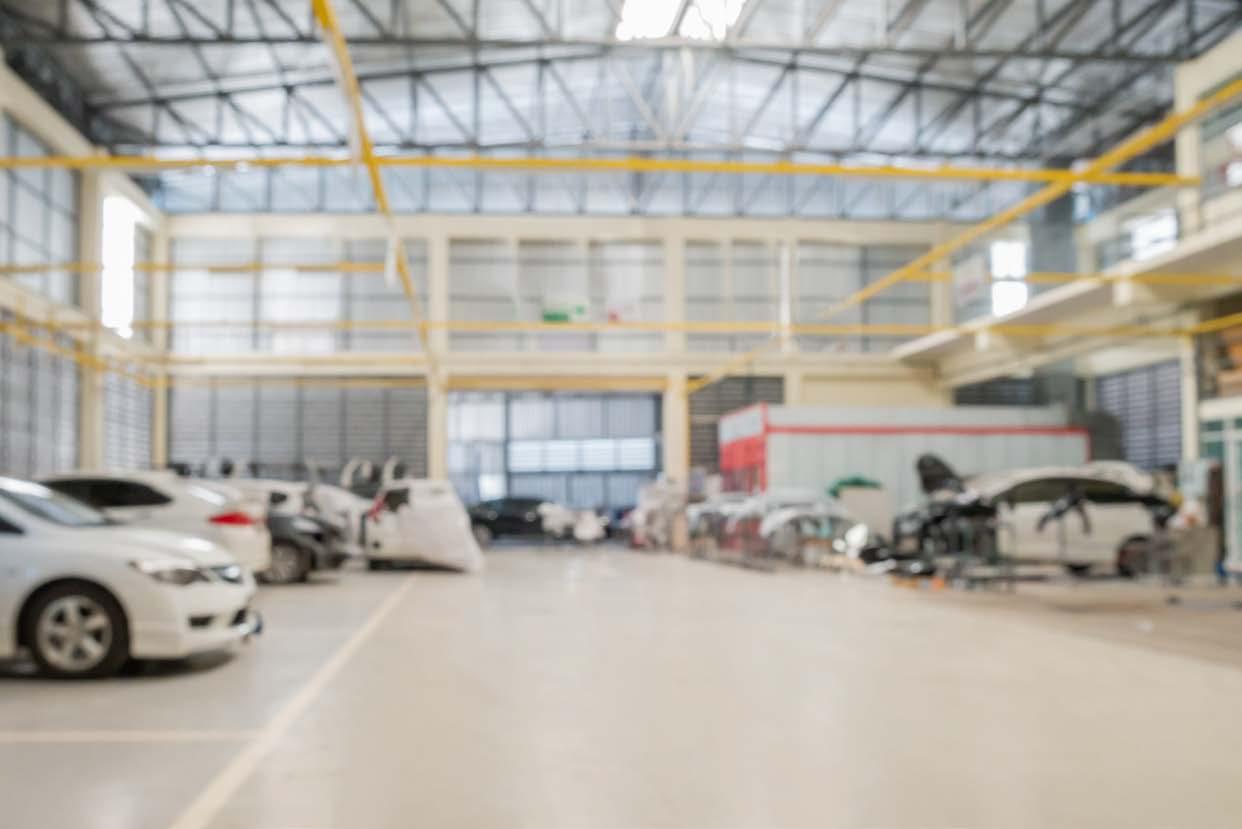
“Anytime there’s an election cycle, there’s uncertainty, and uncertainty isn’t conducive to making future investments, whether it’s buying a business or financing equipment,”
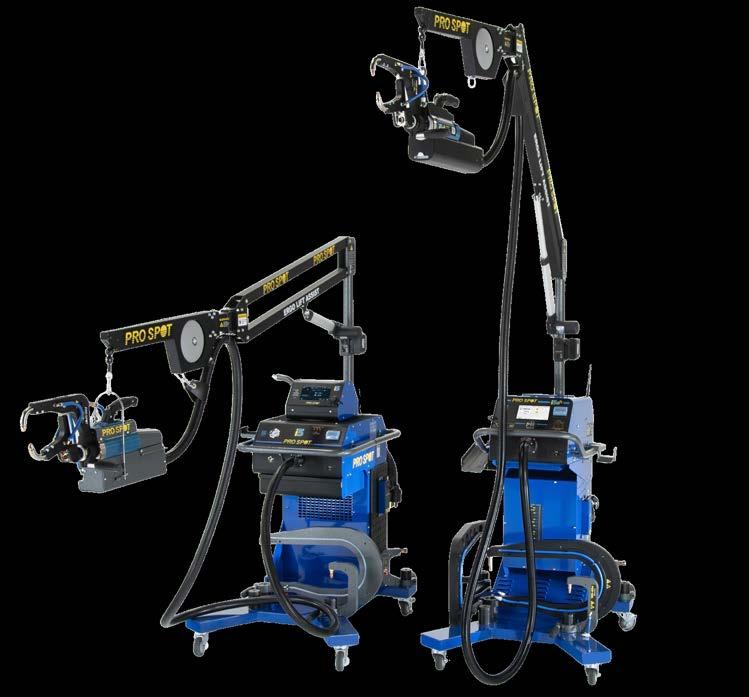


dealers for your Honda or Acura Genuine parts needs.
Nucar Honda of Norwood Norwood
833-319-6270
781-619-6791
Dept Hours: M-F 7:30-5 bh-wholesale@boch com
LIA Honda Northampton Northampton
800-369-7889
413-587-2900
Dept Hours: M-F 7:30-5; Sat 8-3 dstanisewski@liacars com
Clinton Honda
Annandale
877-657-2787
Dept Hours: M-F 8-5; Sat 8-2 abdulc@clintonhonda com
Honda of Turnersville Turnersville
800-883-0002
856-516-6262
Dept Hours: M-F 8-6; Sat 8-4 mbivario@penskeautomotive�com
Hudson Honda
West New York
866-483-6917
201-868-9500
Dept� Hours: M-Sat 8-5 mdasilva@hudsonhonda com
Acura Turnersville
Turnersville
888-883-2884
856-516-6060
Dept Hours: M-F 7:30-5; Sat 7:30-4:30 sbaptist@penskeautomotive com
Autosport Acura
Denville
973-361-3117
Dept Hours: M-F 7-6; Sat 8-4 erin@theautosportgroup com
Bill Vince’s
Bridgewater Acura
Bridgewater
908-704-0307
Dept Hours: M-F 8-7; Sat 8-4 mattn@bridgewateracura com
Madison Honda Madison 800-648-0293
973-822-1710
Dept Hours: M-Thu 7-7; Fri 7-6; Sat 7-5; Sun 8-4 jay madisonhonda@gmail com
Route 22 Honda Hillside
973-705-9100
Dept Hours: M-Sat 8-5 rt22hondaparts@route22honda�com
Scott Honda of Vineland
Vineland
800-893-3030
856-692-4449
Dept Hours: M-F 6:30-5 parts@scotthondavineland com
Sussex Honda Newton 800-842-0557
973-579-3500
Dept� Hours: M-F 8-5 realhondaparts@sussexhonda com
Ide Honda Rochester 800-462-0056 (N.Y.)
585-586-4919
Dept Hours: M-Thur 8-8; Fri 8-5:30; Sat 8-5 parts@idehonda�com
Elite Acura
Maple Shade 856-722-9600
Dept Hours: M-Sat 7:30-6 bmartinsen@eliteacura com
Open Road Acura of East Brunswick East Brunswick 732-238-0777 732-238-5466
Dept Hours: M-F 8-5; Sat 8-4 robert talbot@openroad com
Open Road Acura of Wayne Wayne 973-696-5151
Dept Hours: M-F 7:30-6; Sat 8-4 jonathan tangen@openroad com
Lamacchia Honda Syracuse 315-471-7278
Dept Hours: M-F 7:30-5:30 parts@lamacchiahonda com
Lia Honda of Albany
Albany
518-438-4555
Dept Hours: M-Th 7-6; F 7-5:30; Sat 8-5 mluciano@liacars com
Lia Honda of Brewster Brewster 845-278-4177
Dept Hours: M-F 7:30-5; Sat 8-4 cpaulson@liacars com
Lia Honda of Williamsville Williamsville/Buffalo 877-659-2672
716-632-3800
Dept Hours: M & W 7:30-7; Tu & Thur 7:30-6 Fri 7:30-5; Sat 8-5:30 mmiller@liacars com
Ray Laks Honda Orchard Park 716-824-7852
Dept Hours: M, Tu, Th 8-8; W, F 8-6; Sat 8-5 jmaybee@raylaks com
Acura of Westchester Westchester 914-834-8887
Dept Hours: M-F 7:30-8; Sat 8-4; Sun 9-4 acura parts@yahoo com
Curry Acura Scarsdale 800-725-2877 914-472-7406
Dept Hours: M-F 8-6; Sat 8-5 parts@curryacura com
Paragon Acura Woodside 718-507-3990
Dept Hours: M-F 8-6; Sat 8-5; Sun 9-4 parts@paragonacura com
Baierl Honda Wexford
818-332-7351
Dept Hours: M-F 8-5; Sat 8-4 markludwig@baierl com
802 Honda Berlin
802-223-9700
Dept Hours: M-F 7:30-5; Sat 8-Noon hondaparts@802cars com
Smithtown Acura St James 631-366-4114
Dept Hours: M-F 7:30-5:30; Sat 8-4 parts@smithtownacura com
Baierl Acura Wexford 800-246-7457 724-935-0800
Dept Hours: M-F 8-5; Sat 8-4 cameronegerter@baierl com
Davis Acura Langhorne 267-296-1000 215-943-7000
Dept Hours: M-F 7-7; Sat 8-4 frankp@davisacura com
By Abby Andrews Autobody News
For collision repair shops, working with insurance companies on claims can be contentious and stressful.
Billy Walkowiak is the founder and president of Collision Safety Consultants, a team of independent appraisers specializing in vehicle diminished value, total loss assessments and pre-purchase and post-collision repair inspections.
He joined The Collision Vision podcast, hosted by Cole Strandberg and driven by Autobody News, to talk about how to negotiate with insurance companies, using the right to appraisal clause, the importance of documentation and ensuring shops do right by the consumer.
“I would say the No. 1 issue is ignorance,” Walkowiak said. “Ignorance on the part of the consumer, ignorance on the part of the adjuster. And believe it or not, ignorance on the shop.”
Educating all parties is important. “It seems like no one understands exactly what’s going on unless they’ve had some type of class,” he said.
Walkowiak said he has met shop owners who don’t know the difference between a first-party and third-party claim and how that affects the customer’s rights.
“A first-party claim is when you’re dealing with your own insurance company, who has a contractual obligation to work on your behalf,” Walkowiak said. “They have to be fair and equitable. If they’re not, that opens them up to unfair and deceptive trade practices, bad faith claims, etc.”
A third-party claim, on the other hand, is when the customer’s vehicle is damaged by another person, whose insurance company handles the claim. In that case, the insurance company is trying to protect its own customer by minimizing the amount the insurer has to pay.
“When you try and fight a thirdparty carrier, you’re beating your head against a wall and all you’re going to get is a headache,” Walkowiak said.
“I have to explain that to consumers and shops every day, all day long,” he said. “The reason you pay insurance is to be protected. You don’t pay insurance to pay someone else off.”
Walkowiak said collision repair associations are doing a better job
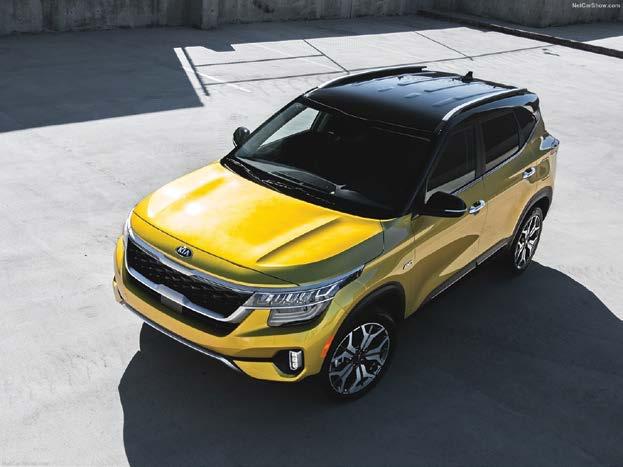


of educating its shop members on topics like contract law.
Repair Appraisal Clause Appraisal clauses – which are not included in every policy -- allow a customer to challenge their insurance company on repair costs. Walkowiak said that benefits not only the customer, but the shop as well.
If an insurer writes an estimate of $10,000, but the shop says it will cost $15,000, the shop has to ask for the remaining $5,000 from the customer to fully complete the repair – unless the customer has an insurance policy with an appraisal clause.
In that case, an independent appraiser, like Collision Safety Consultants, is hired by the insurance company, and they negotiate the claim.
“We call that leveling the playing field,” Walkowiak said.
Walkowiak got into independent appraising thanks to his father-in-law, who co-owned a shop in Belmont, NC. He suggested Walkowiak could help customers dealing with total loss and diminished value claims, as well as post-repair inspections.
“I liked it because I was helping consumers overcome the shortfall between them and an insurance company,” Walkowiak said.
Collision Safety Consultants started with diminished value claims. The company then started doing post-repair inspections.
“We were checking other body shops’ work to make sure that it was done properly and safely,” Walkowiak said. “I was the bad guy. You can imagine what I was known as, and it sure wasn’t a sweetheart.”
Collision Safety Consultants handles shops found to be in the wrong differently, depending on the circumstances.
“If they cheated somebody or committed fraud, all bets are off. We were taking them to the mat. You get no mercy,” Walkowiak said.
But if it was found to be a matter of a tech who took a shortcut, or a new manager who didn’t know a process yet, the appraisal company would take another approach.
“We would educate them,” Walkowiak said. “Catching them doing something bad was probably the best thing that ever happened to them, because we showed them how they could make more money doing it properly.”
From Body Shop Adversary to Asset Strandberg pointed out Collision Safety Consultants seems to have






morphed into an asset for body shops, as it often helps shops get paid for what they believe is a proper estimate.
Walkowiak said shops certified to work on premium brands, like Tesla, Jaguar and MercedesBenz, have the most challenges, as insurers don’t want to pay for higher labor rates. He said that can almost be considered the insurance company’s violation of the contractual obligation between the customer and the shop.
“When you take your car into the shop, that contract is between the vehicle owner and the shop. The insurance company doesn’t come into play,” Walkowiak said. “Now the insurance company says they’re not going to pay the consumer.
“What I’m doing is helping the consumer. I’m not actually helping the body shop now,” he said. “It helps the body shop because they get paid and the consumer feels better about the body shop, and that they don’t have to pay out-of-pocket money.
“But my goal is to make a consumer whole. And in that process, the body shop gets made whole without the consumer getting injured,” Walkowiak said.

Strandberg asked if there are any best practices shops can deploy to negotiate with insurers to get fair compensation.
“Documentation, documentation, documentation, documentation,” Walkowiak said.
He recommended taking photos of every step of the process and printing them out, along with the written OEM repair procedures.
“You’re talking 80, 90 pictures. It’s a little cost of ink, but there is no question. Was it done?” Walkowiak said.
When an insurance company then says it won’t pay for a part of the process, the independent appraiser can point out where the OEM repair procedures called for it.
Insurance companies also challenge labor rates, but Walkowiak said his company fights for higher rates charged by shops that invest in the equipment and training to justify them.
The real key is to be a superior negotiator, Walkowiak said.
“I’m a hell of a negotiator,” he said. “Either people like me, they loathe me or they respect me. Any three of those pretty much gives me what I want.”
Perserverance pays off. Walkowiak suggested going up an insurance company’s chain of command. “Insurance company managers hate to get phone calls,” he said.

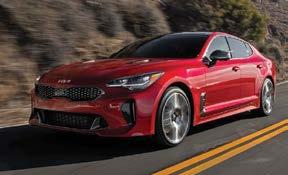
Some shop owners and customers believe lodging complaints about an insurance company with their state’s Department of Insurance doesn’t do anything, but if the same company is reported repeatedly, the managers will eventually make concessions.
“They’re going to come around and say if every consumer is filing a complaint about Jim the adjuster, because Jim doesn’t want to pay for everything, then eventually Jim’s going to get pulled away from that shop,” Walkowiak said.
Strandberg asked about the best approach when trying to negotiate payment with an insurance company.
“I used to come in like a bulldog. Now I’m pretty much nice to everybody, and until someone disrespects me or says something that I can’t live with, I’m still nice,” Walkowiak said. “When it comes to negotiating, just be nice, be polite, be respectful and see what they got. Feel everything out.”
He said there are cases where the issue is more of a clash of personalities rather than a question of procedure.
If there’s “bad blood” between an insurance company and a shop, and the insurer is challenging a repair estimate, Walkowiak said the first option is to check to see if the


customer’s policy has the appraisal clause.
If not, the next step is to ask the insurance company management to assign a new appraiser or adjuster. Or, Walkowiak said, the shop could have a sit-down with the insurance company employee to try to clear the air.
Walkowiak said it is more important to complete every step of a repair procedure than it is to make concessions so the insurance company payment covers it, as improper repairs can cause serious injury or death in a future collision.
“Any shop that performs a repair on a vehicle is liable. Doesn’t matter what the insurance company wrote. Doesn’t matter what the insurance company said. Ultimately, liability falls on the shop owner,” Walkowiak said.
Every customer needs to be educated from the first consultation that their insurance company might tell them the shop charges for things no other shop does, and then how to challenge it.
Walkowiak said customers should be taught to ask which shops charge less, and then ask if those are DRP shops that make concessions so the insurer sends them business.
l CONTINUED ON PAGE 42



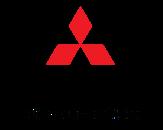
By John Yoswick Autobody News
Donny Seyfer of the National Automotive Service Task Force pointed out a variety of things collision shops and insurers should be aware of related to the lowvoltage batteries within electric and hybrid vehicles, including the fact there are a lot of different chemistries involved.

“It’s very critical that you are aware of what you’re working on, because they’re not all the same,” Seyfer said.
Battery chargers, for example, need to be designed for the type of battery being charged.
Second, battery management systems, even on internal combustion engine (ICE) vehicles, have become much more sophisticated.
“Battery life also is a big issue, depending on where the vehicle lives,” he said, noting that cold and hot climates are hard on batteries.
“So keep in mind that many times you may have a vehicle come in with a pre-existing condition that you [need to] catch on the front-end.”
A pre-repair scan helps ensure a shop and insurer are “not on the hook for things that weren’t related to the accident, nor something that happened in the shop, particularly given the cost of some of these batteries.”
Alternators or generators are battery maintainers, not battery chargers, he cautioned.
“So if you are jumping vehicles and then expecting that alternator to do all the work, you’re beating the living hell out of that alternator,” Seyfer said. “It was not designed for that. In fact, you can cause damage to the battery because the alternator will
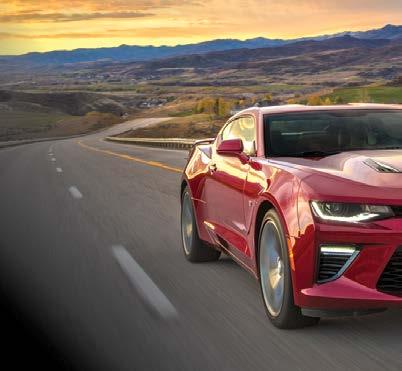
work so hard to do a job that it wasn’t intended to do.”
It’s also very important to know what “fully-charged” means for the different types of batteries.
“A 100% charged 12 volt battery is actually sitting at about 12.7 to 13.2 volts, not 12 volts,” he said.
the only things that can be damaged by an undercharged low-voltage battery on an electric or hybrid vehicle, Seyfer said.

“In fact, if that battery is down to 12 volts, it’s basically discharged. EVs that have lithium ion or lithium iron chemistry functions usually are looking for a 40% to 80% charge. That’s where they work the best. If you overcharge or undercharge them consistently, it hurts them.”
“If the charging system voltage or the battery voltage is low, the starter will work way harder to do its job against that low voltage and it will draw more current, which can just tear up starters,” he said. “Of course, it damages the battery, particularly if they run at these low charges constantly. And most importantly, it can create diagnostic trouble codes that you will have a really hard time diagnosing. If you’re starting vehicles consistently that have low voltage, they start to get a little upset with you.”
Seyfer recommends always looking at the OEM service information to confirm the type of battery the vehicle has.






Alternators and generators aren’t









“Yes, they’re marked, but you might have to take the entire battery
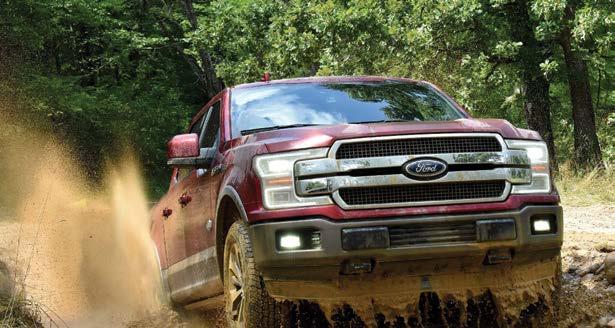













out,” he said. “Many of them are in cases to keep the temperature regulated so they don’t get too hot. So your best bet is to look up the battery in the service information.”
The charging systems often draw current while the vehicle is just sitting, he said.
“And it’s kind of big numbers these days, so you may actually want to maintain a battery while the vehicle is waiting for parts or things that might take a while to get there,” he said. “Make sure you get a [good] battery charger, and the prices are rather stunning. But the nice part is that many of them are capable of doing all different [battery] chemistries for you.
“You may also want to get a power supply, if you don’t already have one, so that when you’re doing remote scanning or you are doing calibrations and things like that, you can maintain that battery voltage in the system continuously, and it replicates what the charging system does while that vehicle is sitting static for a while during operations,” he added.
Charging has to be current-, voltage- and temperature-regulated, Seyfer said.
“If any one of those three parts of the triangle are off, you can damage the battery, any kind of battery,” he
said. “This is why modern chargers are really important, because if you just put the right voltage to it, you could be putting stunning amounts of current in it with some of the old push-around batteries.”
His final caution related to lowvoltage battery systems could come as a surprise to shops.
“It seems to be becoming a more and more common issue: vehicles that are really pretty new that have batteries that are not up to the task, that can set diagnostic trouble codes and give you a major headache trying to diagnose them,” he said. “We [check] this with a scope, but you can easily do this with a volt Ohm meter that has min/max recording capabilities on it. If you start a vehicle while it’s sitting there with what you would consider a correct charge, a battery sitting at, say, 12.7 volts, and you go to crank it, watch to see if that voltage drops too low.
“We had a Subaru recently that was only one year old, and the battery went down to six volts,” Seyfer said. “It was setting diagnostic trouble codes. Tech couldn’t figure out what was going on. That can cause modules to brown out and not work correctly. So just keep that in mind if you’ve got inexplicable things happening, particularly right after a start.”
he said. Despite election timing, there are “a lot of tax benefits to buying equipment in the fourth quarter.”
To be certified to repair their vehicles, some OEMs require body shops to have specific types of equipment, whether it be certain welders, frame straighteners or measuring systems, to name a few.
Companies may have to invest as much as $50,000 to $150,000 in equipment if they want to work on a particular car brand, Knowlton said.
Buying equipment in the fourth quarter of a calendar year, just before tax season, can bring timely benefits.
Internal Revenue Code Section 179 allows businesses to claim lower current-year tax liability for depreciable assets, including equipment, instead of capitalizing an asset and depreciating it over time in future tax years.
“My guess is that the capital equipment people see a pretty good bump here through the year, irrespective of the election,” Knowlton added.
Though new equipment — along with real estate — is a major area that






collision repairers seek financing for, it can be “hit or miss,” as not every shop feels the need to make frequent or higher-end investments in new equipment, Lane said.
That said, the last time frame the collision repair industry found itself in a lower rate environment — during the heat of COVID in 2020 — shops borrowed substantially, including for equipment investments, Rich said.
“They got [Small Business Administration] loans during COVID that when rates were really, really, really low, a lot of collision repair entrepreneurs, fortunately, recognized that this is too good to pass up,” she said.
The Federal Funds Rate sat at 0% to 0.25% in March 2020. It didn’t rise until March 2022, to 0.25% to 0.50%.
Even though rates are nowhere near as low as COVID rates, this is the first rate cut in four years, and anytime there’s a business rate cut, it increases business confidence, Knowlton said.
“Lowering and decreasing rates creates some certainty, which allows companies to look forward a little further,” he added. “Whether it’s the brownfield investments or investing in equipment or buying that shop in the next town, it just makes that path a little smoother and that decision a little easier to make.”
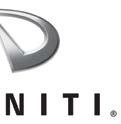







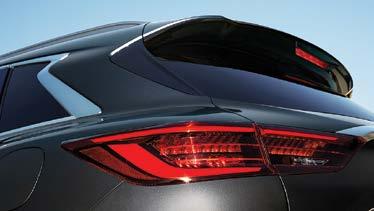
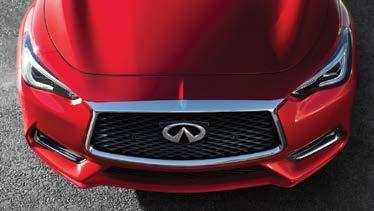
By Brian Bradley Autobody News
A fresh New Hampshire law aims to streamline auto sales to out-of-state buyers, and will likely prevent levying fees for car enhancements during the time between contract execution and delivery to the purchaser, according to auto dealer representatives.
“You can get banks to agree to that, but obviously New Hampshire doesn’t want to see that,” Massachusetts Independent Auto Dealers Association (MIADA) Executive Director Lou Tedeschi told Autobody News. “They’re interpreting it as they’re raising the price of the vehicle, which you can’t do. That breaks federal law.”
MIADA usually tells members to apply their customers’ deposit money for add-ons like lift kits, custom wheels and tires, for example, Tedeschi said.
“We don’t want to raise the price of the vehicle,” he said. “So, we put the vehicle on as the price of the vehicle that was advertised, and then we add that stuff onto different lines of contract, and it really doesn’t even go to the bank. The bank never even sees that.”
About 20% of MIADA’s 180 members do collision repair and/or general automotive repair in addition to selling cars.
The provision preventing car sellers from adding fees to principal loan balances after contract execution took effect Aug. 2, the day New Hampshire Gov. Chris Sununu signed the legislation into law.
The same law also removes the requirement that New Hampshire vehicle dealers notify the state’s department of motor vehicles (DMV) of vehicle sales to Massachusetts residents. That language took effect Sept. 1.
Prior to the legislation, New Hampshire had issued temporary plates for buyers from all states except Massachusetts, New Hampshire Automobile Dealers Association (NHADA) President Dan Bennett told Autobody News. For buyers from that border state, New Hampshire dealers had instead issued a small form that was submitted to the DMV to track sales to Massachusetts residents in lieu of temporary plates, he said.
“Because we weren’t issuing temp plates, the New Hampshire DMV
wanted to be able to keep record of how many vehicles were sold into Massachusetts,” Bennett added. “What the law did was it wipes out that form, and now a New Hampshire dealer selling to a Massachusetts customer is treated the exact same as way all other sales to residents of the other 49 states.”
NHADA comprises about 500 members in the automotive industry, about 8% of which are body shops or parts stores, Bennett said.
The New Hampshire law roughly coincided with a Massachusetts law similarly designed to simplify car sales across state lines.
In April 2023, a Massachusetts law took effect launching temporary tags issued by the state.
Even before that temporary tag law took effect, Massachusetts still had to ultimately collect sales taxes on each car purchase by a state resident, even if the actual purchase occurred in another state. If sales taxes in other states were higher than Massachusetts’ 6.25% car sales tax, residents would be credited the difference, Tedeschi said.
Because New Hampshire has no car sales tax, Massachusetts
residents who purchase there are responsible for the Massachusetts tax without any overpayment credit. These taxes are generally paid at the point of sale, even to dealers in New Hampshire or other states.
Still, e-commerce sellers tried to mask sales to Massachusetts residents as true New Hampshire sales before the Massachusetts temporary tag law took effect, Tedeschi said.
“What happens when you don’t have temporary registrations is there’s a lot of internet commerce going on that is sending paperwork to other states so they can register that car, pay the sales tax in their state, then come pick that vehicle up in Massachusetts, and Massachusetts is losing out on that sales tax,” he said. “Massachusetts isn’t losing that money any longer.”
The New Hampshire Banking Department is doing “outreach and education” on the new law, known as House Bill 1243, until Jan. 1, the department announced.
Businesses with any questions, including compliance challenges, are advised to email nhbd@banking. nh.gov.

















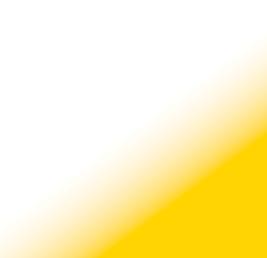

“We’re seeing increases in the average total cost of auto repair,”
James Feehan, a lawyer representing the American Property and Casualty Insurance Association, said at the meeting. “Take, for example, in calendar year 2018, the average total cost of repair was just over $3,000. Compare that to calendar year 2023 at just over $4,500.”
Vermont’s vehicle repair bills are part of a national trend of exploding insurance costs. Automotive insurance pricing has skyrocketed across the nation, according to the latest national Consumer Price Index. Price spikes across the industry are rising faster than in any other category in the American economy. Overall inflation rose by 2.5% year over year, but motor vehicle insurance rose 16.5% across the U.S. since 2023.
According to Feehan, increasingly digitized cars, record vehicle crashes and overall inflation in the new and used vehicle markets have cost insurance companies dearly. Insurance companies struggled to maintain profits with the pricing headwinds in 2023, per SP Global.
Locally, Vermont’s car insurance
rates are lower than those of most other states, according to Money Geek. The site lists the state’s average annual premium at $317, compared to the national average of $615.
However, local shop owners claimed insurance companies were raking in record profits while providing weaker services to drivers, their contracted clients.
“If you’re not careful, all you’ll do is cause more chaos,” Mike Parker, the owner of Rutland-based Parker’s Classic Auto Works, warned the DFR during the public comment, advocating that regulators don’t side with the profit motives of the insurance agencies. “I’ve now stood in the shoes of 2,000 Vermont consumers and taken insurance companies to court.”
Parker pointed out body shops are subjected to pricing shocks without stringent guardrails. Insurance companies are liable for the price of the vehicle’s repair, which collision shops can’t negotiate. He claimed the pricing responsibility motivated insurance providers to use fewer safety-focused parts.
“In our business, we have to contend with individuals who have never worked on a vehicle,” David Ayer, the owner of Ayer Auto Sales in Barre, added in comments during the meeting. “The way that they see and understand how a vehicle should be repaired is inadequate.”
The disagreement highlights the DFR’s delicate task of simultaneously balancing three interests: those of the consumers, the automotive insurance brands and the local collision shop owners.
Regulators said they are still seeking more guidance from auto body shops and drivers.
“We developed a survey that will be released soon and is designed to solicit certain information from auto body shops in Vermont,” Brown told Autobody News. “We are also open to receiving additional comment or documentation beyond the survey.”
The September meeting’s main point person, Vermont’s Director of Insurance Regulation Mary Block, said the regulators would file for an extension as it unveils the survey.
“The report was initially due in November of this year,” Block said during the public meeting. “Given the volume and complexity of information involved, the department intends to seek an extension, probably until February of 2025.”
Vermont residents who hope to add more information to the statewide study are asked to submit questions or comments to mary. block@vermont.gov.
tool is still being run by the technician themselves at their local computer or their local shop,” Romansky said. “But the diagnostics gateway in the vehicle is providing access just as if they were plugged in effectively. So, it’s making it seem as if the tool is talking directly to the car, even though it may be at a distance.”
The next meeting of the working group was scheduled for Oct. 16.



Since launching this year, Auto Additive has positioned itself as a collision repair specialist provider of high-quality, OEM-grade 3D-printed parts, tools and jigs for the automotive repair and customization industry. The company is working with several launch clients in the collision industry from headlight reconditioners, product suppliers and collision repairers to understand the opportunity in these sectors and how 3D printing can help the repair process.
“We have made great progress and already co-developed a number of patented tools and jigs for our clients and are working on some inspiring and ground-breaking solutions that will help transform sectors of auto repair, services and additive manufacturing,” said Harold Sears, head of Auto Additive’s Strategic Advisory Council.
The company’s services include 3D scanning, product engineering, testing and CAD (digital parts) supply chain management.
The company is in the process
of setting up the digital additive manufacturing infrastructure, in the form of “Digital Rails” which will allow any provider with a digital catalog to print with Auto Additive worldwide on demand and with confidence.
“This enables us to provide an industry-first solution and print customer parts on demand anywhere in the world through transparent, blockchain-driven software, providing ultimate client IP protection,” said Sears.
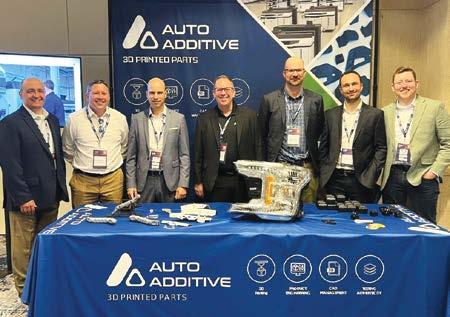
Additive team members and partners include, pictured, left to right: Harold Sears, head of Auto Additive’s Strategic Advisory Council; Peter McAninch, director of Plastrepair EU Limited; Lior Polak, CEO and co-founder of Assembrix; Michael LoPrete, director of process and industry relations for 4Plastic; Brian Driehorst, chief revenue officer at Headlights.com; Bahadir Dogan, global application engineering manager at 3M; and Steve Corzyk, additive application engineer at HP.
“Through collaborations with industry leaders like HP 3D Printing, GKN Forcast 3D and Assembrix, Auto Additive can deliver advanced, sustainable and reliable 3D printing solutions tailored to the needs of the automotive sector,” said Diana Trajcevska , the company’s director of digital innovation.
The goal is to service and open new opportunities for a broader
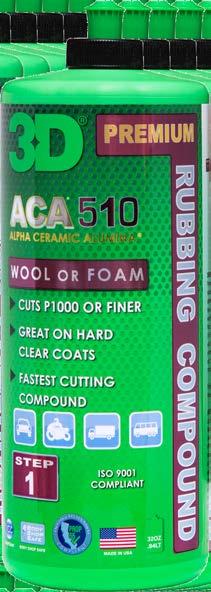
range of clientele, such as OEMs, aftermarket suppliers, collision groups and specialty collision supply businesses.
“We are not a direct parts or product supplier; we provide our services to current parts, tools and consumable suppliers and work with them to solve their and the industry’s needs” through additive innovation, explained Trajcevska.
Auto Additive’s strategic advisory council, led by industry veteran Sears and featuring representatives from GM, HP, I-CAR, Boyd Group, Tesla, SEM / PPG and more, ensures the company stays at the cutting edge of technological and industry advancements.
“We work together to determine best practices and pathways for utilizing 3D printing in the collision repair process and parts supply that will benefit everyone involved,” said Mario Dimovski, a member of the strategic advisory council.
Trajcevska shared two projects that Auto Additive has collaborated on. Auto Additive collaborated with

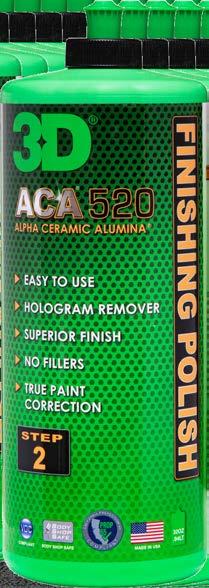



ARTIOLI CHRYSLER DODGE
525 Enfield Street Enfield, CT 06082 (888) 436-6727
MARYLAND
CRISWELL CHRYSLER
JEEP DODGE RAM
84 Bureau Drive Gaithersburg, MD 20878 (301) 212-4453
OURISMAN CHRYSLER
DODGE JEEP RAM 12430 Auto Drive Clarksville, MD 21029 (410) 988-9570 Fax: (410) 988-9591
OURISMAN CHRYSLER
DODGE JEEP RAM 2406 Crain Hwy. Bowie, MD 20716 (240) 245-1966
WALDORF DODGE
2450 Crain Highway
Waldorf, MD 20601 (866) 843-1905 (301) 843-1905
KELLY JEEP CHRYSLER
353 Broadway – Route 1 North Lynnfield, MA 01940 (800) 278-8558
Fax: (781) 581-2490 kjcparts@kellyauto.com
FRANKLIN SUSSEX AUTO MALL
315 Route 23 Sussex, NJ 07461
Order Hot Line: (855) 268-1207 Fax: (973) 875-9088
TURNERSVILLE CHRYSLER
JEEP DODGE RAM
3100 Black Horse Pike Turnersville, NJ 08012 (856) 875-2627

NEW YORK
CENTRAL AVENUE
CHRYSLER JEEP DODGE WHOLESALE DIVISION
1839 Central Park Avenue
Yonkers, NY 10710 (800) 967-5298
Fax: (914) 961-4313
EASTCHESTER CHRYSLER JEEP DODGE
4007 Boston Road Bronx, NY 10466 (914) 597-7018
NEMER CHRYSLER JEEP
DODGE RAM OF SARATOGA
617 Maple Avenue Saratoga Springs, NY 12866 (518) 584-0058
ROCKLAND CHRYSLER JEEP DODGE
60 Route 304
Nanuet, NY 10954 (845) 623-1367
Fax: (845) 623-0903
4Plastics to develop the Plastic Repair Push Tool using advanced 3D printing technology. Trajcevska said the tool addresses challenges in repairing impacts on bumper covers by offering a precise, efficient solution.
“The tool’s innovative design and durable material significantly improve repair quality and reduce labor time and costs,” he noted.
To tackle the issue of damaged or missing tabs on headlights, Auto Additive, in collaboration with Headlights.com and Forcast 3D, introduced 3D printed weld-on PP tabs.
“These tabs can be welded directly onto headlights, matching the original OEM material’s durability and reducing the need for costly replacements,” explained Trajcevska. “This innovation will enable repair shops to restore more headlights with broken tabs efficiently, cutting costs and minimizing environmental impact by reducing landfill waste.”
“It’s important to understand that Auto Additive is not doing anything new,” said Sears. “We are playing the role of a fast follower, bridging the gap of 3D printing between vehicle OEMs who are 3D printing parts now and various other industries that have already adopted this technology for manufacturing or replacement parts.” These industries are rapidly
increasing and include the U.S. Navy, defense, rail, aviation, agriculture, aerospace, appliances and sporting goods manufacturers.
“Our mission is to bring the same quality and materials used by OEMs in their 3D printing of parts for new cars in the manufacturing process to the automotive repair and replacement market,” said Sears.
“We also need to consider that Auto Additive’s solutions will have an enormous impact on the environment and sustainability,” added Trajcevska.
“This is a core value at Auto Additive.”
By using additive manufacturing processes, Auto Additive hopes to enable customers and the industry to reduce waste by diverting previously non-repairable parts from landfills and lowering the carbon footprint associated with traditional manufacturing methods.
Auto Additive has also recently become a member AMGTA (Additive Manufacturing Green Trade Association), joining a string of global 3D printing companies promoting sustainability in 3D printing.
“This commitment to sustainability is reflected in our mission and it will form one of our key reporting metrics, providing clients with waste diversion and carbon offset reports within our service offerings,” concluded Trajcevska.

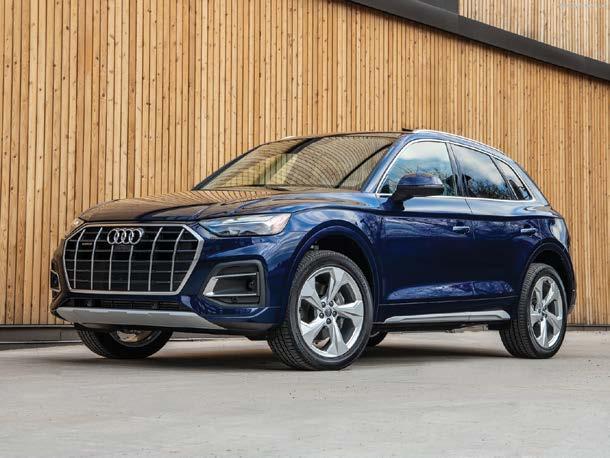

“I’ve seen it in multiple shops that are doing it this way, and they set that customer up and prepare them, and then they’ll go, ‘Oh man, that adjuster said exactly what you told me they were going to say before they said it,’” Walkowiak said. “That stops the insurance companies telling the consumer that the shop is overcharging for stuff.”
Never trust the person that owes you money to determine how much money they owe you. Walkowiak said that is his company’s tagline.
Do your homework. Use resources like I-CAR, ALLDATA and OEM1stop.com to research OEM procedures and get those documented in the repair process, so there’s less pushback when the estimate is sent.
Protect the consumer. That consumer is going to tell others, and it’s going to build your business. You’re going to do a better, safer, complete repair without your customer being out of pocket money.
ASE announced a partnership with Convertible AI to establish artificial intelligence accreditation criteria in the automotive diagnosis and repair sector, a significant step towards integrating advanced AI tools into everyday automotive service practices.
This partnership will focus on three main objectives: assessing AI performance and fairness, examining AI transparency and accountability, and defining ethical guidelines and best practices. The first area involves rigorous testing of AI systems across various automotive scenarios to ensure accuracy and mitigate bias. The second will tackle the transparency of AI-driven diagnostics, aiming to make AI decision processes clear and auditable for technicians. Lastly, the initiative will look at setting ethical standards for AI in automotive services, focusing on privacy, data governance, and regulatory compliance.
With ASE’s 52-year history of promoting excellence through certification and Convertible AI’s cutting-edge technological prowess, this partnership is poised to shape the future of automotive services.



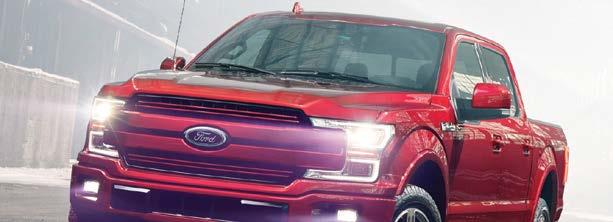





Mercedes-Benz of Wilmington Wilmington 302-995-5030
302-995-5033 Fax
M-F 7:30am - 5pm Sat 8am - 2pm parts@mbofwilmington.com www.mbofwilmington.com
Mercedes-Benz of Burlington Burlington 833-768-5924
617-275-2182 Direct 781-229-1600 Main
M-F 7am-6pm Sat 8am-5pm parts@mbob.com www.mbob.com
Mercedes-Benz of Hanover Hanover 781-924-4210
M-F 7:30am-5pm Sat 8am-4pm mbhanoverparts@gp1auto.com
Smith Motor Sales of Haverhill, Inc Haverhill 877-764-8462 Direct
877-SMITH MB 978-702-5020 Fax M-F 8am-5pm
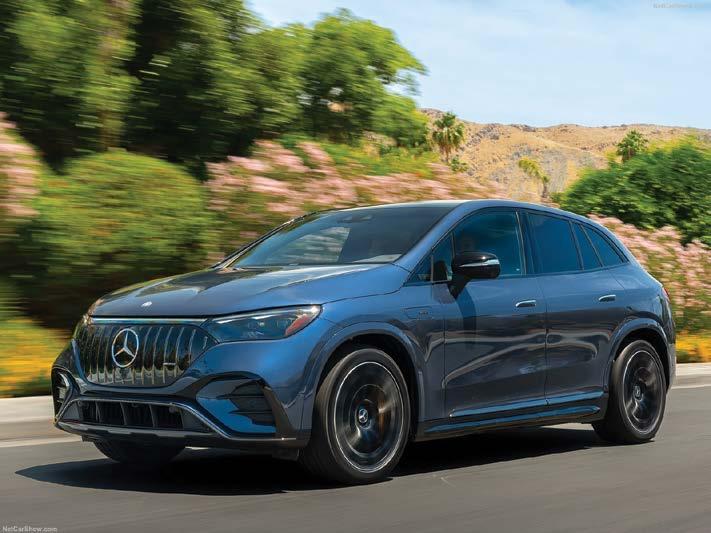
Mercedes-Benz of Goldens Bridge Goldens Bridge 914-232-8146
914-232-4770 Fax
M-F 8am - 5:30pm Sat 8am - 2pm achristiano@mercedesbenzgb.com www.mercedesbenzgb.com
Mercedes-Benz of Smithtown St. James 631-265-5339
631-265-8146 Fax
M-F 8am - 5pm Sat 8am - 4:30pm mlevantino@mbofsmithtown.com www.mbofsmithtown.com
Mercedes-Benz Atlantic City Pleasantville 609-645-9310
609-272-1535 Fax
M-F 8am - 6pm Sat 8am - 4pm bmorey@mbofatlanticcity.com
Mercedes-Benz of Newton Newton 800-842-0557
888-302-2369
973-383-1284 Fax
M-F 8am - 5pm realmercedesparts@mbofnewton.com
Mercedes-Benz of Fort Washington Fort Washington 267-419-1414
201-765-9760 Fax M-F 7:30am - 6pm Sat 7:30am - 5pm mbpartswholesale@yourmercedes.com
Mercedes-Benz of West Chester West Chester 484-313-1110
484-313-1002 Fax M-F 7:30am - 6pm Sat 7:30am - 5pm parts@mbofwestchester.com
Viti Mercedes-Benz Tiverton
800-544-5580
401-624-6181
401-624-4817 Fax
M-F 7:30am - 5:30pm Sat 9am - 5pm eric@viti.com www.viti.com
Working on cars wasn’t totally new, but learning how to remove their hood and trunk was for some.
SUNY Morrisville auto body technology freshmen Juliana Kucera, of Elma, NY, and Simarah Samson Davall, of Augusta, NY, tackled it with ease during Alex Graf’s auto body fundamentals lab.
Removing the hood and trunk were just two of the items on a checklist that Graf, automotive instructional support associate, devised to give students myriad and new experiences. Many of the cars they work on are donations, thanks to grants, networking and partnerships.
It wasn’t a totally new experience for Manny Melendez either. Melendez’s Brooklyn high school included an aviation program where he gained mechanical and other skills he’s putting to good use.
“I have always liked cars, so I made the switch from planes to cars,” he said.
But that wasn’t the only reason why he chose SUNY Morrisville, part of the State University of New York system. His aunt is an alumna and he wanted to expand his
technical background — hands-on.
That and a passion for automobiles is what drove Kucera to SUNY Morrisville.
“The college has an excellent reputation for its auto programs and hands-on — and I am a handson learner,” she said. “I love the lab work. We always have live work.”
Kucera worked as a service writer in a dealership setting before coming to SUNY Morrisville to pursue hands-on work she loves.
The program is already giving her vital experience toward her goal of being a vintage restoration technician and owning her own body shop.
Many of Graf’s students were already familiar with SUNY Morrisville’s auto programs through professors’ work and connections with technical and BOCES programs.
“It led me here for sure,” said Samson Davall, who has a twoyear BOCES education under her belt.
Dylan Renodin, of Rome, NY, heard about the college from his BOCES program, where he specialized in auto body. He came

to SUNY Morrisville to round out his skills in the automotive technology program.
“Each class is something different,” Renodin said. “It is always hands-on in the labs and we get to work on a variety of cars.”
Professors were another factor in his decision to attend SUNY Morrisville.
“I really like the teachers. They are very experienced and when I came to visit, I saw how well the students were being treated,” he said.
Faculty, who are experts in their field, round out the experience, as well as automotive facilities, which are up to speed with the everchanging auto industry, offering the latest in technology and equipment.
A graduate of SUNY Morrisville’s auto body technology ’16 and former entrepreneurship & small business management ’18 programs, Graf went on to earn his master’s degree from SUNY Poly. His breadth of experience includes vintage Volkswagen restoration and early 1900s Cadillac restoration. An I-CAR certified instructor for GMA
MIG welding, he is also a technician in painting and non-structural repair.
A 14,000-square-foot auto body technology building houses the most current tools and equipment for collision repair and metal fabrication. Set up as a real-world auto body shop, students perform live laboratory work and help staff a parts department and live service desk to gain experience with repairs, refinishing and estimating.
Features that deliver a modern refinishing environment supported by industry leaders include a frame and body laser alignment system, superior air purification equipment, mixing system, in-floor heating and an environmentally friendly Garmat crossdraft paint spray booth, which can dry a coat of paint in half the normal time.
Graduates have the option to transfer into SUNY Morrisville’s bachelor of technology degree program in automotive technology or the bachelor of business administration degree program in automotive management. For more information, visit www. morrisville.edu.











Connecticut
BMW of Darien Darien
203-328-1325
203-978-0043 Fax
M-F 8am-5pm wholesale@bmwdarien.com
BMW of Ridgefield Ridgefield
203-438-0413
203-894-8956 Fax
M-F 7:30am-5pm parts@bmwofridgefield.com
BMW of Waterbury Waterbury
844-895-6839
860-274-5471
860-274-0617 Fax
M-F 7:30am-5:30pm Sat 7:30am-4pm John.musco@hoffmanauto.com
BMW of Catonsville Catonsville
855-996-2906
410-818-2600 Fax
M-F 8am-5pm www.bmwofcatonsville.com
BMW of Silver Spring Silver Spring
301-890-3015
800-288-6982
301-890-3748 Fax
M-F 7:30am-5pm wholesaless@mileone.com www.bmwofsilverspring.com
Hampshire
BMW of Stratham Stratham 800-989-5200 vfollansbee@group1auto.com www.bmwofstratham.com
New Jersey
BMW of Bloomfield Bloomfield 888-261-6471
973-748-8373
M-F 8am-5pm Sat 8am-4:30pm psantos@dchusa.com
BMW of Morristown Morristown
973-796-3145
973-796-3146 Fax
M-F 8am-6pm wholesaleparts.bmw@openroad.com www.bmwofmorristown.com
BMW of Newton Newton
973-579-6020
973-579-6702 Fax M-F 8am-5:30pm www.bmwnewton.com
Circle BMW Eatontown 732-440-1238
732-440-1239 Fax M-F 7:30am-5pm Sat 8am-3pm Wholesale@circlebmw.com www.circlebmw.com
Park Ave. BMW South Hackensack 888-349-5168
201-291-2376 Fax
M-F 8am-5pm Sat 8am-4pm al@parkavebmw.com www.parkavebmw.com
New York
BMW of Bayside Bayside
516-304-3733
516-570-4268 Fax M-Sat 8am-5pm bmwparts@bmwbayside.com www.bmwbayside.com
Competition BMW St. James 631-724-3322 631-265-0501 Fax
M-F 8am-5pm Sat 8am-4:30pm asolla@competitionbmw.com www.competitionbmw.com
Habberstad BMW Huntington Station
631-271-7488
631-271-7931 Fax
M-F 8am-5pm Sat 8am-4pm parts@habberstadbmw.com
Keeler BMW Latham 877-553-3909
518-785-4197
518-785-4710 Fax
M-F 7:30am-6pm Sat 8am-4pm bmwparts@keeler.com www.keelerbmw.com
Pennsylvania
BMW of York York
717-849-6597
717-843-2948 Fax M-F 7am-6pm Sat 8am-12pm bmwpartsmanagers@cioccaauto.com www.bmwofyork.com
Rhode Island
BMW of Newport Middletown 401-847-9600
401-841-0680 Fax M-F 7:30am-5:30pm gromani@metromotorgroup.com wwwbmwofnewport.com
By Leona Scott Autobody News
As electric vehicles (EVs), especially battery electric vehicles (BEVs), become more common, collision repair shops face many challenges, such as managing high-voltage batteries, thermal runaway risks and complex diagnostics. Advanced tools, proper training and realtime access to OEM repair data are essential for safely handling BEV repairs and ensuring shops stay competitive.
In this question-and-answer article, Craig Edmonds, president of asTech, prepares repairers for

the challenges of repairing BEVs. In addition, we hear from a collision repair shop in Glendale, AZ, which is positioning itself as consumers’ goto repair solution for BEVs.
Q:As EVs become more common, how can collision repair shops address the unique challenges?
Edmonds: As EVs become more prevalent, collision repair shops face several challenges. A major concern is the complexity of high-voltage (HV) systems, particularly in battery electric vehicles. BEVs rely entirely on large HV batteries for propulsion, introducing safety and technical challenges during repairs. Unlike traditional internal combustion engine (ICE) vehicles, BEVs require specialized training and equipment to handle these powerful batteries safely.
One of the most significant challenges for repair shops is managing the HV battery, which stores substantial energy. Mishandling can lead to dangerous outcomes. Untrained technicians risk severe injury, while improper repairs could cause further damage to the vehicle. Another challenge is the risk of thermal runaway, where an unseen internal HV battery issue, such as
damage from an accident, could cause a fire. Shops must diligently monitor the battery’s condition, especially after a collision. What might look like minor damage to the battery shell could result in a catastrophic fire if not handled properly.
Moreover, BEVs depend on complex thermal management systems to regulate battery

temperature. These systems must function correctly to avoid overheating, which could lead to battery degradation or failure. Collision repair shops must


understand and assess these systems during repairs to ensure battery health.
Technological tools can play a key role in identifying battery issues. Once it’s safe, performing an OEM or OEM-compatible pre-scan can provide insights into the battery system’s condition. However, while onboard diagnostics help, they don’t always capture physical damage sustained in an accident, so combining data from scans with a thorough visual inspection is essential.
How important is it for shops to have a comprehensive repair plan when dealing with EVs, and what role do tools like asTech’s play in ensuring those repairs are efficient and accurate?
Edmonds: Developing a thorough repair plan is critical for any vehicle, but especially for BEVs. Their increased complexity means that even small mistakes can turn a repairable car into a total loss. Additionally, the rising costs associated with BEV components make precision in the repair process vital.
Diagnostic tools are evolving along with vehicle technology. Many legacy OEMs have adapted their









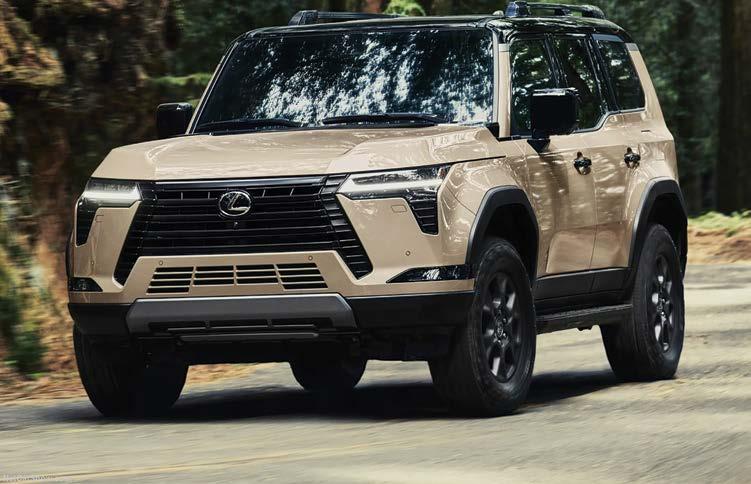

diagnostic methods to fit BEVs, helping their dealer networks avoid learning entirely new systems. However, newer BEV manufacturers are introducing more sophisticated onboard computers, integrating diagnostic tools directly into the vehicle. This shift requires technicians to adapt and learn to interpret data in new ways.
Tools like those provided by asTech can simplify this process. By connecting directly to OEM tools, shops can access the most up-to-date diagnostic procedures, ensuring technicians work with accurate data. These tools also help technicians understand complex reports and meet insurance carrier requirements, further streamlining the repair process.
Q:What are some key differences between traditional and EV repairs?
Edmonds: Safety is one of the main differences between traditional vehicle repairs and EV repairs. While conventional vehicles don’t pose the same level of risk, working on a damaged BEV introduces hazards like high-voltage electrocution or fire. Developing safety policies and ensuring all technicians are trained on BEV systems is essential. Shops cannot afford to take risks when it comes to EV repairs.
How can advanced diagnostic tools and real-time access to OEM repair data help shops avoid common issues?
Edmonds: Advanced diagnostic tools and real-time access to OEM repair data are invaluable for shops working on BEVs. Battery diagnostics and HV system repairs are complex and require up-to-date information. Before a BEV enters the garage, shops must have the right tools, equipment, training and repair data. Access to OEM repair data in real-time ensures that technicians know the latest procedures and can avoid common pitfalls in EV repairs.
Being “service ready” for BEVs means thoroughly preparing with the necessary knowledge, parts, and skills. Waiting until a BEV arrives to start learning puts the shop and its staff at significant risk. Instead, preparation is key to maintaining safety and ensuring accurate and efficient repairs.
Arizona Collision Shop Adapts to EV Repair Market by Being ‘Service Ready’
Leigh Vilcak, body shop manager at Sands Collision Center in Glendale, AZ, is preparing his team to work on BEVs. The facility has been partnering with asTech for many years, and its partnership has


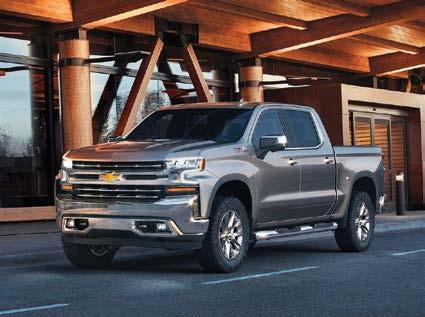



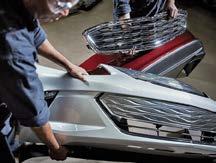

encouraged it to be more “service ready.”
“At Sands, we’re just beginning to see BEVs enter our service department, though not many have come through the body shop yet,” Vilcak said.
Sands Collision is part of an automotive group that also owns Chevrolet and Kia dealerships. The collision center is becoming a GMcertified repair facility.
“Manufacturers are increasingly restricting the sale of BEV parts to non-certified shops, which has made certification a top priority for us,” Vilcak said.
In addition to becoming GM-certified, Sands Collision has significantly invested in upgrading its equipment. BEVs often come with heavier batteries, which require more substantial lift equipment. Sands plans to invest in a $68,000 frame rack to accommodate the structural needs of BEVs.
Vilcak said the body shop has created clean, dedicated areas for working on EVs, especially since many BEVs are made with aluminum. Aluminum is more susceptible to cross-contamination and galvanic corrosion, he explained, and it presents unique safety risks due to its explosive
tendencies in dust form. Therefore, high-voltage components and explosive dust are a huge risk when not properly handled.
Training has been a critical focus for Vilcak’s team. “We’re ensuring that our technicians are fully equipped, from using the correct safety gloves to learning how to store the large batteries that come with BEVs properly,” he said.
The collision repair industry must focus on continuous learning and adaptation. Although BEVs are gaining traction, they won’t dominate the market for several years. Meanwhile, hybrid vehicles will likely become more common as OEMs continue to develop and invest in them.
Repair shops must prioritize education and training in new vehicle technologies to remain competitive. Establishing standards for learning about electronics, advanced driver assistance systems (ADAS), programming and diagnostics is critical. By creating a strong foundation of knowledge in these areas, shops can ensure they are ready to service current and future vehicle technologies.












By Elizabeth Crumbly, Autobody News
Automotive repair is benefitting from 3D printing in myriad ways, from the busting of supply chain blockages to innovations in parts and tools.
Steven Corzyk, a mobility application engineer with Hewlett Packard, appeared on AirPro Diagnostics’ TechTalk360 webinar series to talk about the benefits this technology brings to the industry. The process of 3D printing, he explained, is a cost-effective alternative to injection molding, in which molten material is injected into a mold before cooling and solidifying.
Printing can bring about a freer design process without a need for the die drawing and undercuts injection
molding uses. Cost reduction is another big benefit. Printers, Corzyk said, can mean rapid, less costly prototyping and the ability for short runs. And time to market can also see significant improvement from printers, which can move that process from weeks to days with rapid production and adaptation of parts for changing product lines. Printer users can quickly move from design reviews to part reviews, too, he said, thereby reducing product transport time.
Some aspects of injection molds make printers look especially flexible. The long lead times injection molding often require eventually affect end
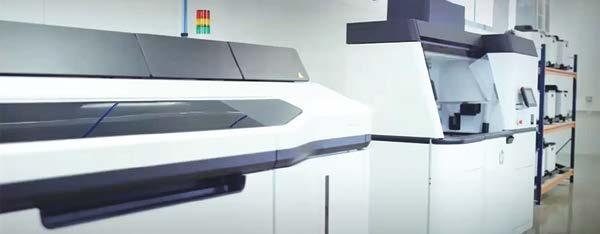


customers. Molds lost or damaged during shipping slow the process even more, Corzyk pointed out. Aftermarket supplies, which require stock storage, can trigger supply
performance, reduced process waste. There’s the possibility for lots of variations bespoke to customer needs with no additional tooling, he said, and there’s less waste in
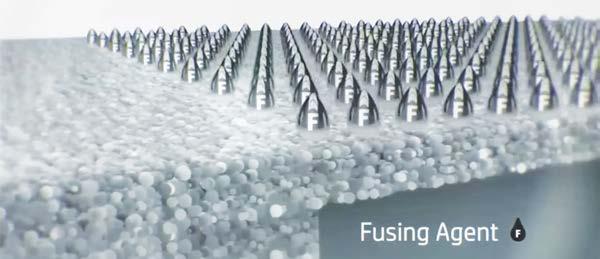
chain disruption when out of stock triggers are tripped, and besides that, he contended, new design iterations and improvements for molds are expensive.
The speedy, adjustable properties of printing, by contrast, can have a positive effect on supply chains, Corzyk said. And they offer sustainability in the form of lightweight and efficient part design optimized for function, better
printing than in molding. Printing, he pointed out, also means fewer assembly requirements and thereby reduced usage of adhesives.
3D products run a gamut that can help in processes ranging from transport to design to production. Parts that need to be contained in a specific way, Corzyk said, can benefit from custom-printed










Maryland
Ourisman Chevrolet
MARLOW HEIGHTS
800-358-7788
301-899-6990 Direct
301-899-9375 Fax
M-F 7:30 am - 6 pm Sat 8 am - 4 pm wholesale@ourisman.com www.ourismanchevrolet.com
Ourisman Chevrolet of Rockville
ROCKVILLE
800-345-4640
301-424-5332 Local
301-294-6381 Fax
M-F 7 - 5:30
Massachusetts
Balise Chevrolet Buick GMC Business Elite
SPRINGFIELD
413-233-2185
413-733-8617 Fax
M-F 8 - 5 lvazquez@baliseauto.com
Nucar Chevrolet of Norwood NORWOOD
800-559-9210
781-762-9210
800-991-1009 Fax
M-F 7:30 - 5 rlindner@nucar.com
Long Cadillac SOUTHBOROUGH
508-820-9322
800-982-2258
508-879-1212 Fax
M-F 7:30 - 5 tschube@longauto.com
Marty’s Buick GMC
KINGSTON
800-870-7573
781-585-7570
781-585-2966 Fax
M-F 7:30 - 5:30; Sat 8 - 4 brucem@martysbuickgmc.com
Massachusetts
Mastria Buick Cadillac GMC RAYNHAM
888-572-1045
508-822-4074 Fax
M-Th 7:30 - 7:30; F 7:30 - 6 Sat 7:30 - 5 wholesale@mastria.com
New Jersey
Barlow Chevrolet DELRAN
800-220-1452
856-461-8417
856-764-1498 Fax
M-F 7 - 6; Sat 8 - 4 pseay@barlowautogroup.com
Cadillac of Mahwah MAHWAH
201-579-6497
201-579-6506 Fax
M-F 7 - 5
Malouf Buick GMC
NORTH BRUNSWICK
800-669-6256
732-821-5410
732-821-7549 Fax
M-F 8 - 4:30; Sat 8 - 12 kreimann@malouf.com
Malouf Chevrolet Cadillac
NORTH BRUNSWICK
800-769-6256
732-821-1517 Fax
M-F 7:30 - 5 kdiperi@malouf.com
Nielsen Chevrolet DOVER
973-366-1730
973-366-5867 Fax
M-F 7 - 4:30; Sat 8 - 4:30 parts@nielsenchevy.com
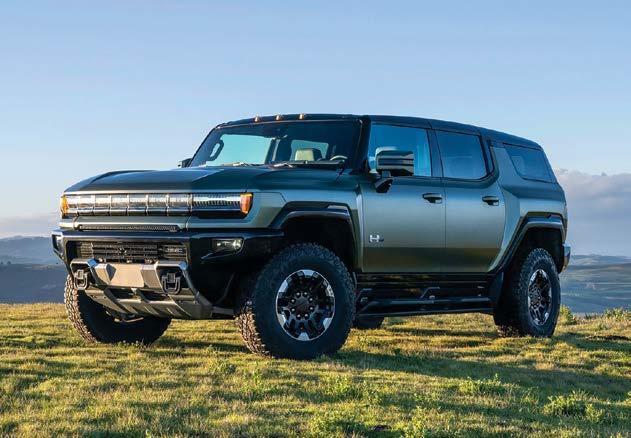
Open Road Cadillac FLORHAM PARK
973-845-3014
973-538-6978 Fax
M-F 7 - 5
Christopher.salgado@openroad.com
Open Road Chevrolet UNION 800-981-9451
908-686-2727
908-687-4267 Fax
M-F 8 - 5; Sat 8 - 4
Christopher.salgado@openroad.com
New York
DePaula Chevrolet ALBANY
800-727-8357
518-489-0184 Fax
M-F 7:30 - 6; Sat 8 - 5 parts@depaula.com
East Syracuse Chevy EAST SYRACUSE
315-437-5464
315-437-0878 Fax
M-F 7:30 - 5; Sat 8 - 3 partsdept@esyrchevy.com
West Herr Chevrolet ORCHARD PARK
716-662-7707
716-688-5519 Fax
M-F 7:30 - 5; Sat 8 - 4 sgraham@westherr.com
Pennsylvania
Greencastle Chevrolet
GREENCASTLE
717-597-2131
717-597-6932 Fax
M-F 8 - 5; Sat 8-3 jsnyder@greencastlechevy.com bmoats@greencastlechevy.com
Tom Hesser Chevrolet SCRANTON
800-435-9586
570-558-3677
570-342-8645 Fax
M-F 8 - 5; Sat 8 - 2 mhanson@tomhesser.com




packing, storage and transport materials like cardboard or molded foam. Visual prototypes can help in design processes, and short runs of aftermarket parts can aid in repairs on out-of-production vehicles.
Printing of tools, he said, is particularly influential in standardization of procedure in repair of common or recurring problems in car models. 3D printers, he said, can produce elastomeric materials, which are nonmarring — an especially important property for tools.
While the production cost is generally lower than with molds, and processes can be flexible, 3D printing comes with its drawbacks. Most printed parts, Corzyk pointed out, are gray, although some can be made in white. These colors are fine for most tools or fixtures, but they aren’t acceptable by OEM Class A standards. Dying, painting or finishing of parts, he said, is a way around this factor.
The printing process uses a layering effect. Inside a 3D printer, a thin layer of powder is spread across the build chamber. When the print heads come across, they use black ink, which promotes energy absorption. As the powder passes melting temperature, it fuses to the layer below it. This
Porsche Genuine Parts and Service, only at your local authorized Porsche dealer.
process, Corzyk said, happens hundreds of times, and the resulting item is encased in excess powder which is captured with a vacuum.
HP printers, he said, have produced parts used by major auto manufacturers. An alignment assembly tool has allowed Volkswagen to install badges on the front of its vehicles more efficiently. Ford has used printed wax sealant nozzles, and Peugeot offers a printed elastomer car accessory.
When choosing a printer, Corzyk stressed, it’s important to look for a legitimate brand.
HP, as an example, he said, has put significant effort into pursuing certifications for approved parts when it comes to factors like flammability, dimensional accuracy and cytotoxicity. When individuals with non-OEM certified printers make cheap items, buyers may not know they’re not legitimate choices for spare parts and in-plant usage. Top-level OEMs, Corzyk said, are taking counterfeits seriously and are coming up with ways to make printed parts verifiable. Since parts are printed layer by layer, a QR code or serial number can be embedded. UV ink can also be a way to identify counterfeit parts with blacklightvisible images.
Rafael Davila, known as “Robbin Hood,” of Springfield, MA, was sentenced to 10 years in prison for leading a theft ring responsible for substantial property theft across Massachusetts, including catalytic converter thefts from nearly 500 vehicles, jewelry store burglaries and ATM heists.
Davila pleaded guilty in April to multiple federal charges, including conspiracy to transport stolen property and money laundering.
Officials noted a marked decrease in catalytic converter thefts, a central element of Davila’s operations, following his arrest. Prior to his capture, the region saw hundreds of incidents over a nine-month period, which plummeted to just nine in the 18 months post-arrest.
Davila, 34, was also mandated to forfeit assets acquired through his criminal enterprises, including luxury vehicles and recreational equipment such as jet skis. Additionally, the court ordered him to pay restitution of approximately $157,000 and complete 75 hours of
community service.
Prosecutors estimated the total losses due to Davila’s crimes at about $2 million, affecting more than 300 victims ranging from automotive businesses to vulnerable individuals. Each stolen catalytic converter, prized for their precious metals, fetched more than $1,000 on the black market, but cost the victims between $5,000 and $10,000 to replace.
In addition to vehicle-related thefts, Davila confessed to stealing from ATMs and committing burglaries at two New Hampshire jewelry stores.
Davila is the fourth defendant sentenced in this case; three more co-defendants are awaiting their sentencing. This case underscores a robust response to the surge in catalytic converter thefts, a national issue driven by the high market value of the metals contained within.
More than 70 local police departments across Massachusetts, New Hampshire and Connecticut worked together to dismantle Davila’s operation.

MARYLAND
Porsche Silver Spring Silver Spring, MD
800-288-6982
301-890-3748 Fax wholesales@mileone.com
MASSACHUSETTS
Porsche Norwell Norwell, MA
781-261-5230
781-261-5274 Fax porschenorwell.com
NEW JERSEY
Porsche Monmouth West Long Branch, NJ
732-483-8560
NEW YORK
Porsche Huntington Huntington Station, NY
631-424-1310
631-272-1805 Fax
M-F 8-5; Sat 8-4 parts@porschehuntington.com
Porsche Manhattan New York, NY
347-226-3913
212-208-0916 Fax parts@manhattanmotorcars.com
Porsche of Southampton Southampton, NY
631-204-2565
631-204-2559 Fax gspano@porscheofsouthampton.com
Porsche South Shore Freeport, NY
516-277-0542 516-277-0543
M-Sat 8-5:30 mtotaram@mcgovernauto.com
PENNSYLVANIA
Porsche Main Line
Newtown Square, PA
610-886-1010
610-886-1020 Fax
M-Sat 8-5 jprice@potml.com
M-F 8-5; Sat 8-4:30 avacchiano@penskeautomotive.com ©2024 Porsche Cars North America, Inc. Porsche recommends seatbelt usage and observance of traffic laws at all times.

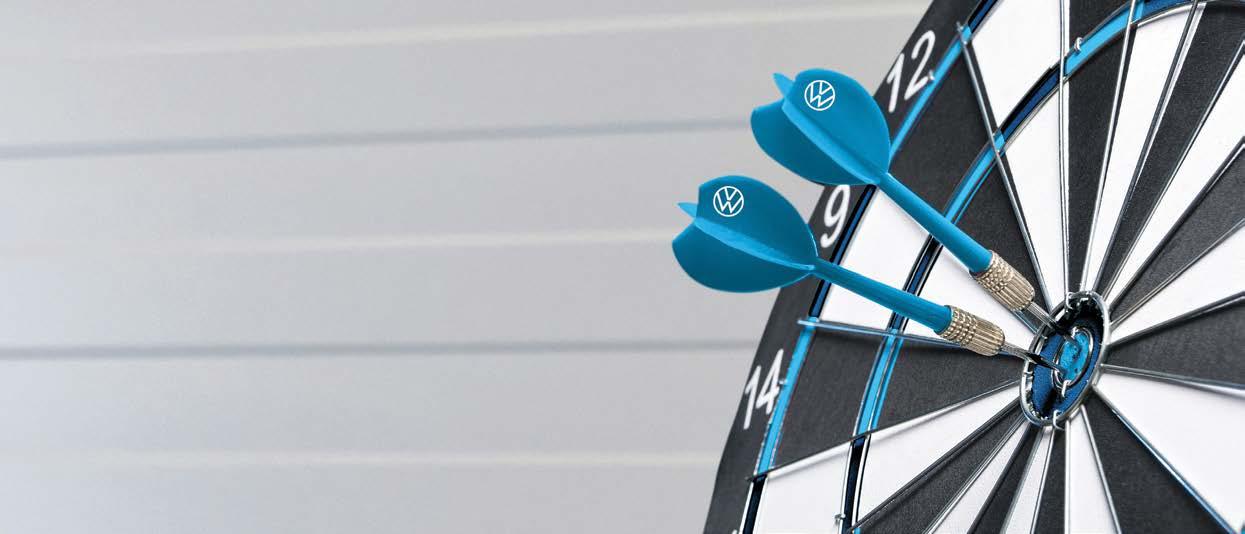
Lia Volkswagen Enfield
860-698-6890
Fax: 860-265-7840
M-F 8am-5pm; Sat 8am-12pm aguimaraes@liacars.com
Ourisman VW of Rockville Rockville
855-417-4511
Fax: 240-499-2488
M-F 8am-5:30pm; Sat 8am-5pm rockvilleparts@ourismanautomotive.com www.rockvillevolkswagen.com
Nucar VW of Norwood Norwood
781-725-8505
Fax: 800-991-1009
M-F 7am-5pm Not-allusers@nucar.com www.nucar.com
Volkswagen of North Attleboro North Attleboro
508-695-7131
Fax: 508-695-0321
M-F 8am-5pm; Sat 8am-2pm kenr@driveavw.com www.driveavw.com
Open Road Volkswagen of Bridgewater Bridgewater
908-685-1068
Fax: 908-685-1547
M-F 7:30am-5pm; Sat 8am-3pm vwb.parts@openroad.com www.openroadvwparts.com
Paul Miller Volkswagen Bernardsville
908-360-1162
Fax: 908-766-6171
M-F 8am-5pm; Sat 8am-4pm aaitchison@paulmiller.com www.paulmillervw.com
Hudson Valley Volkswagen Wappingers Falls
845-298-2365
Fax: 845-224-3686
M-F 7:30am-5pm; Sat 8am-5pm billsantoro@thepremiercollection.com
Platinum Volkswagen Hicksville
516-822-4800
Fax: 516-822-4831
M-F 7:30am-5:30pm parts@platinumvw.com www.platinumvw.com
Ciocca Volkswagen Allentown
610-791-4177
Fax: 610-289-7016
M-F 8am-5pm; Sat 8am-4pm cioccavwparts@cioccadealerships.com
Piazza Volkswagen of Langhorne Langhorne 215-741-4100
Fax: 215-752-6621
M-F 7:30am-5pm; Sat 8am-5pm www.piazzavw.com langwholesale@piazzavw.com
By Leona Scott Autobody News
Meet Jorge Sandoval, winner of the Auto Glass Technician Olympics (AGTO) Competition. AGTO is the Olympics of the automotive glass industry, a premier international competition designed to honor the technicians who complete the best auto glass installations.
The 2024 event occurred during Auto Glass Week, held Sept. 19-21 in Orlando, FL. After three previous tries, Sandoval beat 28 competitors to come out on top in 2024. His journey to victory is anything but conventional. His story is one of resilience, hard work and a commitment to excellence and quality craftsmanship.
Sandoval owns KD Auto Glass in Moreno Valley, CA, and is an instructor for Kaizen Glass Solutions. He has spent more than two decades perfecting his skills in the auto glass industry.
From Humble Beginnings to Business Ownership
Sandoval’s story began in 1999 when he moved to the U.S. However, he got fired from his sales position in 2012 and, from there, went full-time into
auto glass work. He landed in the auto glass field almost by chance.
“I met a guy doing auto glass work, and we’d replace two to three
“I knew then that I wanted to be known for doing the job right and hold myself to higher standards than just chasing money,” he said.

After honing his skills and gaining experience, Sandoval started his own business, KD Auto Glass, in 2018. The business is named after his 10-year-old son, Diego, affectionately known as “King Diego.”
Before establishing KD Auto, Sandoval operated under various names but finally decided to put down roots and build a brand that stood for quality and reliability. “There is a right way to do this job; I wanted my business to reflect that.”
A Champion’s Training Ground
Sandoval’s journey to victory at the Auto Glass Technician Competition wasn’t without its challenges.
he said.
He said preparation was key to his success. Guided by a former champion and backed by sponsors like Shauna Davis of Kaizen Glass Solutions and DuPont Rep Jaime Mendoza, Sandoval spent an intense month of rigorous study, familiarizing

himself with every detail of the Auto Glass Replacement Safety Standards (AGRSS).
windshields a day,” Sandoval recalled. It wasn’t long before he realized most people in the field focused more on profit than quality.
“It’s my fourth time competing. The first time, I got second place. The second time, I got third. In West Virginia, I got fourth place. Finally, this time in Orlando, I won first place,”
The competition is grueling, requiring competitors to complete complex procedures in a limited time while maintaining high quality and customer service.
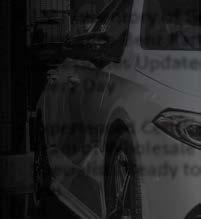



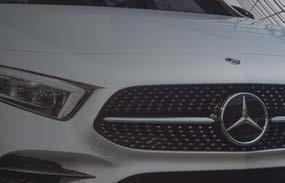


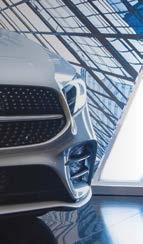









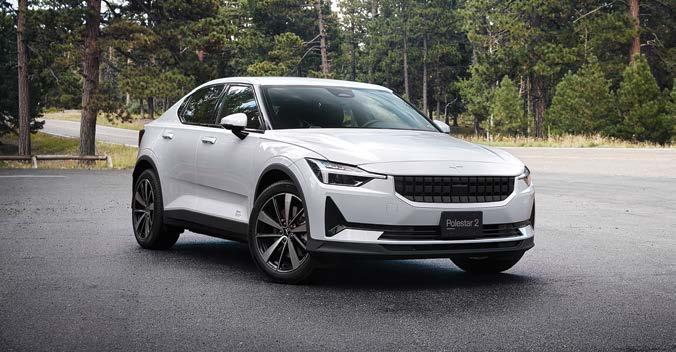




specifically
from original




Napoli Indoor Kia Milford
203-876-3331 (203) 876-3325 Fax
8am-6pm Mon-Fri paulc@napolimotors.com
Gary Rome Kia Enfield
860-253-5095 (860) 265-2674 Fax
8am-7pm Mon-Thu 8am-5pm Fri; 8am-4pm Sat parts@garyromekia.com
Kia of Attleboro South Attleboro
508-761-9300 (508) 761-0768 Fax
8am-8pm Mon, Wed; 8am-5pm Tue, Thu, Fri 8am-4pm Sat frank@courtesyma.com www.courtesyma.com
Lev Kia of Framingham Framingham 800-462-1014 (508) 626-1585 Fax 7:30am-6pm Mon-Fri parts@levkia.com
Bob Bell Kia Baltimore 800-638-4967 (410) 285-1376 Fax
7am-7pm Mon-Fri
7am-5pm Sat smelson@bobbell.com
Liberty Kia
Ramsey 201-818-8995 (201) 783-8848 Fax
8am-5pm Mon-Sat
joel@libertykiaofnj.com www.libertykiaofnj.com
Kia of Middletown New Hampton 845-374-6575 (845) 374-4718 Fax 8am-5pm Mon-Fri 8am-3pm Sat nissankiaofmiddletownparts@yahoo.com www.kiaofmiddletown.com
Northstar Kia
Long Island City (718) 683-5300 (718) 489-9889 Fax
M-F 7:30am-5pm; Sat 8am-2pm www.northstarkiany.com
Brown Daub Kia Easton 610-829-3020 (484) 546-0292 Fax 7am-5pm Mon-Fri 7am-3pm Sat parts@browndaubkia.com www.browndaubkia.com
Outten Kia Hamburg 610-562-4166 (610) 562-9436 Fax 7:30am-5pm Mon-Fri 8am-12pm Sat rwagner@outtencars.com www.outtenkia.com
Berlin City Kia Williston 800-684-5779 (303) 928-6905 Fax 6am-6pm Mon, Wed, Fri 6am-7pm Tue, Thu 7am-3pm Sat ableau@berlincity.com
*Kia Genuine replacement parts sold but not installed by an Authorized Kia Dealer are covered for 12 months from purchase date, regardless of mileage, for the part only, and any labor charge is the consumer’s responsibility.
The Auto Glass Technician Competition tests both technical skills and customer service. Competitors must complete windshield replacements and recalibrations while proctors act as mock customers, posing questions and evaluating responses.
“You have one hour and 20 minutes to do everything,” Sandoval said. “You must log your information and pay attention to time, temperature, humidity and paperwork. You have to answer the proctor’s questions and be friendly, all while staying focused on the task at hand.”
There were 29 competitors this year, and the elimination process lasted for two days. Based on technical execution and knowledge points, the field was narrowed down to four finalists who competed on the final day.
Winning the competition not only brought Sandoval the $10,000 prize money, which he plans to use for a family vacation, but it also cemented his status as a leader in the industry. KD Auto Glass continues to grow, offering replacement and recalibration services that cater to the increasingly complex needs of modern vehicles.
“The industry is changing rapidly, especially with ADAS. Customers want to go to shops that can do it all, and that’s what we aim to provide,” said Sandoval.
Sandoval advises those aspiring to reach similar heights: “If you really want to win, you have to study the rules and commit to constant improvement. It’s not just about the work you do — it’s about doing it the right way.”
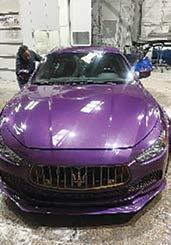
Maaco in Union, NJ, has taken its custom car painting to the small screen, providing expertly crafted, vibrant vehicle
designs for a streaming series set to premiere this fall. The shop’s craftsmanship and attention to detail shine through in the show’s featured vehicles, bringing bright and bold colors to the screen.
In February 2023, Mohammad Ehtesham, owner of Maaco in Union for more than 20 years, was approached by a company that specializes in supplying vehicles for film, television and commercial industries.
“We have had the privilege of working with this company before and are always excited to complete work for film and television,” said
Shehryar Ehtesham, Mohammad’s son and a Maaco Union employee. “However, we don’t always know where the cars are going or what films or shows they will debut in.”
Completing the work required was a lot of pressure, but the Maaco Union team rose to the challenge. The team was tasked with painting all the taxis and cars that served as vehicles for extras, and a set of classic purple Maseratis with gold wheels.
“For those that don’t know the science behind paint color, gold isn’t really a color,” said Shehryar Ehtesham. “Our painters created a special mix with several rounds of testing to guarantee the unique color and desired shine.”
The meticulous work to create the gold color is reflected on the wheels and the trim of the Maseratis.
After initially working in the software industry, Shehryar Ehtesham has since been with the Maaco brand for four years. He loves the excitement and variety that each day brings, just like getting to work on vehicles for a TV series.

MARYLAND
BOB BELL NISSAN
Baltimore
800-638-4967 (410) 282-2432 (410) 285-1376 Fax
M-F 7-7, Sat. 8-5 smelson@bobbell.com
MASSACHUSETTS
NUCAR NISSAN OF NORWOOD
Norwood 781-619-7270 (781) 619-7280 Fax
M-F 7-5, Sat. 7-4 rlindner@nucar.com
DARTMOUTH NISSAN
Dartmouth
508-996-3200
(508) 994-1997 Fax
M-F 7:30-6, Sat. 7:30-4 parts@dartmouthnissan.com
NISSAN 24
Brockton
508-513-1816
(508) 513-1858 Fax
M-F 7:30-6, Sat. 7:30-4 parts@nissan24auto.com
ROUTE 9 NISSAN
West Westboro
508-389-4300 parts@route9nissanauto.com
NEW YORK
ROCKLAND NISSAN
Blauvelt
845-358-3670 (845) 358-6049 Fax
M-F 7:30-5:30, Sat. 8-4 ldesir@rocklandnissan.com www.rocklandnissan.com
RHODE ISLAND
STATELINE NISSAN
East Providence
401-572-3445
(401) 572-3665 Fax
M-F 7:30-6, Sat. 7:30-4 parts@statelinenissanauto.com

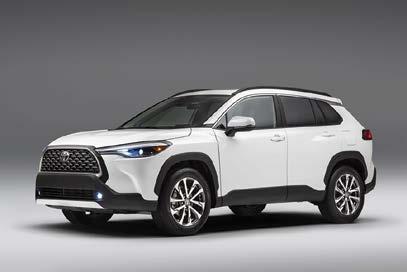
Volvo Cars Princeton LAWRENCEVILLE
609-882-5140 877-66-VOLVO
609-882-1515 Fax
Hours: M-F 8-5 gerlachd@volvocountry.com



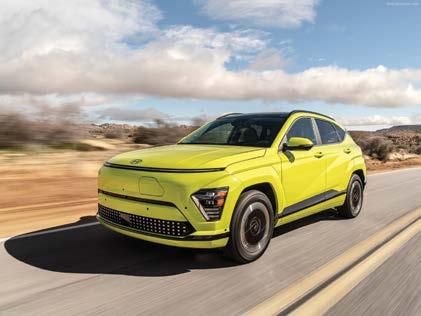
Connecticut MERIDEN HYUNDAI
Meriden 318 South Broad St. 203-935-0896 203-935-0895
com
Toyota of Norwood NORWOOD
800-991-1009 Fax M-F 7am-5pm Not-allusers@nucar com www nucar com
Fax M-Th 7:30am-7pm; F 7:30am-6pm Sat 7:30am-5pm toyotaparts@griecocars�com www griecotoyota com



Norwood 391 Providence Hwy. 800-559-9210
781-762-9210
800-991-1009 Fax Mon-Fri 7:30am - 5pm rlindner@nucar.com
203-440-9969 Fax Mon-Fri 7:30am - 5pm Sat 8am - 4pm parts@meridenhyundai.com Massachusetts NUCAR HYUNDAI OF NORWOOD









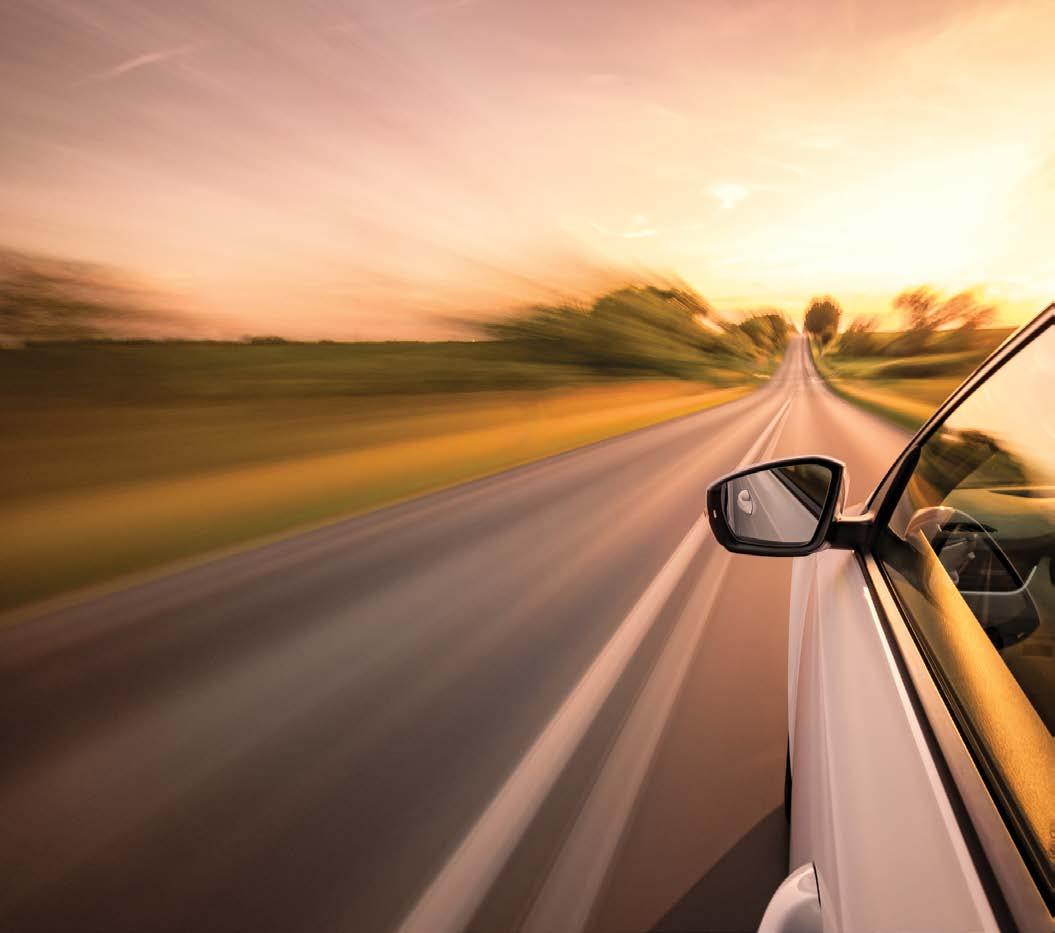
www.capacertified.org

The following dealerships are eager to serve your needs. Call your local Subaru collision parts specialist today!


Cityside Subaru
Belmont
(617) 826-5013 (617) 489-0733 Fax Mon.-Fri. 7:30-5:30 parts@citysidesubaru.com
Long Automotive Group
Framingham (800) 982-2298 (508) 879-1212 Fax Mon.-Fri. 7:30-5 tschube@longauto.com
Metrowest Subaru LLC
Natick (888) 456-2200 (508) 745-2004 (508) 647-1539 Fax Mon.-Sat. 7-9 parts@metrowestsubaru.com

Liberty Subaru Emerson (888) 782-9493 (201) 261-3261 Fax Mon.-Fri. 7:30-6 parts@libertysubaru.com www.libertysubaru.com
Ciocca Subaru of Allentown Allentown (844) 210-1314 (610) 395-6530 (610) 398-2066 Fax Mon.-Fri. 7:30-5 subaruparts@cioccadealerships.com



Belknap Subaru Tilton (800) 358-4029 (603) 729-1300 (603) 729-1301 Fax Mon., Wed., Fri. 7:30-5 Tue., Thu. 7:30-7; Sat. 9-3 awright@belknapsubaru.com


Audi Part Professionals are experts on collision parts, replacement components and mechanical items.
Order Audi Genuine Parts from these select dealers.
Audi Silver Spring Silver Spring
301.890.3015
800.288.6982
301.890.3748 Fax
M-F 7:30am-5pm wholesaless@mileone.com www.audisilverspring.com
Audi Shrewsbury Shrewsbury
888.751.7214
508.581.5880
508.845.1642 Fax
M-F 7:30am-5pm audiwholesaleparts@mcgovernauto.com
Bell Audi
Edison
732.396.9630
732.396.9090 Fax
M-F 8am-5pm Sat 8am-4pm dmcsorley@bellaudi.com
Paul Miller Audi Parsippany
862.277.0009
973.575.5911 Fax
M-F 8am-6pm Sat 8am-5pm www.paulmilleraudi.com Audiparts@paulmiller.com
NEW YORK
Audi Southampton Southampton
631.204.2565
Tue-Sat 8am-5pm parts@audisouthampton.com www.audisouthampton.com
Biener Audi Great Neck
516.487.0127
516.829.4821 Fax M-F 8am-4:30pm Sat 8am-4pm www.bieneraudi.com alutchman@biener.com rfeyjoo@biener.com parts@biener.com
Audi Devon Devon
610.263.7026
610.263.7027
610.688.1742 Fax M-F 7:30am-6pm Sat 9am-4pm www.audidevon.com bnawn@audidevon.com wmohler@audidevon.com
Regardless of the age of your customer’s Audi, Audi dealers have access to over 200,000 part numbers and are supported by a nationwide network of distribution centers to help ensure non-stocked parts are delivered the next day.
Two U.S. Marine veterans were recently gifted fully refurbished vehicles, improving their ability to access work, medical care and daily necessities, thanks to the National Auto Body Council (NABC) Recycled Rides program, along with contributions from car donor GEICO and repair partner Benner’s Auto Body in Cranford, NJ.
The recipients, Andrew Lewis and Joseph Potter, were both selected by the New Jersey Veterans Network for their exemplary service and current needs.
Lewis, a single father and a student completing his master’s degree in social work, expressed profound gratitude for the 2017 Honda CR-V he received.
“Thank you guys so much. This is unexpected. I didn’t see this beautiful car coming into my possession, so I want to thank everyone that participated into helping this Marine out,” Lewis said.
“The National Auto Body Council, thank you for this wonderful car. It’s going to be in good use, will help me complete my master’s in social work and also help other veterans.
But more importantly, it’ll help me get to places that I’ve struggled to get to up to now. Thanks again, I appreciate it and God bless America.”
further. With his arthritic condition, he needs a reliable vehicle to get around. He was presented a 2020 Hyundai Elantra.
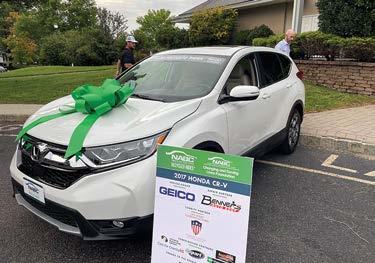
Potter served in the U.S. Marines from 1982 to 1988, and then in the reserves from 1988 to 1996. His deployments included Okinawa, Japan; South Korea; Norway; Greenland and Denmark. Among his awards earned was the Sea Service Deployment ribbon.
Potter’s current car has more than 320,000 miles on it and although he takes good care of it, it is not expected to go much



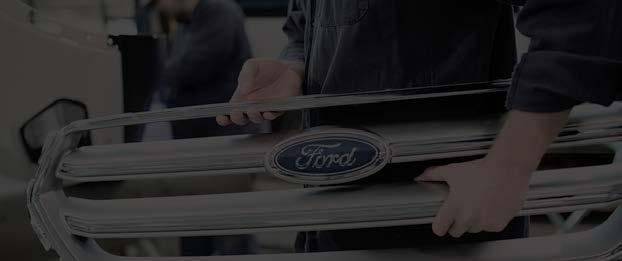
NABC Recycled Rides is a unique program in which businesses representing all facets of the collision repair industry team up to repair and donate vehicles to individuals and families in need of reliable transportation. Since the inception of the program in 2007, members of the NABC have donated more than 3,300 vehicles valued at some $47 million.
“Our company has a strong connection to the community, especially to our veterans,” said Joe O’Neill, president of Benner’s Auto Body. “We are blessed to be able to help them any way we can!”
AsTech Names New Additions To Leadership Team
Repairify announced two new additions to its leadership team: Mike Gugino as chief revenue officer and Kennedy Taylor as senior vice president of marketing. Gugino joins asTech bringing a distinguished background across the military, investment banking and technology sectors, and a track record in driving business outcomes and strategic growth. Before joining asTech, he served as head of international operations and strategy at Axon, where he managed a global sales force and oversaw business operations, sales enablement and strategic partnerships across more than 30 countries.
Taylor brings more than a decade of marketing expertise to her new role as senior vice president of marketing, and a strong track record in developing and executing innovative marketing strategies that drive growth and enhance brand recognition. Her career highlights
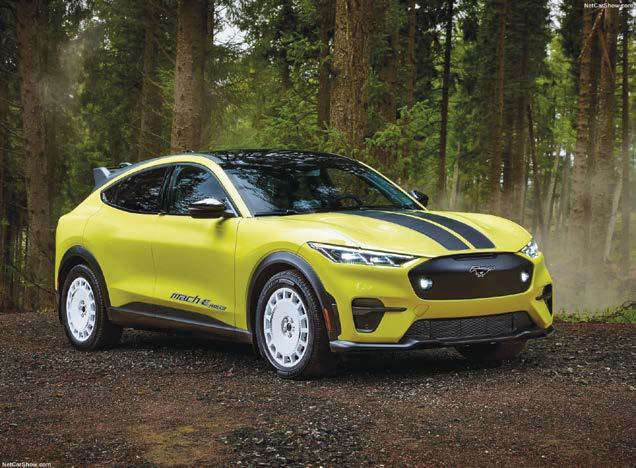
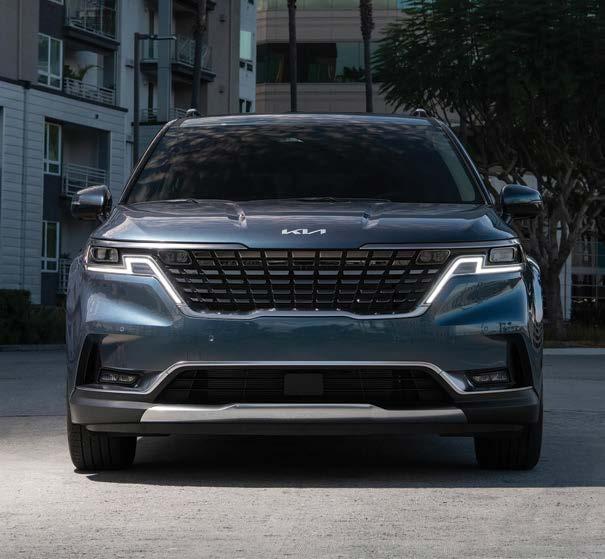
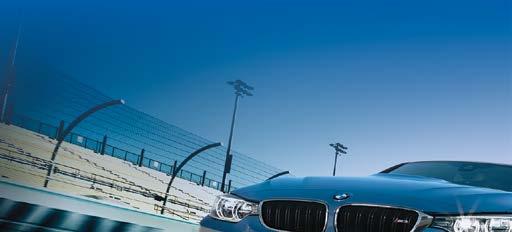








7:30am-6pm Sat 8am-4pm rhealy@prestigelexus com www�prestigelexus�com






By Toby Chess Autobody News
It has been nearly a year since I found some new and improved tools at the last SEMA Show. If you are at SEMA this year, take a few minutes to check out these tools in person.
I purchase these tools, most of the time, and I do not get paid or take any compensation from sales. There are competitors with similar items and you may want to do your homework before purchasing. If anyone has a similar product, send me an email; I would like to check it out. Moreover, if anyone has a neat new tool, I would like to hear from you.
I recently wrote about Car-Rep’s 2K Epoxy Primer. It is a true 2K material. When one sprays the product, moisture in the air will mix with the catalyst, and that starts the crosslinking process. The product has a 3-year shelf life and it is at the right price point.
Since the last time I wrote about this new technology, the company came out with two different products, a top coat (three colors) and DTM primers (five colors). Both are 2K epoxies.
Requiring no primers or clear coats, Car-Rep 2K Top Coats are easy to apply and are the only 2K Top Coats which require no mixing and feature unlimited pot life. They are

available in high gloss jet black, satin jet black and high gloss pure white.
The other products from Car-Rep are OEM match DTM primers. Same technology, 2K epoxy primer. There are five colors to match OEM colors: light green, olive green, black, white and gray.
Polyvance has a hot air welder for $600. It’s a great starter tool for a shop that has no plastic bumper


welder. They also have a bumper pliers kit that makes repairing broken tabs much easier.
Technicians often have difficulty restoring the correct dimensions of the slot, which is critical for proper bumper installation. This kit will allow the tech to quickly and accurately repairs torn slots and recessed bolt holes in automotive bumpers.
Last year, I showed a drill bit set from Astro Pneumatic. Everyone I have shown them to has gone to Amazon and purchased the kit.
At the same time, I purchased their in-line 4-inch Quick Change Cut-Off tool. It is one of the easiest tools to use to cut a straight line. (I also have the long corner grinder from Dent Fix,
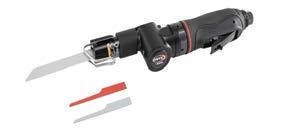
and it does an excellent job of cutting along a line.) It has a great price point

— less than $80 at Amazon — and you do not have to think twice about purchasing it.
I also purchased Astro’s #936 Onyx Gear Driven Heavy Duty Air Saw. I have seen the Snap-on air saw used on the structural steel test and it is one of the best, but it is a little pricey. The Astro air saw is just as good and sells for less than $150 on Amazon. I found a substitute cut-off disc at SEMA from Millner-Haufen Tool Co. I featured this 4-inch cut-off wheel in my SEMA tools report a few years ago. It is still cutting like when it was new. I used my Astro 4-inch cut-off tool with the Millner-Haufen 4-inch disc to cut some 3/16 metal and it sliced right through it. I also used it on a cinder block, as I was installing a fence extender on a cinder block wall. It also has a 40 grit surface on the side of the disc for grinding. Best of all, it has a lifetime warranty.
My next item is a specialty center punch for self-piercing rivets (SPRs). Some manufacturers use a forming die that leaves the backside of the rivet flat, with no center dimple. When using an extractor die set like this one, it is extremely important to center the point of the extractor die in the middle of the
Fax:

wmohler@audidevon.com


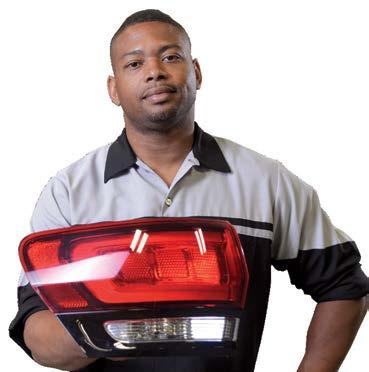

backside SPR. If it is not centered, there is a good chance of breaking the die, and they are not cheap.
A center punch tool was designed to remove SPRs. One end fits over a 3 mm installed SPR and the other end fits over a 5 mm rivet. The hardened spike is hammered on the end, forming a dimple in the backside of the SPR. Now the extraction tool spike is placed over the rivet and pushed out the front. I purchased mine from Reliable Automotive Equipment.
Next, a tool every technician should have in their tool box: a leather leadshot dolly. When hammering from the back side of the part, this dead blow, non-marring dolly will not leave any of the panel damage you would get with a traditional steel dolly. Mine is made by Majestic Hammer & Dollies, and I purchased it from online retailer Tool Source for less than $70.
It is amazing how one company changed the way we repair major panel damage. I was with Dale Matsumoto in Hawaii in 2018 when he told me about KECO. He said he could pull out large dents with glue. I thought he was crazy until I watched him use the glue tab system to pull out a large dent on a Toyota Tacoma
without removing the paint. I was at SEMA in 2018 and found Chris White, owner of KECO, in a small booth in the middle of nowhere. I bought the kit — I still have it — and proceeded to make it a Kool Tools of SEMA 2018 after using it on a number of vehicles. Six years later, a couple of OEM certification programs state that a glue dent pulling system equivalent to KECO’s is required.
In my opinion, there a number of

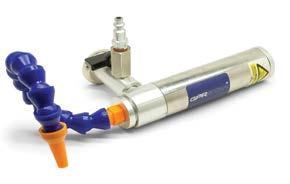


very good glue dent pulling systems, but KECO is at the top today and here is what sets them apart. KECO has three fulltime engineers designing and producing new equipment, tools and tabs. The company will do extensive testing before releasing the products. They give a lifetime warranty on most of their tabs.
Finally, they listen. They have a tool that will pull out door, fender and quarter panel lips. I pulled out a quarter panel with the leverage bar and proceeded to bend the steel part of the puller. I welded a spline on it and it worked OK, but I told the company it needed to be stronger and have a larger lip. I received the updated version and it still would bend. Again I told Chris White, and he sent a new one to try. It worked like a charm.
Enough of the background info. I want to show a couple of new KECO tools.
The first tool is the GPR Star Vortex Cooler. The biggest complaint I get from techs is it takes too much time for the glue to set up for pulling. This tool will accelerate the glue set-up time to about two minutes. It has a magnet attachment so it can be set up without anyone holding it. It only works for steel parts. The only caution is the glue can get too cold and fracture, which leads to a tab
failure. The other tool is the KECO K-Tower. There are a number of these new towers that use air to create a vacuum seal to hold the tower in place for pulling. You have the GUNIWHEEL Fast Puller XL, GYS’s AirFix Draw Aligner, Pro Spot International’s VacU-Pull, Spanesi and KECO’s.
I have tried all of the above towers, and each work as advertised. What set apart KECO from the rest is its tower articulates to the left and right, whereas the other units are secured to the base and cannot be moved once the tower arm is tightened down. The articulating tower gives the tech a more precise pull that is faster than the stationary towers. It also has a larger base, and I was told this allows for a stronger pull. KECO has a number of accessories that give the unit more versatility.
There are a number of new tools and products that will help you speed up production and improve the quality of collision repairs. If you have ideas, procedures or tools that will make a difference, send them to me and I will get it out to all the readers of Autobody News. Remember we are all in the same boat and if we can help each other, the consumer will be the winner. Have a great time at SEMA. Toby Chess can be reached via email at tcspeedster@gmail.com.





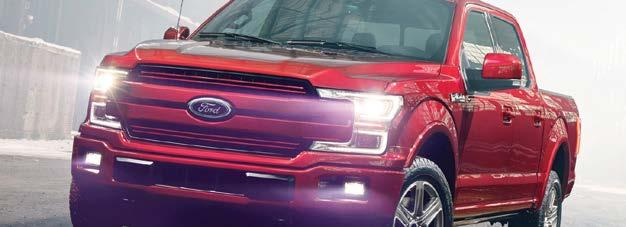













Co-President & Publisher
Nathan Gregory
Co-President & Publisher
Paul Stepanek
Editor
Abby Andrews
Contributing Writers
Mike Anderson, Brian Bradley, Elizabeth Crumbly, Paul Hughes
Stacey Phillips Ronak, Leona Scott Ben Shimkus, Cole Strandberg
John Yoswick
Advertising Sales
Paul Ropski, Norman Morano, Steve Sklenar
Office & Media Manager
Kelly Cashman
Director of Digital
Bryan Malinski
Design Director
Vicki Sitarz
Art Director
Accounting & HR Manager
Heather Priddy
Content Manager
Randi Scholtes
Serving Illinois, Iowa, Indiana, Kansas, Kentucky, Michigan, Minnesota, Missouri, Nebraska, North Dakota, Ohio, South Dakota, Wisconsin and adjacent metro areas. Autobody News is a monthly publication for the autobody industry. Permission to reproduce in any form the material published in Autobody News must be obtained in writing from the publisher.
©2024 Autobody News, LLC.
Autobody News P.O. Box 1516 Carlsbad, CA 92018 (800) 699-8251 (760) 603-3229 Fax www.autobodynews.com editor@autobodynews.com
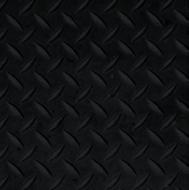

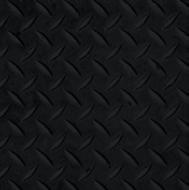





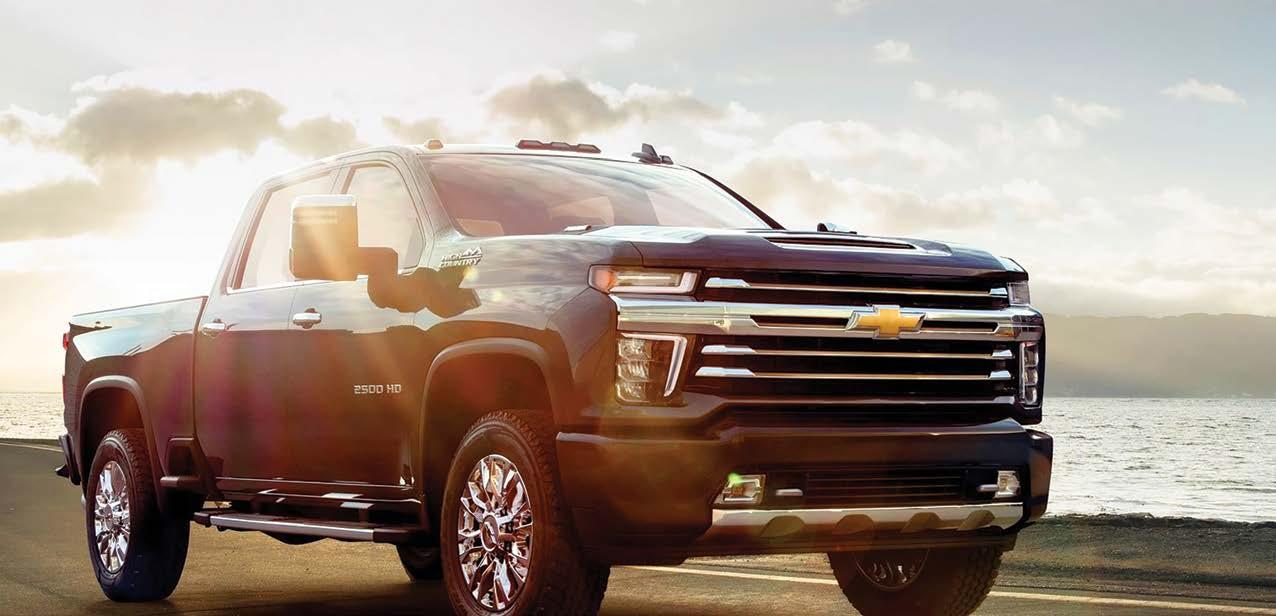





The Right to Equitable and Professional Auto Industry Repair (REPAIR) Act, (HR 906), did not receive the necessary committee markup to advance to the House floor.
The bill, which had been under consideration since last October, seeks to prohibit vehicle manufacturers from impeding a vehicle owner’s access to their vehicle’s data related to diagnostics and repair. It also would also prohibit automakers from impairing a nonOEM parts manufacturer from producing or selling compatible aftermarket parts.
According to House Energy and Commerce Committee Chair Cathy McMorris Rodgers, while the bill was not marked up, it still deserves recognition for the extensive groundwork laid by its proponents, including U.S. Rep. Neil Dunn of Florida and his team.
“I did want to mention one bill that we will not be considering today, the REPAIR Act, led by Dr. Dunn. I want to recognize the hard work that he, his staff and numerous stakeholders have done,” McMorris Rodgers said. “While we aren’t marking it up today,
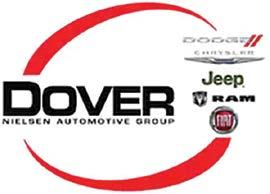
a lot of progress has been made, and I would encourage members and stakeholders to keep working together to find a path forward on this important piece of legislation.”
as hosting lawmakers at businesses and running awareness campaigns.
“The groundwork you’ve helped lay for federal right to repair legislation will be instrumental in
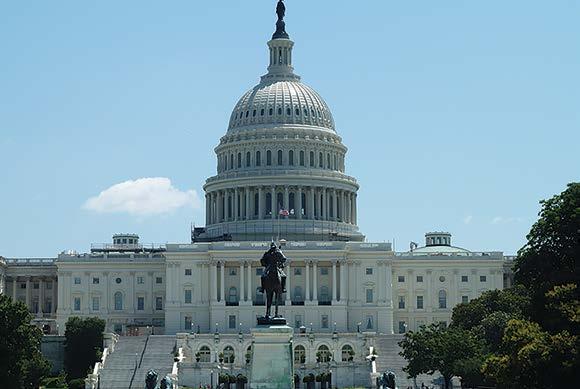
Advocates for the REPAIR Act have sent more than 100,000 letters to Congress, made more than 10,000 phone calls to representatives, and engaged in various grassroots activities such
our future success,” the Auto Care Association said in a statement on the bill.
The Auto Care Association said it plans to provide updates on next steps at the upcoming AAPEX event
in Las Vegas, NV. The bill can be reintroduced to Congress in 2025.
Opponents of the bill spoke at the Collision Industry Conference in July, including representatives of the Society of Collision Repair Specialists (SCRS) and the Automotive Service Association (ASA).
They said the organizations backing the REPAIR Act, including insurance companies and nonOEM part manufacturers and distributors, are more focused on the aspects of the bill that would give those companies the right to produce non-OEM parts and use them in repairs.
They also pointed out that SCRS and ASA already have a voluntary agreement with the Alliance for Automotive Innovation, which represents automakers, guaranteeing independent repairers have access to OEM tools and information.
Wayne Weikel, of the Alliance for Automotive Innovation, said his organization, along with SCRS and ASA, had been meeting with members of Congress to explain their position on the REPAIR Act.





Anne Berg, vice president of manufacturing for agricultural solutions at BASF, has been inducted into the Women in Manufacturing (WiM) Hall of Fame, recognizing her decades of leadership and dedication to supporting women in the manufacturing industry.



Berg, one of 10 women honored in the 2024 class, was celebrated for her influential role in promoting the advancement of women in manufacturing throughout her 28-year career at BASF, where she has held leadership roles across Germany, Belgium, Spain and the U.S. Currently, Berg oversees agricultural product manufacturing across the Americas, managing more than 500 colleagues.
Berg and her fellow inductees were selected through nominations by peers and evaluated by a judging panel from WiMís executive committee. The award recognizes women who have made substantial contributions to the industry while uplifting others.


SRSSIDEAIRBAG COUSSINGONFLABLELATÉRAL (SRS)
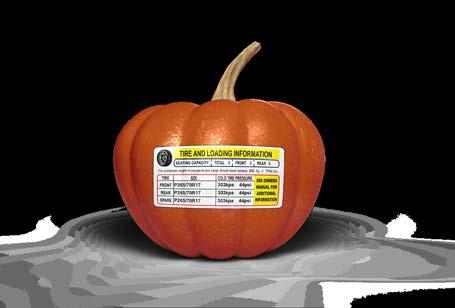
TOAVOIDSERIOUSINJURYORDEATH: •Donotleanagainstthedoor. •Donotuseseatcoversthat Seeblocksideairbagdeployment. owner’smanualformoreinformation.POURÉVITERDESBLESSURES GRAVESOUMORTELLES: •Nevousappuyezpascontrelaporte. •N’utilizezpasuncouvre-siège quipeutbloquerledéploiementdu Voircoussingonflablelatéral.lemanuelduconducteurpour deplusamplesrenseignements.
AVERTISSEMENT

Conformstoregulations: 2015
VEHICLEEMISSIONCONTROLINFORMATION
Conformstoregulations:
U.S.
U.S.EPAclass/stds: LDV/TIER2 Californiaclass/stds: PC/ULEVqualified Group: FGMXV01.80111.2L
Evap:SFI/HO2S/TWCFGMXR0095805 , OBD:
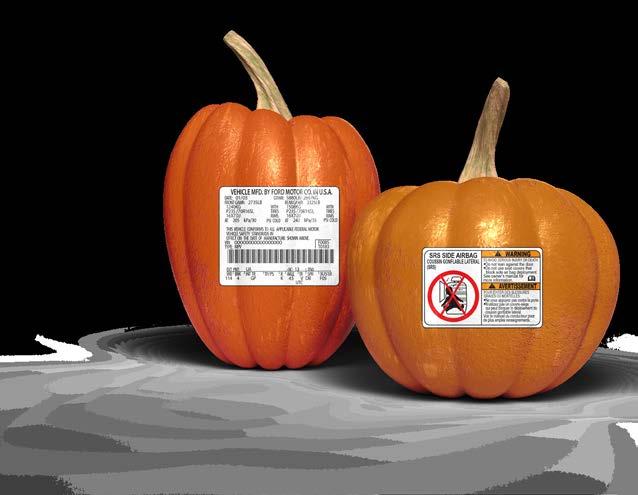

Thecombinedweightofoccupantsandcargoshouldneverexceed352kgor776lbs.
U.S.
